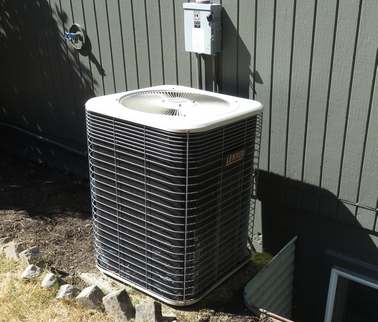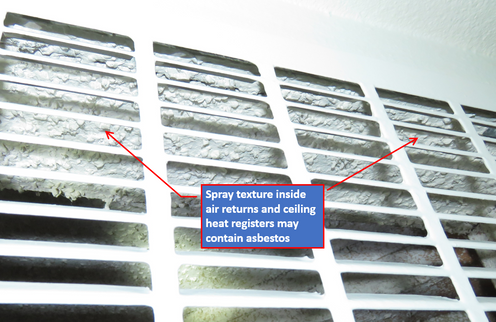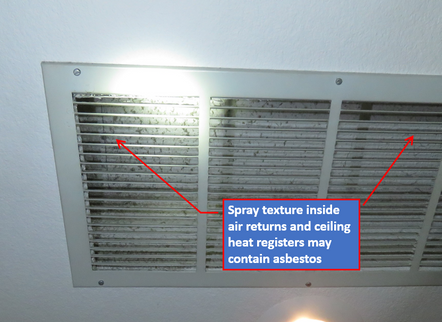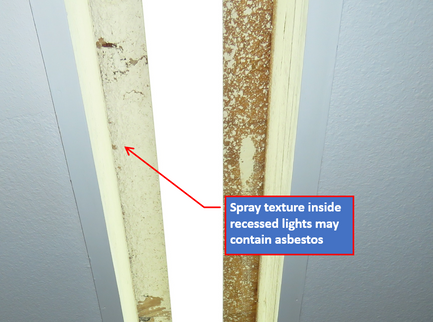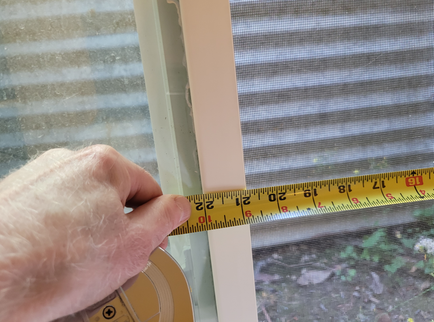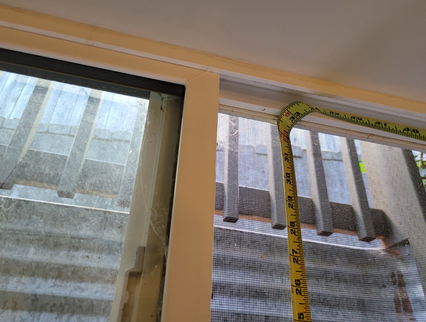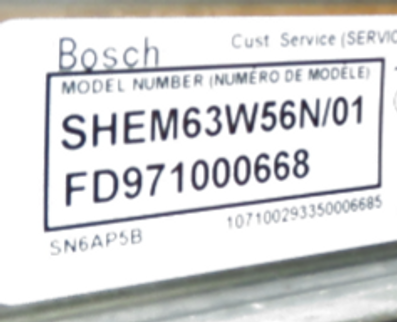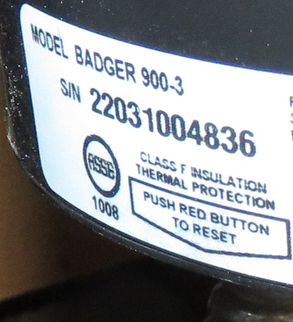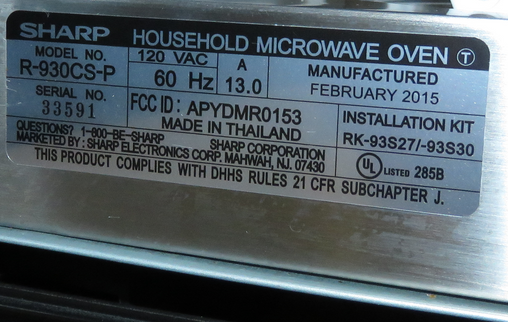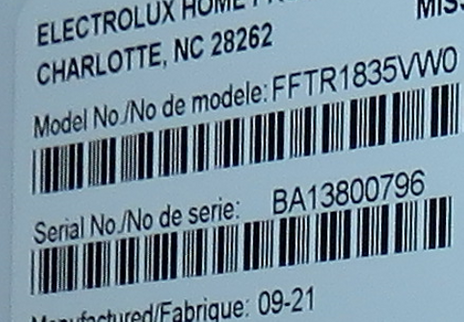The Scope and Purpose
$Purchasing property involves risk
The purpose of a home inspection is to help reduce the risk associated with the purchase of a structure by providing a professional opinion about the overall condition of the structure. A home inspection is a limited visual inspection and it cannot eliminate this risk. Some homes present more risks than others. We cannot control this, but we try to help educate you about what we don’t know during the inspection process. This is more difficult to convey in a report and one of many reasons why we recommend that you attend the inspection.
These reports are typically created with time constraints. While I do my best to proof them and send them out without errors, some typographical errors and other errors and omissions will occur. I apologize in advance, and if any of these errors result in the report being unclear, confusing or incomplete, please contact me immediately for clarification/correction. A home inspection is not an insurance policy
This report does not substitute for or serve as a warranty or guarantee of any kind. Home warranties can be purchased separately from insuring firms that provide this service.
A home inspection is visual and not destructive
The descriptions and observations in this report are based on a visual inspection of the structure. We inspect the aspects of the structure that can be viewed without dismantling, damaging or disfiguring the structure and without moving furniture and interior furnishings. Areas that are concealed, hidden or inaccessible to view are not covered by this inspection. Some systems cannot be tested during this inspection as testing risks damaging the building. For example, overflow drains on bathtubs are generally not tested because if they were found to be leaking, they could damage the finishes below. Our procedures involve non-invasive investigation and non-destructive testing which will limit the scope of the inspection.
☢️Environmental/Mold Exclusions
The reported or actual health effects of many potentially harmful, toxic or environmentally hazardous elements that may be found in building materials or in the air, soil, water in and/or around any house are varied, and, in some cases controversial. A home inspection does not include the detection, identification or analysis of any such elements or related concerns such as, but not limited to, mold, allergens, legal/illegal drugs and other biological contaminants, radon, , bed bugs, cockroaches, fleas, lice, formaldehyde, asbestos, lead, electromagnetic fields, carbon monoxide, insecticides, Chinese drywall, refrigerants and fuel oils. Furthermore, no evaluations are performed to determine the effectiveness or appropriateness of any method or system (e.g., water filter, radon mitigation, etc.), designed to prevent or remove any hazardous or unwanted materials or elements. An environmental health specialist should be contacted for evaluation of any potential health or environmental concerns. The noting of the presence of materials commonly considered to contain asbestos, formaldehyde, lead, mold etc in the inspection report, should not be construed to mean the inspector is inspecting for these things but instead should be seen as a "heads-up" regarding these materials and further evaluation by qualified professionals may be warranted.
This is just my opinion and just for you
The contents of this report are for the sole use of Simon and Simone Sample II+ and no other person or party may rely on this report for any reason or purpose whatsoever without the prior written consent of the inspector who authored the report. Any person or party who chooses to rely on this report for any reason or purpose whatsoever without my express written consent does so at their own risk and by doing so waives any claim of error or deficiency in this report.
Construction techniques and standards vary. There is no one way to build a house or install a system in a house. The observations in this report are my opinions based on my training and experience. Other inspectors and contractors are likely to have differing opinions. You are welcome to seek opinions from other professionals in the context of doing your due diligence.
When the definitions of terms used in this report are not obvious through context, refer to the legal definitions used in the modern building standards and/or manufacturer instructions.
While AI might be used for clarification and to check and clean up grammar, it is not used to generate technical information found in this report, which instead is based on applicable codes, manufacturer's instructions and other applicable standards.
The scope of this inspection
The inspection and report are intended to provide Simon and Simone Sample II+ with information regarding the condition of the systems and components of the property as observed at the time of the inspection. I examine the readily accessible systems and components using normal operating controls. The inspection is not technically exhaustive and will not identify concealed conditions or latent defects. Any comments offered by me that could be construed as over or beyond the standards of practice or the language of this contract, are offered as a professional courtesy. Refer to the Washington State, Standards of Practice and/or Pre-Inspection Agreement for additional information regarding the scope and limitations of the inspection. The Standards of Practice are linked below and describe the "minimum" standards a Licensed Washington State Home Inspector must adhere to: Standards of Practice
All homes are likely to have some faults which may range from cosmetic defects to major safety hazards. Not all defects will be found. While some minor deficiencies may be mentioned, the emphasis of this report is to inform the buyer of the property condition by detecting deficiencies or circumstances that may affect the structural integrity of the building and its components and its safe use as a residence.
You are encouraged to obtain competitive estimates for major repair needs. Safety and health issues should be addressed promptly. It is recommended that all corrective work, other than routine maintenance activities, be performed by qualified licensed contractors.
It is beyond the scope of the Standard Home Inspection to identify components within the home that may have been part of a "manufacturer's recall". Mention of specific recalls within this report must not be construed to mean that all such recalls have been identified, or that such identification is part of a Standard Home Inspection. When possible, appliance Model Numbers and Serial Numbers are included in the report and can be used to check for recall related issues. If you have any question about specific appliances, information can be found at the CPSC (Consumer Products Safety Commission) website or contact the manufacturer directly.
I recommend you obtain as much history as is available concerning this property. This historical information may include copies of any seller's disclosures, previous inspection or engineering reports, reports performed for or by relocation companies, municipal inspection departments, lenders, insurers and appraisers. You should attempt to determine whether repairs, renovation, remodeling, additions or other such activities have taken place at this property, and this report will attempt to identify such items when possible.
Ranges, Dish Washers, and Refrigerators, Microwaves (and the like) are typically tested for basic function (Do they turn on). No assertions are made as to how well they function. Clothes washers/dryers are typically not operated.
Throughout this report, comments will be made as to the presence or absence of components or parts of components. This must not be construed to mean that these components or parts of components exist (or don't exist) in concealed areas or behind finished surfaces. For example: if foundation bolting was seen in one area, it does not mean that the bolting exists (or doesn't exist) in areas that are concealed. Also if an item was noted as "not being visible," that should not be construed to mean that none of whatever was "not visible" does not exist on the premises---it just means none was noted at the time of inspection and should be seen as a "heads-up" that the concern or condition might be present but hidden, or that the conditions that would allow its presence to be known was not replicated at the time of inspection.
🚩One of the most difficult problems of home inspecting is knowing what level of importance to place on issues discovered. Too often things are unlikely to cause problems but when and if they do, significant expense can be incurred. I do my best to put things in perspective, but in the end, what I say will be based on my years of experience and knowledge. Risk must be anticipated with regard to low probability/high risk concerns.
Many of the non-narrative observations/documentation detailed in the report that are related to more "cosmetic" issues should not be construed as "all inclusive" but should instead be seen as "suggestive" or a "guideline" of conditions that may exist elsewhere in the home. It is not the focus of the report to comment extensively on cosmetic issues, but I do make note of them at times to help complete the "snap-shot" of the home at the time of inspection. For example, "nail-pops" seen in one room are likely to be seen (and should be anticipated) in other rooms even though I may not have noted them in the report.
Throughout the report I may make recommendations as to possible repairs. These recommendations are not intended to be substitutes or construed to be more appropriate than the recommendations of the professionals making the repairs. Conflicts in recommendations should be resolved prior to repairs being made.
Who should make repairs and what should their qualifications be?
Worker qualifications: In the text of the report, in some instances, I recommend that work be done by a "qualified" persons or "qualified" parties. I consider qualified parties, in licensed trades, to be those individuals who hold the necessary licenses to legally work in their profession -- licensed electricians, licensed pest control applicators, licensed plumbers, licensed HVAC professionals, licensed engineers, licensed general contractors, etc. In instances where a task may not, typically, need to be done by a person with a professional license, my recommendation is to hire an individual to do the work who is, based on past training, experience or expertise, qualified to further evaluate the condition or problem listed in the report and to then make appropriate repairs.
For additional fees, I can perform invasive inspection of concealed areas if desired. Please contact me for more information regarding this service.
💧Moisture meters used
Throughout the report, reference may be made to moisture conditions and percentages of moisture content. These moisture readings are obtained by the use of a Protimeter, Surveymaster Moisture Meter or the Extech MO55 or the Tramex MEP. Generally moisture meters are used "qualitatively" as opposed to "quantitatively." This means that actual percentages shown by meter are meant to be indicative of moisture as compared to likely dryer areas. False positives are not always possible to eliminate entirely, but moisture meters can give good guidance.
🌈Infrared
I routinely use infrared cameras when helpful but typically only qualitatively, so specific temperatures captured by the camera should not be seen as a quantitative analysis of surfaces but only used as a guide to thermal differences that would then be verified visually, by moisture meter or more invasive investigation.
Your participation is requested
Your presence is requested during this consultation. A written report will not substitute for all the possible information that can be conveyed verbally by a shared visual observation of the conditions of the property. If you were not present, you are urged to contact me for a verbal consultation. I am happy to do a zoom meetup to go through areas of concern in the report. If you choose not to be present or contact me after, I cannot be responsible for misinterpretation of the report.
How to Read This Report
Getting the Information to You
This report is designed to deliver important and technical information in a way that is easy for anyone to access and understand. If you are in a hurry, you can take a quick look at the Summary Page and quickly get critical information for important decision making. However, we strongly recommend that you take the time to read the full Report, which includes digital photographs, captions, diagrams, descriptions, videos and hot links to additional information.
The best way to get the layers of information that are presented in this report is to read your report online, which will allow you to expand your learning about your house. You will notice some words or series of words highlighted in blue and underlined – clicking on these will provide you with a link to additional information.
For the most reliable viewing experience, I recommend viewing the report on as large a screen as practical, as much detail can be lost on small devices like smart phones. For similar reasons, reports should only be printed in color to retain as much detail as possible and minimize misinterpretation.
This report can also be printed on paper or to a PDF document.
Chapters and Sections
This report is divided into chapters that parcel the home into logical inspection components. Each chapter is broken into sections that relate to a specific system or component of the home. You can navigate between chapters with the click of a button on the left side margin.
Most sections will contain some descriptive information done in black font. Observation narratives, done in colored boxes, will be included if a system or component is found to be significantly deficient in some way or if we wish to provide helpful additional information about the system or the scope of our inspection. If a system or component of the home was deemed to no noteworthy defects or was in some way operational, there may be no narrative comments in that section and it may simply describe the components.
Observation Labels
All narrative observations are colored, numbered and labeled to help you find, refer to, and understand the severity of the observation.
- 💡ELECTRICAL CONCERN:Electrical concerns should be evaluated and repaired/replaced/improved as deemed necessary by a licensed electrical contractor.
- 🪠PLUMBING CONCERN:Plumbing concerns should be evaluated and repaired/replaced/improved as deemed necessary by a licensed plumber.
- 🔥❄️HVAC CONCERN:HVAC concerns should be evaluated and repaired/replaced/upgraded as deemed necessary by a licensed HVAC contractor.
- 🖱APPLIANCE CONCERN:When Kitchen and Laundry appliances need repairs/replacement, the work should be done by qualified parties, trained in their installation. Sometimes this work requires licensed plumbers and licensed electrical contractors to do their portions.
- Repair/Replace Item:Repair and maintenance items noted during inspection. Please note that some repair items can be expensive to correct such as re-finishing hardwood floors, but are considered simply repair items due to their cosmetic nature.
- Repair/Maintenance Item:Items "technically" wrong and/or in need of repairs, but where repairs might cause more damage than is warranted or where no harm may ever come from being left the way it is. Such concerns need ongoing monitoring and you should anticipate hidden damage when/if repairs become warranted.
- Due Diligence Item:Observation such as a buried oil tank that may require further investigation to determine the severity and / or urgency of repair.
- Improvement Item:Observations that are not necessarily defects, but which could be improved for safety, efficiency, or reliability reasons.
- Maintenance Items:These are repair items that should be considered "routine home ownership items," such as servicing the furnace, cleaning the gutters or changing the air filters in the furnace.
- Efficiency & IAQ:Denotes observations that are needed to make the home more energy efficient as well as to bring the home up to modern insulation standards. This category typically includes windows and insulation. Other items, such as lighting and appliances, are not inspected for their energy status.
- Description:Detailed description of various aspects of the property noted during the inspection.
- 🚩:Detailed description of various aspects of the property with an aspect of safety present.
- Conducive Conditions:Detailed description of various aspects of the property related to wood destroying organisms and/or conducive conditions.
- 🐞:General information related to Wood Destroying Organisms or conducive conditions
- Monitor:Items that should be watched to see if correction may be needed in the future.
- Future Project:A repair that may be deferred for some time but should be on the radar for repair or replacement in the near future.
- 📝Notes to Self:SHOWS AT BOTTOM AND DOES NOT PRINT TO REPORT It refers to aside information and /or any comments elaborating on descriptions of systems in the home or limitations to the home inspection, and any ideas specifically for the inspector's use later.
Pest Inspections
All items with the bug emoji (🐞) are part of a structural pest inspection. When I include a structural pest inspection as a part of the scope of your home inspection, you can distinguish pest inspection items by this emoji. You can also go to the pest inspection summary page to see a summary of the items that are part of a pest inspection.
📙REPORT SUMMARY
FINDINGS
🌻The inspection findings are summarized below. They are generally listed by importance with substantial safety hazard at the top in red or orange, but also organized by the trade that will be called to address the issue. These can be life safety hazards or issues that could result in a major short-term expense to correct or possible significant expense in the future if not addressed. This summary is not a complete listing of the findings in the report and reflects the opinion of the inspector. It should be considered highly likely there will be other issues you would like in the summary, and you should add these as desired. Please review all of the report pages. All repairs must be done by the applicable qualified, licensed & bonded trades or professionals. I recommend obtaining receipts and warranties for the work done (including copies of any necessary permits). 🌻 Many of these Narrative comments in the Summary have pictures and web links that better clarify the issues. Please refer to their place in the report body for additional clarification/information. Lack of information under any given component only means that, in my opinion, there was nothing in the body of the report that warranted posting it to the Summary. There will certainly be valuable information under each applicable component in the body of the report.💡ELECTRICAL CONCERNS
- E1-1 ⚡ELECTRICAL - Service Equipment--Left Panel:
ELECTRICAL SERVICE EQUIPMENT:
There were issues documented below in bulleted lists, narratives and/or pictures related to the electrical service equipment that should be evaluated, repaired or replaced as deemed necessary by the licensed electrical contractor.
SPLITTER/CT CAN:
- Some Utility Company Seals missing. When the "splitter box" or "CT Can" seals are missing, it is sometimes an indication that alterations to the Electric System have been made. If it has not been re-sealed it may be an indication that the electrical permit was never had a final inspection or that the work was done without an electrical permit. I recommend that the power company be called to install proper seals (which they will usually do at no charge)
PANEL AGE
- more than 40 years, and when panels get this old, most authorities consider them to be approaching their useful life, but many perform well for considerably longer.
🛑 Safety 🔧 Maintenance (as needed) 👁🗨 Monitor annually 🔍 Due Diligence
- E1-2 ⚡ELECTRICAL - Electrical Grounding System (EGS):
ELECTRICAL SYSTEM GROUNDING:
There were issues documented below in bulleted lists, narratives and/or pictures related to the building's grounding system that should be evaluated and repaired as deemed necessary by a licensed electrical contractor.
METAL WATER PIPE ELECTRODE:
- Water pipe not supplemented. When the metal water pipe is used as a grounding electrode it is required to be supplemented with another grounding electrode, typically two ground rods unless one rod measures less than 25 ohms to earth. This can be repaired in the context of other electrical repairs at the building
ROD ELECTRODE:
- Ground rod not seen--may be buried
🛑 Safety 🔧 Maintenance (as needed) 👁🗨 Monitor annually 🔍 Due Diligence
- E1-3 ⚡ELECTRICAL - Electrical Bonding of Metallic Systems:
ELECTRICAL SYSTEM BONDING:
There were issues documented below in bulleted lists, narratives and/or pictures related to the bonding of metallic systems of a building. Bonding is important for electrical safety to keep grounded metal components at the same potential. I recommend all aspects of required bonding be evaluated and repaired as deemed necessary by the licensed electrical contractor. The items below, should be seen as a guide and not necessarily all inclusive but more representative.
GAS PIPE BONDING:
- not visible. When metal gas pipes are installed in the building, current standards require that they be properly bonded to the electrical grounding system. The licensed electrical contractor should insure that all metal piping is properly bonded to the building electrical grounding system.
YELLOW CSST:
- 🚩not bonded with #6 copper minimum. Proper bonding should be installed.
LOW VOLTAGE SYSTEM BONDING:
- was not determined
INTERSYSTEM BONDING TERMINAL:
- Upgrade recommended. Connecting all the grounds of all the various low voltage systems present on the property, together at one location, helps keep all the systems at the same voltage potential in the event of static charge surges on the system (lighting etc). An Inter-system Bonding Terminal (IBT) would be required by modern standards and can be easily added by the licensed electrical contractor in the context of other electrical work at the home. This installation can help protect sensitive electronic equipment in the home.
🛑 Safety 🔧 Maintenance (as needed) 👁🗨 Monitor annually 🔍 Due Diligence
- E1-4 ⚡ELECTRICAL - Appliance Disconnects:
AIR CONDITIONER DISCONNECT:
There were issues documented below in bulleted lists, narratives and/or pictures related to the appliance disconnect:
CONDITIONS:
- Liquid type conduit
ELECTRICAL CONNECTIONS:
- NM run past building wall, repairs can be made in the context of replacing the unit. Wire rated for exterior would be run from a junction box where the wire comes through the siding and then run up to the disconnect.
I recommend evaluation and repairs by a licensed electrical contractor when they are at the home making other electrical improvements.
🛑 Safety 🔧 Maintenance (as needed) 🔍 Due Diligence
- E1-5 ⚡ELECTRICAL - Distribution Wiring:
DISTRIBUTION WIRING CONCERNS:
There were issues documented below in bulleted lists, narratives and/or pictures related to the distribution wiring in the home that should be evaluated and repaired as deemed necessary by the licensed electrical contractor.
GENERAL CONCERNS:
- Being used in a "permanent" manner. Extension cords are not approved for permanent installation. In some instances extension cords can be allowed but typically come with the requirement they be unplugged when not in use. I recommend that the licensed electrical contractor provide a proper receptacle for the appliance.
- wiring to the on-demand water heater
There is wiring to the front entryway light that is not properly in conduit and vulnerable to physical damage. There is also wiring under the deck that goes to the lights on the west side that has become disconnected. All this exterior wiring should be verified as approved for outdoor installation and not just regular NM cable.
🛑 Safety 🔧 Maintenance (as needed) 👁🗨 Monitor annually ➕ Upgrade 🔍 Due Diligence
- E1-6 ⚡ELECTRICAL - Receptacle Outlets:
RECEPTACLE OUTLET CONDITIONS:
There were issues documented below in bulleted lists, narratives and/or pictures related to the receptacles in the home:
RECEPTACLES GENERAL:
- no longer adequate hold plugs in place, and some locations. Loose receptacles, when discovered, should be replaced.
- broken box at the north receptacle at the front entryway
I recommend evaluation and repairs by a licensed electrical contractor. Other similar conditions should be anticipated.
🛑 Safety 🔨Repair 🔧 Maintenance 👁🗨 Monitor annually ➕ Upgrade 🔍 Due Diligence
- E1-7 ⚡ELECTRICAL - 💡Lighting Outlets:
LIGHTING OUTLET CONDITIONS:
There were issues documented below in bulleted lists, narratives and/or pictures related to the lighting components in the home including:
FIXTURES:
- not functional at Main bathroom
- burned-out bulbs
- not functional at laundry room
SWITCHES:
- some "worn"/ "loose" switches seen
- most of the toggle type switches could benefit from replacement and one dimmer is missing its knob
- damaged/not functional at switch for dining room light
EXTERIOR LIGHTS:
- not functional at front entryway
While the pictures below document some of these concerns, I recommend all lighting locations be evaluated and repaired as deemed necessary by a licensed electrical contractor.
🛑 Safety 🔧 Maintenance (as needed) 👁🗨 Monitor during use ➕ Upgrade 🌲 Efficiency / IAQ 🔍 Due Diligence
- E1-8 ⚡ELECTRICAL - GFCI/AFCI DEVICES:
AFCI/GFCI INFORMATION:
There were issues related to the AFCI's and GFCI's. These bulleted lists, narratives and/or pictures document some of those concerns, but not likely all of them. I recommend evaluation by the licensed electrical contractor in the context of other electrical repairs at the home. Observations/recommendations/issues include;
ABOUT AFCI'S:
- Required for receptacle changes. Current standards also require that whenever receptacles are upgraded that they need to be given AFCI protection when they are replaced in any location that currently requires AFCI protection.
- Older homes can benefit. According to the NEC (National Electric Code): "Older homes are statistically more vulnerable to electrical fires. Extra protection for older homes is provided by the gradual replacement, over time, of non-AFCI-protected receptacles with new AFCI-protected ones." I recommend, for improved safety, that the home be upgraded by a licensed electrical contractor to AFCI protection wherever currently required.
ABOUT GFCI'S:
- Older homes can benefit. Currently all 125-volt & 250-volt, single-phase, 15- and 20-ampere receptacles installed in the following locations shall have ground-fault circuit interrupter protection: bathrooms, garages, detached non-habitable buildings, outdoors, crawl spaces, unfinished or finished basements, kitchen countertop receptacles, within 6 feet of all sinks, boathouses, within 6 feet of a tub or shower, laundry areas, dishwasher branch circuit, crawl space lighting outlets. The home appeared to be wired to current requirements, however not every outlet was checked. Also exterior HVAC under 60 amps require GFCI protection. According to the NEC (National Electric Code): "Older homes are statistically more vulnerable to shocks related to ungrounded circuits. Extra protection for older homes is provided by replacement of ungrounded wiring and installation of GFCI protection.
- Missing--indicates lack of permits. Given the date of the electrical changes to the home, I would consider AFCI protection where currently required as "missing." This is consistent with electrical work being done without a permit. I recommend that all electrical work be evaluated by a licensed electrical contractor and that all required provisions be met.
🛑 Safety 🔧 Maintenance (as needed) 👁🗨 Monitor monthly ➕ Upgrade 🔍 Due Diligence
- E1-9 ⚡ELECTRICAL - GFCI Protection:
GFCI PROTECTION CONDITIONS:
There were issues documented below in bulleted lists, narratives and/or pictures related to the kitchen, garage, bathroom and laundry GFCI's. The pictures and bulleted list below document some of those concerns, but not likely all of them. I recommend evaluation and repairs by the licensed electrical contractor in the context of other electrical repairs at the home. Noted concerns include;
KITCHEN GFCI LOCATIONS:
- no GFCI protected receptacles in Kitchen. The kitchen countertop receptacles are not currently GFCI protected. I recommend that as a safety upgrade that a licensed electrical contractor change the receptacles to GFCI type receptacles or if possible that the breakers for these circuits be changed to Dual Function (AFCI/GFCI) Combination type breakers as would be currently required. Additional locations that required GFCI protection should also be upgraded, like Dishwasher, refrigerator receptacles within 6 feet of the sink and any other locations deemed necessary by the licensed electrical contractor.
LAUNDRY:
- receptacles at countertops not GFCI protected
GARAGE:
- Some Garage Receptacles that were tested, tested as NOT GFCI protected. Current requirements call for ALL 120 volt 15 amp and 20 amp receptacles in the garage be GFCI protected. Upgrading to current standards is recommended for improved safety. Some of the Garage receptacles are not GFCI protected at the following locations:
- receptacles
- automatic door opener
- furnace
- water heater
EXTERIOR/MISCELLANEOUS:
- weather resistant type receptacles missing
The graphic below shows current residential requirements for GFCI protection and in addition to items described above, it is prudent for the licensed electrical contractor to verify/install GFCI protection at all currently required locations.
🛑 Safety 🔨Repair 🔧 Maintenance 👁🗨 Monitor monthly ➕ Upgrade 🔍 Due Diligence
- E1-10 ⚡ELECTRICAL - ☠️Carbon Monoxide Detection Systems:
☠️CARBON MONOXIDE CONCERNS:
The CO Detectors of the home had the following concerns. The bulleted lists, narratives and/or pictures below document some of those concerns, but not likely all of them. I recommend evaluation/repairs by the licensed electrical contractor or other qualified parties following manufacturer's instructions.
CO DETECTORS:
- 🚩Missing. I recommend that homeowner/handy-person install carbon monoxide alarm/detector according to the manufacturers specifications wherever missing. These alarm/detectors are currently required in all homes. They are currently required on each floor level of the home and outside each sleeping area of the home. A plug-in type detector with digital readout is preferred. They are required to be maintained to the manufacturer's instructions by the tenant of the home. Sometimes there are combination smoke/carbon monoxide alarm/detectors in the home (verify with builder). Carbon monoxide alarm/detectors had the following issues and/or were missing outside the sleeping room areas:
- sleeping rooms at the basement level
- sleeping rooms at main floor level
🛑 SAFETY 🔧 Maintenance 👁🗨 Monitor monthly ➕ Upgrade 🔍 Due Diligence
- E1-11 ⚡ELECTRICAL - 🔥 Smoke Alarm/Detection Systems:
SMOKE ALARM CONCERNS:
There were issues documented below in bulleted lists, narratives and/or pictures related to the smoke alarms in the home and proper evaluation/repairs by a licensed electrical contractor or other qualified party should be made.
SMOKE ALARM/DETECTOR:
- smoke alarms should be installed
- 🚩past expected life. Some of the smoke alarms are likely past their expected life. I recommend replacement of all of the alarms, unless it can be shown they are less than 10 years old. If the alarms are more than 10 years old they should all be replaced by a qualified party throughout the home with photo-electric type alarms.
- 🚩None seen. I recommend installation of smoke alarms for improved safety. Smoke alarms were not found in the sleeping rooms or other rooms that could be sleeping areas or at other required locations around the home:
- inside of basement bedrooms
- inside of main floor bedrooms
- Likely Ionization Type. Smoke alarm technology is evolving and current wisdom is recommending that only Photoelectric smoke alarms be installed in the building due to the nuisance tripping and other human factors involved with misuse and maintenance associated with Ionization type smoke alarms. It is not possible in the context of the building inspection to determine why types of alarms are installed in the building. You are encouraged to install and maintain any type of alarm in the building and you are encouraged to upgrade alarms to photoelectric type alarms. See the following link for a discussion of Ionization vs. Photoelectric Alarms: Photo-Electric Smoke Alarms and Silent Alarms; Deadly Differences.
🛑 SAFETY 🔧 Maintenance 👁🗨 Monitor monthly ➕ Upgrade 🔍 Due Diligence
🪠PLUMBING CONCERNS
- P-1 🚿PLUMBING - Public Utility Water Supply:
CONDITIONS RELATED TO THE WATER SUPPLY:
There were issues documented below in bulleted lists, narratives and/or pictures related to the the water supply system. The water meter is typically the property and responsibility of the water utility but there are some maintenance items the homeowner can take care of. Maintaining the meter accessible and clear of debris both inside the compartment and outside the compartment is important for proper access in an emergency. The below conditions related to the house water supply should be evaluated, repaired and maintained as deemed necessary by a licensed plumber.
WATER PRESSURE:
- 🚩Water pressure above 80 psi. The water pressure tested above 95 psi at the west outside faucet. Since there is a pressure reducing valve present, the valve should be adjusted/repaired as necessary. When pressure reducing valves are installed expansion tanks should be installed in the system as well to allow for expansion and contraction within the system. Excessive water pressure can make piping vulnerable to leakage and may be harmful to valves and fittings.
- Accurate water pressure reading not possible due to leaks at valve(s)
MAIN WATER LINE AND PROTECTION:
- Not visible--type and size of pipe not determined
PRESSURE REGULATOR:
- Tank--or Thermal Expansion Device--Missing/ Required
BACK-FLOW PROTECTION:
- Present but no punch card. There is a back-flow device present at the SW corner of the home. These valves are required to be inspected annually and they prevent dirty sprinkler system water from being pulled back into the city water supply. These are important safety devices that require maintenance. The inspection record punch card was not seen. I recommend inspection of the device by an approved back-flow testing company unless verification of inspection can be provided.
There is currently no way to drain the irrigation system and the exposed pipe at the SW corner of the home is subject to freezing. Adding a drain valve to the system is recommended.
🛑 Safety 🔧 Maintenance (annual) 👁🗨 Monitor annually 🔍 Due Diligence
- P-2 🚿PLUMBING - 💧Water Supply Piping Inside the Building:
INTERIOR SUPPLY PLUMBING:
There were issues documented below in bulleted lists, narratives, and/or pictures related to the Water Supply Plumbing. The below conditions should be evaluated, repaired and maintained as deemed necessary by a licensed plumber.
WATER SUPPLY PIPING:
- Piercing valves present. Piercing valves or saddle fittings were noted on the supply piping system. These are frequently used to deliver water to the refrigerator or ice maker. These types of plumbing connections are prone to leaking/failure. As an upgrade, I recommend installation of a more reliable "T" with shut-off. Typically these valves, even while readily available and commonly used, have no "listing" for use in water supply systems.
- the piercing valve for the hot water tap was located under the kitchen sink.
COPPER PIPE:
- green corrosion on joints typical of flux, considered cosmetic
- 🚩Possibility of pipes with Leaded Solder. The information immediately below regarding copper piping can be ignored if it can be determined that the piping was replaced after 1986 (typically). Into the late 1980's copper pipe connections were soldered with solder containing some lead. Most water supplies are not considered corrosive enough (either too acidic or too alkaline) to release the lead into the water so as to pose a health risk. Only testing of the water by an EPA certified lab can determine the presence of lead. Lead is a known health hazard, especially for children. Laws were passed in 1985 prohibiting the use of lead in solder, but prior to that solder normally contained lead. Evaluating for the presence of lead in this structure is not included in this inspection. The client (s) should consider having a qualified lab test for lead, and if necessary take steps to reduce or remove lead from the water supply, including:
- 1. Flush water taps or faucets. Do not drink water that has been sitting in the plumbing lines for more than six hours.
- 2. Install appropriate filters at points of use.
- 3. Use only cold water for cooking and drinking. Hot water dissolves lead more quickly than cold water.
- 4. Use bottled or distilled water.
- 5. Treat well water to make it less corrosive.
- 6. Replace plumbing pipes
- Additional information can be found at: http://www.epa.gov/safewater/lead/index.html
INSULATION GARAGE SPACE HOT:
- not insulated
INSULATION GARAGE SPACE COLD:
- not insulated
🛑 Safety 🔧 Maintenance (annual) 👁🗨 Monitor annually 🔍 Due Diligence
- P-3 🚿PLUMBING - West Frost Free/Anti-Siphon Outside Faucet:
FROST-FREE/ANTI-SIPHON OUTSIDE FAUCET:
There were issues documented below in bulleted lists, narratives, and/or pictures related to the outside faucet that should be evaluated and repaired as deemed necessary by a licensed plumber.
FROST-FREE ANTI-SIPHON:
- Leaking of valve stem during back-pressure-test noted. It is common for hose faucets to leak around the valve stem resulting in the wasting of water. Usually this can be corrected by tightening the valve stem nut slightly . I recommend further evaluation/repairs by a licensed plumber.
- Frost Cover. The insulated covers for the outside faucets are not necessary and can mask small leaks that could freeze and fill up the cover damaging the valve. I recommend not using these covers.
🛑 Safety 🔧 Maintenance (as needed) 👁🗨 Monitor during use 🔍 Due Diligence
- P-4 🚿PLUMBING - Waste Pipe/Drains/Vents:
BUILDING DRAINAGE SYSTEMS:
There were issues documented below in bulleted lists, narratives, and/or pictures related to the drainage system of the home: I recommend evaluation, repairs and maintenance as deemed necessary by a licensed plumber (or in some cases by other qualified parties).
PUBLIC SEWER:
- 🚩Sewer scoping was done. Proper function of the house drain to the city sewer is beyond the scope of this inspection. I recommend that proper function be both determined and maintained. The best method to verify function is to have them inspected with a remote camera device. At the time of inspection the interior plumbing drains were scoped by a scoping company.
- At the time of inspection some plumbing drains were scoped by a scoping company. See their report for pipe condition.
FLOOR DRAINS:
- function not determined
- 🚩Presence of water in trap not determined due to lack of access. At the time of inspection the trap for the floor drain was not evaluated as to whether there was water in it or not (no access). I recommend verification of water in the trap and providing a means of keeping water in the trap. There are oil-like trap seal products available or mechanical type trap primers can be installed.
- letting the condensate drain from the furnace act as a trap primer is another possible way to keep water in this trap.
- determining their presence is sometimes difficult but are usually not present on drains of this age home.
- trap seal products, that prevent the evaporation of trap water, are also available.
🛑 Safety 🔧 Maintenance (as needed) 👁🗨 Monitor annually 🔍 Due Diligence
- P-5 🚿PLUMBING - Gas Piping at Property:
GAS PIPING:
There were issues documented below in bulleted lists, narratives, and/or pictures related to the following concerns were noted related to the gas piping on the property. I recommend evaluation, repairs and maintenance as deemed necessary by a licensed plumber.
BLACK STEEL AND GALVANIZED PIPE:
- Pipe not sealed where it enters building
- Piping not adequately supported. There is gas pipe that is not adequately supported and subject to physical damage. All gas pipe is required to be supported such as to limit movement that could break joints or loosen unions etc. I recommend evaluation/repairs to the inadequately supported pipe at:
- run to the furnace
YELLOW CSST:
- see electrical section of report regarding bonding
🛑 Safety 🔧 Maintenance (as needed) 👁🗨 Monitor annually 🔍 Due Diligence
- P-6 🚿PLUMBING - Gas Tankless Water Heater:
GAS TANKLESS WATER HEATER:
There were issues documented below in bulleted lists, narratives, and/or pictures related to the water heater has the conditions discussed below that should be further evaluated and repaired as deemed necessary by a licensed plumber (or in some cases, repairs can be made by other qualified parties):
WATER HEATER CONDITIONS:
- ❌Approaching its expected life. The water heater at more than 14 years old is approaching the end of its useful life. I recommend factoring replacement of the heater by a licensed plumber in the near future.
INSTALLATION INSTRUCTIONS:
- Instructions. Newer installations of water heaters require the installation and maintenance instructions to be located at the furnace. None were noted at the time of inspection and they can typically be found on line by searching the model number of the unit:
- none seen
ELECTRICAL CONNECTIONS:
- extension cord present
DRIP LEGS/SEDIMENT TRAPS:
- none present. Many appliances require sediment traps located as close to the appliance as practical. None is present on this appliance and I recommend evaluation/repairs as deemed necessary by a licensed plumber in the context of other plumbing repairs at the home.
PRV:
- Present
DRAIN:
- drain pipe missing. There is currently no drain on the water heater TPRV (Temperature Pressure Relief Valve) as currently required. The drain should terminate at the exterior of the building at a location that can be monitored and it should terminate between 24" and 6" of the ground.
🛑 Safety 🔧 Maintenance (as needed) 👁🗨 Monitor annually 🔍 Due Diligence
- P-7 🚿PLUMBING - 💣Thermal Expansion & Water-hammer Control:
THERMAL EXPANSION DEVICES:
There were issues documented below in bulleted lists, narratives, and/or pictures related to the thermal expansion device that should be further evaluated and repaired as deemed necessary by a licensed plumber:
THERMAL EXPANSION DEVICES:
- no means of backflow protection was located
- 🚩Expansion Tank is not present but is required by current standards when any time of back-flow prevention is installed on the system. Water heaters installed after the year 2006 in most jurisdictions (and certainly this one) require installation of an expansion tank (or expansion device) on the plumbing system whenever there is any type of back-flow valve, pressure reducing valve ahead of the water heating equipment. Missing thermal expansion devices can be an indication of work done by unqualified individuals, without proper permits or that it has been verified that there is no other means of back flow prevention including the water meter.
🛑 Safety, 🔧 Maintenance (as needed), 👁🗨 Monitor during use and 🔍 Due Diligence
- P-8 🚿PLUMBING - Yard Irrigation Systems:
YARD IRRIGATION SYSTEM:
While Irrigation Systems are generally excluded from inspections, some components will be reported on as a courtesy. Have the installation evaluated and maintained as deemed necessary by a qualified irrigation system installation contractor or licensed plumber where applicable.
🔧 Maintenance (as needed) 👁🗨 Monitor during use 🔍 Due Diligence
🔥❄️HVAC CONCERNS
- HC-1 🔥HEATING / ❄️COOLING - High Efficiency Gas Furnace:
HIGH-EFFICIENCY GAS FURNACE CONDITIONS:
There were issues documented below in bulleted lists, narratives and/or pictures related to the High-Efficiency Gas furnace that should be further evaluated, repaired and maintained as deemed necessary by the licensed HVAC contractor.
CONDITIONS/ACCESS:
- poor access due to storage
COMPARTMENT:
- dusty
- rusting
GASPIPE AND SHUT-OFF:
- sediment trap missing
🛑 Safety 🔧 Maintenance (as needed) 👁🗨 Monitor annually 🌲 Efficiency / IAQ 🔍 Due Diligence
- HC-2 🔥HEATING / ❄️COOLING - Air Conditioner:
AIR CONDITIONER:
There were issues documented below in bulleted lists, narratives and/or pictures related to the AC/HP system that should be further evaluated and repaired as deemed necessary by the licensed HVAC contractor.
BASIC FUNCTION:
- ❌End of life. The cooling at more than 25 years old has reached, or is approaching, the end of its useful life.
🛑 Safety 🔨Repair 🔧 Maintenance 👁🗨 Monitor monthly ➕ Upgrade 🌲 Efficiency / IAQ 🔍 Due Diligence
- HC-3 🔥HEATING / ❄️COOLING - Heating and Cooling Distribution:
HEATING SYSTEM DISTRIBUTION:
There were issues documented below in bulleted lists, narratives and/or pictures related to the heating system that should be evaluated, repaired and maintained as deemed necessary by a licensed HVAC contractor experienced in these types of heating systems.
ROOMS WITH NO HEAT:
- Bathroom. The 1/2 Bathroom at upper hallway has no source of heat. While not required by current standards, it is best practice to have a heat source installed to help control moisture issues and provide comfort. There are several options to accomplish this including, in wall forced air, ceiling forced air, ducted from forced air furnace, radiant floor, radiant wall, radiant ceiling. Space is often a limiting factor. I recommend installation of a heat source by a qualified party.
DUCT CLEANING:
- 🚩EVIDENCE OF A NEED FOR CLEANING/REPLACEMENT: The heating system duct work could benefit from invasive cleaning:
- areas exposed to spray texture known to contain small amounts of asbestos
🛑 Safety 🔨Repair 🔧 Maintenance 👁🗨 Monitor ➕ Upgrade 🌲 Efficiency / IAQ 🔍 Due Diligence
🖱APPLIANCE CONCERNS
- K-2 🥧Kitchen - Dishwasher:
DISHWASHER:
There were issues documented below in bulleted lists, narratives and/or pictures related to the dishwasher that should be addressed by a qualified appliance installation company, plumber, or other qualified party.
CONDITIONS:
- ❌End of life. At 23 years old, the Dishwasher, while operational, has reached the end of its expected life. I recommend factoring replacement of the dishwasher in the near future by a qualified appliance installation company. Repairs to appliances of this age are not considered cost effective. I recommend verifying this age as it looks newer than this.
AIR GAP:
- Johnson Tee not being used/abandoned. The dishwasher drain line should incorporate a proper air gap device. I has a Johnson Tee type that is not being used. The cap at the exterior adjacent to the dishwasher above the flood rim of the sink is a type of air gap device called a Johnson Tee. When the Johnson Tee is abandoned, buried traps can dry out and therefore it important that the device be properly abandoned to prevent sewer gases from entering the home. The drain connections under the dishwasher (or wherever it is located) should be properly capped and the cap at the exterior properly sealed (it likely is given the outdoor cap is still present).
- Johnson Tee exterior termination capped. Usually venting of these exterior caps can be achieved by drilling several small holes in the cap or installation of proper termination cap.
🛑 Safety 🔨Repair 🔧 Maintenance 👁🗨 Monitor monthly ➕ Upgrade 🌲 Efficiency / IAQ 🔍 Due Diligence
- K-3 🥧Kitchen - Hot Water Tap:
HOT WATER TAP:
There were issues documented below in bulleted lists, narratives and/or pictures related to the Hot Water Tap. It had the following conditions and may be past its expected life. I recommend factoring replacement of the unit.
CONCERNS:
- ❌End of life. The hot water tap is no doubt at the end of its expected life. Factoring replacement of this appliance is recommended as desired. There is typically no harm in using the unit until it fails but leaking is common and monitoring is advised.
- not functional at time of inspection
- not plugged in
🛑 Safety 🔧 Maintenance 👁🗨 Monitor monthly 🔍 Due Diligence
- K-4 🥧Kitchen - Cooktop:
RANGE/COOKTOP:
There were issues documented below in bulleted lists, narratives and/or pictures related to the cooktop:
CONCERNS:
- ❌End of life for cooktop. At 35 years old, the cooktop, while operational, has reached the end of its expected life. I recommend factoring replacement of the cooktop in the near future by a qualified appliance installation company. Repairs to appliances of this age are not considered cost effective.
- burner knobs not legible
VENT PIPE TERMINATION:
- function of cap damper not determined
- 🚩Terminates under south deck. Termination of vents under decks where they can't be maintained is not allowed. The termination cap should have a vent flap to protect against back drafting of cold air into the vent.
I recommend evaluation and repair by a qualified party.
🛑 Safety 🔧 Maintenance 👁🗨 Monitor 🔍 Due Diligence
- K-5 🥧Kitchen - Oven:
OVEN:
There were issues documented below in bulleted lists, narratives and/or pictures related to the oven:
CONCERNS:
- ❌End of life. At 35 years old, the Wall Oven, while operational, has reached the end of its expected life. I recommend factoring replacement of the range in the near future by a qualified appliance installation company. Repairs to appliances of this age are not considered cost effective.
I recommend evaluation and repair by a qualified party.
🛑 Safety 🔧 Maintenance 👁🗨 Monitor 🔍 Due Diligence
- L-1 🧺Laundry - DRYER:
DRYER CONDITIONS:
There were issues documented below in bulleted lists, narratives and/or pictures related to the dryer that should be addressed by a qualified party.
ELECTRIC DRYER:
- ❌End of life. The Dryer, while possibly operational, has reached the end of its expected life. I recommend factoring replacement of the Dryer in the near future by a qualified appliance installation company. Repairs to appliances of this age are not considered cost effective.
TRANSITION DUCT:
- 🚩Metal foil type duct tape. The transition duct that runs from the dryer to the rigid vent is required to be "mechanically fastened." While there is some argument as to what constitutes "mechanical fastening, such as with metal duct tape, screws that do not protrude into the duct more than 1/8", or other approved means (closed end pop-rivets), most manufacturers recommend band-type clamps. An issue with screws and rivets is that they make it more difficult to take the sections apart for cleaning. This ductwork is attached with metal foil type duct tape.
VENT TERMINATION:
- 🚩Terminating under deck. The exterior cap for the dryer vent is not functional as the vent flap is stuck in the open position and clogged with lint. The current location under the deck makes maintenance difficult. If the cap cannot be relocated to a more accessible location, the cap needs to be maintained properly regardless. I recommend proper cleaning of the cap. It is possible it runs up through the roof, and if it does, it does not have a proper termination there either.
🛑 Safety 🔨Repair 🔧 Maintenance 👁🗨 Monitor monthly ➕ Upgrade 🌲 Efficiency / IAQ 🔍 Due Diligence
- L-2 🧺Laundry - WASHER:
CLOTHES WASHER CONDITIONS:
There were issues documented below in bulleted lists, narratives and/or pictures related to the washing machine installation. I recommend evaluation and repairs by a qualified appliance repair company or other qualified party.
WASHER:
- ❌End of life. The Washer, while possibly operational, has reached the end of its expected life. I recommend factoring replacement of the Washer in the near future by a qualified appliance installation company. Repairs to appliances of this age are not considered cost effective.
HOSES:
- 🚩Rubber Hoses. Rubber hoses, or any kind of hoses, on washing machines are under constant pressure and are at risk of spontaneous rupture. Some hose manufacturers even print expiration dates on the hoses as to when they should be replaced by. Consider upgrading these hoses to newer stainless steel jacketed type with flood-stop devices; monitor existing hoses frequently--replacement is typically recommended every 5 years regardless the type
LEAK TRAY:
- leak tray recommended. Washing machines located on finished floors should have trays to prevent damage from flooding. When possible it is also recommended that the tray have a drain to the exterior to prevent overflow of the tray. High water alarms can be installed to monitor trays without drains. There are many manufacturers of these trays and some trays are better than others. Inexpensive and flimsy trays should be avoided as damaged trays or trays with poor drain connections may provide no more protection against flooding than if there was no tray at all. Some of the many options are pictured below.
🛑 Safety 🔨Repair 🔧 Maintenance 👁🗨 Monitor monthly 🐞 WDO’s ➕ Upgrade 🌲 Efficiency / IAQ 🔍 Due Diligence
REPAIR/REPLACE ITEMS
- STS-1 SETTING THE STAGE: - Building Characteristics / Conditions:
MOLD OR WHAT LOOKS LIKE MOLD:
To avoid unnecessary repetition, bulleted lists, narratives and/or pictures related to what looks like mold and other organic growths related to the building will be covered here regardless of the specific locations in the building. Additional information may be warranted in those other areas but the bulk of recommendations will be covered here. Organic growth is likely to form on interior and/or exterior surfaces that are prone to ongoing elevated moisture conditions and some was noted:
AMOUNTS:
- ✳Small amounts present and moisture levels were:
- some areas could be expected to reactivate with use of related fixtures
- below what is considered conducive for continued growth
BATHROOMS:
- shower enclosure
- sink in Main Bathroom
Condensation on surfaces can be difficult to control. Repairs can necessitate a series of repairs that could include reducing indoor humidity, improving ventilation, adjustments to space heating/cooling, and cleaning/replacement/sealing of moldy surfaces. A number of contributing factors were noted that can possibly be alleviated by:
- adequate use of exhaust fans to keep indoor humidity levels below what would allow condensation (this will vary with the temperature maintained inside the home. With the lower the temp more condensation can be anticipated)
Small amounts of mold can be cleaned up by persons not sensitive to mold. Otherwise cleanup by persons trained and experienced with mold cleanup is recommended.
🛑 Safety 🔨Repair 🔧 Maintenance 👁🗨 Monitor 🐞 WDO’s 🔍 Due Diligence 🌲 Efficiency / IAQ
- G1-1 ⛺GROUNDS - Topography and Conditions around the building:
CONDITIONS RELATED TO THE GROUNDS AROUND THE BUILDING:
There were issues documented below in bulleted lists, narratives and/or pictures related to the grounds that should be evaluated, repaired and improved as deemed necessary by the appropriate qualified parties.
SITE CONDTIONS/LOCATIONS:
- Safety concerns:
- trip hazards. At the west yard area there are two pieces of broken pipe sticking out of the ground that represent a trip hazard that could cause injury to persons and they should be removed.
GRADING AROUND BUILDING:
- Possible critical slope area. This site is a steep site and whatever precautions can be taken to minimize erosion are crucial to maintaining slope stability. It is well beyond the scope of any Standard Home Inspection to determine the acceptability of such site conditions. Any available documents related to Geo-technical studies related to this site might be of interest to you and I recommend asking seller for any such documents related to this site.
🛑 Safety 🔨Repair 🔧 Maintenance 👁🗨 Monitor annually 🐞 WDO’s ➕ Upgrade 🔍 Due Diligence
- G1-4 ⛺GROUNDS - Driveways:
PROPERTY DRIVEWAYS:
There were issues documented below in bulleted lists, narratives and/or pictures related to the Driveways. There were numerous conditions with the driveway that should be evaluated, maintained and repaired by a qualified party. Some areas merely need monitoring and maintenance typical of all driveways.
CONCRETE DRIVEWAY CONDITIONS:
- cracking evident, Water intrusion into cracks in the driveway can result in undermining and result in failure of the surface over time. I recommend all cracks be sealed and maintained to extend the life of the driveway surface.
- patching and repairs noted
- wood decay/rot in wood dividers, wood divider boards in driveways often decay/deteriorate over time and replacement becomes necessary at some point. It is often difficult to determine if decay/rot is present or whether damage from wood destroying insects has occurred until the boards collapse or disintegrate. It is typically not difficult to replace these boards or fill the gaps with other materials. When they are missing the risk of falls is increased.
🛑 Safety 🔨Repair 🔧 Maintenance 👁🗨 Monitor annually 🐞 WDO’s ➕ Upgrade 🔍 Due Diligence
- G1-5 ⛺GROUNDS - Property Walkways:
PROPERTY WALKWAYS/RETAINING WALLS/STAIRS:
There were issues documented below in bulleted lists, narratives and/or pictures related to the Property Walkways. There were numerous conditions with the concrete property walkways that should be evaluated, repaired and maintained by a qualified party. Some areas merely need monitoring and maintenance typical of any walkway. Maintenance of these walkways is typically the responsibility of the property owner and defects such as trip hazards and the presence of snow/ice can lead to increased liability if persons are injured. The following conditions were noted to the walkways:
Along the north side, the window wells make the walkway very narrow and improvements will be difficult. This will be further discussed in relation to the window wells being improperly sized.
STAIRS:
- windows not safety glass or not verified. it should be verified the glass is safety glass in the proximity to the walkway. If not, there are protective films that can be added to the glass or the glass can be replaced.
🛑 Safety 🔨Repair 🔧 Maintenance 👁🗨 Monitor annually 🐞 WDO’s ➕ Upgrade 🔍 Due Diligence
- G1-6 ⛺GROUNDS - Retaining Walls:
RETAINING WALL CONDITIONS:
All retaining walls require maintenance and monitoring. There were issues documented below in bulleted lists, narratives and/or pictures related to the retaining wall along the alley that should be evaluated and repaired by a qualified party that utilizes the services of a licensed structural engineer when necessary
UNTREATED WOOD Retaining walls/Landscaping Structures:
- decay/rot in decorative landscaping retaining structures. The treated wood typically used in the construction of retaining wall structures is called "ground contact" pressure treated wood. Because the preservative does not typically penetrate to the center of the wood, decay/rot and damage by wood destroying insects can occur over time. This often cannot be determined in a visual inspection. Wood members with typical checking cracks are especially prone to hidden damage. Ground Contact, pressure treated lumber, older than 20 years, should be invasively tested by a qualified party to determine the soundness of the wood. When wood retaining wall structural components need to be replaced, they should be replaced with "foundation grade" pressure treated lumber. Other areas should be anticipated.
🛑 Safety 🔨Repair 🔧 Maintenance 👁🗨 Monitor annually 🐞 WDO’s ➕ Upgrade 🔍 Due Diligence
- BES-1 🏡BUILDING EXTERIOR & STRUCTURE - Exterior Walls:
THE BUILDING EXTERIOR HAS THE FOLLOWING CONCERNS:
There were issues documented below in bulleted lists, narratives and/or pictures related to the Building's Exterior. The following concerns should be evaluated, repaired, replaced and improved by a qualified party as deemed necessary. Hidden damage in exterior cladding is common and should be anticipated.
BUILDING EXTERIORS:
- 🚩Buildings with no apparent sheer protection. The West side of the building at the upper level is mostly glass.. In the context of a home inspection I am unable to determine methods of construction that would account for proper sheer support . It is possible there is steel buried in the wood structure. Perhaps plans for this construction are available or discuss with a licensed structural engineer to your satisfaction. Thermal imaging shows cooler anomalies that may be consistent with steel framing. There are other ways to achieve lateral support as well. The building regardless, appears to be performing as intended/necessary.
IDENTIFICATION CONCERNS:
- 🚩Identification NOT in place. In an emergency it is important for authorities and service personnel to readily locate the home. Address numbers do not conform to current standards. The homeowner should make sure that house numbers are maintained visible from street (both night and day). Modern requirements call for numbers/letters to be a minimum of 6" high and placed on a contrasting surface.
- missing numbers
🛑 Safety 🔧 Maintenance (annual) 👁🗨 Monitor annually 🐞 WDO’s 🔍 Due Diligence
- BES-2 🏡BUILDING EXTERIOR & STRUCTURE - Plywood Cladding:
PLYWOOD SIDING:
There were issues documented below in bulleted lists, narratives and/or pictures related to the Plywood Siding. Siding protects the home from the elements and requires ongoing maintenance. Sometimes there are enough issues that entire replacement is warranted. The following issues were noted:
CONCERNS:
- too close to deck/porch/balcony surfaces
- behind deck structures
- evidence of patching/repairs
- some gaps
- pipe penetrations not sealed
- mechanical damage
- trim installed over the top of siding without a counter-flashing
- The exterior cladding of the home was in generally fair condition. Detailing every deficiency is well beyond the scope of this inspection but enough can be seen to warrant a complete evaluation of all of the cladding by a qualified siding installation contractor to determine the extent of damage and to make repairs and/or replacement as deemed necessary. Some of the issues will be documented in the pictures below but should not be constructed as all inclusive but instead more representative. As we discussed, this siding is also the building sheathing, and most of the damaged siding appears to be in areas where the siding is less important structurally. Generally this type of siding can be sided over, after repairs to the damaged areas have been made. This will take care of some of the problematic flashing details as well.
- wood decay/rot in siding
I recommend a full evaluation by a qualified siding contractor to determine what repairs are necessary and to make proper repairs including, where appropriate, evaluation/repairs of hidden damage. Some amount of hidden damage should be anticipated.
Other trades and windows involved
- It is also possible other trades may become involved in these repairs as well as relates to mechanical systems of the building that penetrate the exterior cladding.
- Window elements may also be involved and some amount of repair to window components should be anticipated.
🛑 Safety 🔨Repair 🔧 Maintenance 👁🗨 Monitor annually 🐞 WDO’s ➕ Upgrade 🔍 Due Diligence
- BES-3 🏡BUILDING EXTERIOR & STRUCTURE - Trim & Eaves:
EXTERIOR TRIM:
There were issues documented below in bulleted lists, narratives and/or pictures related to the trim of the home. There are conditions that should be evaluated and repaired as deemed necessary by a qualified party. Any damaged materials should be replaced, repaired and maintained as deemed necessary.
WOOD TRIM:
- gaps not caulked
- mechanical damage
- loose
🛑 Safety 🔨Repair 🔧 Maintenance 👁🗨 Monitor annually 🐞 WDO’s ➕ Upgrade 🔍 Due Diligence
- BES-4 🏡BUILDING EXTERIOR & STRUCTURE - Flashings:
FLASHINGS RELATED TO EXTERIOR CLADDING:
There were issues documented below in bulleted lists, narratives and/or pictures related to the Exterior Cladding. Proper flashings of exterior cladding is critical to keep moisture out of the structure. The following conditions were noted and should be evaluated and repaired as deemed necessary by a qualified party. Hidden damage should be anticipated.
FLASHINGS:
- Missing/Inadequate. This can lead to water penetration behind the siding and can lead to water penetration of the house sheathing at these locations. Repairs would likely prove difficult but repairs may become necessary in time--this is especially true in areas that are not well protected by overhangs on the South and West sides of the home. Hidden damage is common, with at least the trim boards. I recommend monitoring and repairs later when it becomes necessary or that proper flashings be installed now by a qualified siding contractor to avoid perhaps more costly repairs later. In the context of repainting the home you might want to consider having proper flashings installed. If flashings are not installed it will be necessary to be vigilant about keeping the connections well caulked and sealed to prevent water intrusion. The big drawback to caulking these connections as opposed to proper flashings is that water that finds its way behind the trim where it becomes trapped and promotes hidden decay/rot. These flashings are obviously less critical in areas well protected by overhangs. While a common installation practice with cement board siding it is still not best practice. Decay behind these trim boards is not considered likely as they are related to the recent installation of the windows.
- Missing at:
- materials changes
- head flashings
- These flashings are obviously less critical in areas well protected by overhangs.
🔨Repair 🔧 Maintenance 👁🗨 Monitor annually 🐞 WDO’s ➕ Upgrade 🔍 Due Diligence
- WED-1 West Entryway Deck - Overview of Deck:
WEST ENTRYWAY DECK:
The deck structure had numerous issues and no attempt to document all these issues will be made in this report. The bulleted lists, narratives and/or pictures related to the information below should be seen as more representative as opposed to all inclusive and other concerns should be anticipated. Concerns were noted in relation to:
LEDGERS:
- flashing missing
- not bolted or not adequately bolted
- ledger attached on top of siding
Notes, and maintenance documentation/details about the deck, will be detailed in the pertinent sections below this narrative.
The following pictures with descriptions are meant to convey the necessity for evaluation/repair of the structure by a qualified deck installation/repair contractor as deemed necessary. The recommended minimum standards can be found in the American Wood Council's Prescriptive Wood Residential Deck Construction Guide. This guide is also known as "DCA-6." Another great reference, even though a little ahead of requirements in most jurisdictions and not free, Deck Construction Based on the 2021 IRC. I recommend evaluation and repairs by a qualified deck construction contractor. Most of these repairs can most easily be addressed in the context of the siding installation.
🛑 Safety 🔨Repair 🔧 Maintenance 👁🗨 Monitor annually 🐞 WDO’s ➕ Upgrade 🔍 Due Diligence
- WD-1 West Deck - Overview of Deck:
WEST DECK:
The deck structure had numerous issues and no attempt to document all these issues will be made in this report. The bulleted lists, narratives and/or pictures related to the information below should be seen as more representative as opposed to all inclusive and other concerns should be anticipated. Concerns were noted in relation to:
GENERAL INFORMATION:
- There were issues with:
- the guards
- decay/rot
GUARDS:
- 🚩Guard not adequate. The building code doesn't have separate standards for required guards and not-required guards, so the height, spacing of intermediate members, structural requirements, etc. are the same in either case. Section R312.1 of the building code says Guards shall comply with the provisions of sections R312.1.1 through R312.1.4. At least 34 inches high and not allow the passage of a 4-3/8" sphere. This applies to all guards whether they are "required" guards or not. The term "where required..." is used frequently throughout the code to indicate that a certain standard need not always apply to a component of a building in the case where the component itself is not mandatory. As with guards in required areas, the guard should be able to withstand lateral loads of 200 lbs and the field area of the guard should be able to resist 50 lbs of lateral load.
- 🚩Guard would not resist 200 lateral lbs. The stair guard would not likely resist lateral forces to required levels (200 lbs). This cannot adequately be determined in the course of a home inspection. The field areas of the guard are required to resist lateral forces of 50 lbs. This should also be verified for adequacy.
- decay/rot
- missing posts
- posts too far apart
- guard spacings inadequate
- Spaces more than 4". Current requirements call for guard spaces to be less than 4 inches as this is less that what a child can fit his or her body through that could result in strangulation when their head does not fit. For improved safety, the spaces should be reduced to less than 4 inches.
SURFACE DRAINAGE:
- drains over edge with no gutters can create slippery conditions
Notes, and maintenance documentation/details about the deck, will be detailed in the pertinent sections below this narrative.
The following pictures with descriptions are meant to convey the necessity for a full evaluation/repair or possibly even replacement of the structure by a qualified deck installation/repair contractor as deemed necessary. The recommended minimum standards can be found in the American Wood Council's Prescriptive Wood Residential Deck Construction Guide. This guide is also known as "DCA-6." Another great reference, even though a little ahead of requirements in most jurisdictions and not free, Deck Construction Based on the 2021 IRC. I recommend evaluation, repairs and replacement by a qualified deck construction contractor.
🛑 Safety 🔨Repair 🔧 Maintenance 👁🗨 Monitor annually 🐞 WDO’s ➕ Upgrade 🔍 Due Diligence
- SD-1 South Deck - Overview of Deck:
SOUTH DECK:
The deck structure had numerous issues and no attempt to document all these issues will be made in this report. The bulleted lists, narratives and/or pictures related to the information below should be seen as more representative as opposed to all inclusive and other concerns should be anticipated. Concerns were noted in relation to:
STAIRS:
- Conditions:
LANDINGS:
- missing at bottom
Notes, and maintenance documentation/details about the deck, will be detailed in the pertinent sections below this narrative.
The following pictures with descriptions are meant to convey the necessity for a full evaluation/repair or possibly even replacement of the structure by a qualified deck installation/repair contractor as deemed necessary. The recommended minimum standards can be found in the American Wood Council's Prescriptive Wood Residential Deck Construction Guide. This guide is also known as "DCA-6." Another great reference, even though a little ahead of requirements in most jurisdictions and not free, Deck Construction Based on the 2021 IRC. I recommend evaluation, repairs and replacement by a qualified deck construction contractor.
🛑 Safety 🔨Repair 🔧 Maintenance 👁🗨 Monitor annually 🐞 WDO’s ➕ Upgrade 🔍 Due Diligence
- G-1 🚘GARAGE - Types of Parking Structures on Property:
GARAGE INTERIORS:
There were issues documented below in bulleted lists, narratives and/or pictures related to the garage floor that should be evaluated and repaired as deemed necessary by a qualified party and monitored annually. The pictures and notes below detail some of these concerns, but should not be construed to be a complete accounting of the issues.
GARAGE FLOOR CONDITIONS:
- some amount of cracking should be anticipated under storage
INTERIORS:
- Wall between house and garage. Having the exposed wood, between the garage and basement interior spaces covered with drywall to improve fire safety is recommended. Fire-resistant materials on the walls and ceilings between the house and the garage have been required by building standards for a long time. Consult with drywall installation company regarding installation. Taping of all drywall seams is recommended.
- Fire-blocking missing at pipe/wire/ductwork penetrations of garage walls/ceilings. Unprotected openings were found in the garage wall and ceiling finishes. This should be repaired to complete the fire separation between the house and the garage. Large holes should be repaired with the proper gypsum materials. Small holes and openings should be sealed with mud or high temperature of "fire stop" caulking. Doors in the wall between the house and garage are required to meet fire-resistance requirements.
- Small breaches of fire-resistant surfaces. There are some small breaches of the fire-resistant surfaces between the house and the garage that should be properly patched (mostly related to improper wiring to the water heater). Consult with a qualified drywall installation company regarding installation.
🛑 Safety 🔨Repair 🔧 Maintenance 👁🗨 Monitor annually 🐞 WDO’s ➕ Upgrade 🔍 Due Diligence
- G-2 🚘GARAGE - Garage/House Door:
GARAGE/HOUSE DOOR:
There were issues documented below in bulleted lists, narratives and/or pictures related to the door between the house and the garage that should be evaluated and repaired as deemed necessary by a qualified party. Some of the conditions will be documented below but should not be considered all inclusive.
AUTO-CLOSURE DEVICE:
- did not close and latch from the 1/2 way open position. The house door has self-closing type hinges that are not adjusted properly to automatically latch the door when allowed to close from the halfway open position.
WEATHER-STRIPPING:
- weather-Stripping not functional
- missing on the hinge side
🛑 Safety 🔧 Maintenance (as needed) 👁🗨 Monitor annually 🌲 Efficiency / IAQ 🔍 Due Diligence
- G-4 🚘GARAGE - Overhead Door (Auto-opener present):
OVERHEAD DOOR:
There were issues documented below in bulleted lists, narratives and/or pictures related to the door installation:
TESTING:
- Tested
MANUAL OPERATION/DOOR BALANCE:
- Door operated up-and-down normally/easily
- Stayed open 3-4 feet above the floor
A qualified overhead door installation contractor should evaluate and repair the door as deemed necessary and then the opener device should be fully tested per DASMA protocols.
🛑 Safety 🔨Repair 🔧 Maintenance 👁🗨 Monitor annually ➕ Upgrade 🔍 Due Diligence 📝 Informational note
- G-5 🚘GARAGE - Overhead Door (Auto-opener present):
OVERHEAD DOOR AUTOMATIC OPENER:
There were issues documented below in bulleted lists, narratives and/or pictures related to the automatic opener that should be addressed.
LAMPS:
- 🔹one of opener lights not functional
TESTING:
- Tested
WARNING LABELS:
- Warning label at opener button:
- label missing
PUSH BUTTON CONTROL:
- not in line of sight of door. The overhead door wall button is not located within sight of the door itself. I recommend for safety the button be placed in a more appropriate location.
PHOTO-SENSOR REVERSAL:
- not within 4-6" of the floor--too high--to prevent injury to children and pets the safety beams for garage doors should be located between 4-6" of the floor. The photo-electric sensor devices on this door are too high. The sensors on the east door be properly located.
2x4 REVERSAL:
- Door did NOT reverse within 2 seconds:
- repairs by door company. The garage door auto reverse mechanism did not reverse at the time of inspection at the at the Floor-Level test. All garage door opening devices should have a safety feature which automatically reverses the door if it strikes something while closing within 2" of the floor, and when the Safety Beam is broken. This feature reduces the risk of liability, damage, injury, and possible death to a child or pet. Garage door openers equipped with this feature usually have a sensitivity adjustment. It is often set incorrectly or in need of adjustment. I recommend that you consult with a qualified garage door installation company for evaluation/repair.
I recommend evaluation, repairs and maintenance by a qualified overhead door installation company or other qualified party.
🛑 Safety 🔨Repair 🔧 Maintenance 👁🗨 Monitor annually 🐞 WDO’s ➕ Upgrade 🔍 Due Diligence
- R-1 ROOF - Non-dimensional Composition (3-tab) in decorative overhang areas:
NON-DIMENSIONAL SHINGLE CONDITIONS:
There were issues documented below in bulleted lists, narratives, and/or pictures related to the roof surface that should be evaluated, repaired and maintained by a qualified roofing contractor or as deemed necessary. The pictures below document some of the concerns related to this roof and should not be construed to mean there are no other conditions that need to be addressed. Hidden damage is common with roofs. This roofing is only involved with the "decorative overhang structures across the garage overhead door and the door to the house from the west deck. These structures will need to be removed in the context of the siding project and re-installation can be discretionary. However, installation above south facing doors can be helpful.
NON-DIMENSIONAL COMPOSTION CONCERNS:
- 🚩Roof covering past expected life. A full evaluation/repair of underlying surfaces is recommended and proper repairs made as deemed necessary. Some amount of hidden damage should be anticipated.
- missing flashings
GENERAL CONDITIONS:
- Much Granular Loss. There was considerable mechanical damage in areas of the roof. Other possible causes are possible--including just carelessness. Evaluation of the roof by a qualified roofing contractor, to determine if and when repairs might be warranted is recommended. Without the protection of the roofing granules a shorter service life should be anticipated in the damaged areas.
🛑 Safety 🔨Repair 🔧 Maintenance ➕ Upgrade 👁🗨 Monitor annually 🔍 Due Diligence 🐞 WDO’s
- R-2 ROOF - Roof Drainage:
ROOF DRAINAGE:
There were issues documented below in bulleted lists, narratives, and/or pictures related to the roof drainage system. I recommend evaluation and repairs by a qualified gutter installation contractor or other qualified party is recommended. Failed drainage systems can cause damage to the home and not direct water properly away from the home.
🚩Care should be taken related to maintenance of gutters as they represent a safety hazard for falls and other injuries.
ROOF DRAINAGE SYSTEM ISSUES:
- some standing water noted, appears normal/common
DOWNSPOUTS:
- some downspouts disconnected
- inadequate connections noted
🔧 Maintenance (annual) 👁🗨 Monitor annually 🔍 Due Diligence
- ED-1 🚪EXTERIOR DOORS - Front Entryway Door:
EXTERIOR DOOR CONDITIONS:
There were issues documented below in bulleted lists, narratives and/or pictures related to the exterior doors of the home. All should be evaluated and repaired as deemed necessary by a qualified door installation contractor or other qualified party.
DOUBLE DOOR:
- mechanical damage to astragal noted
- Top Bolt:
- mechanical damage
- Bottom Bolt:
- mechanical damage
DOOR CONDITIONS:
- 🚩See below:
STRUCTURE/SURFACE:
- Shows distress consistent with age. The door could benefit from upgrading for energy efficiency and safety. They had cosmetic as well as defects related to age and use. Replacement of the doors can improve overall energy efficiency of the home as well as improve security of the home. Until these doors can be replaced, maintain the door well painted and sealed to protect the home from damage from the elements.
- Doors could benefit from upgrading. The exterior doors are in need of repairs/improvements and/or replacement. All of the exterior doors have cosmetic as well as defects related to age and use. Some of the conditions will be documented below but should not be considered all inclusive. Replacement of the doors can improve overall energy efficiency of the home as well as improve security of the home. Until these doors can be replaced by a qualified door installation company, I recommend that they be maintained well painted and sealed to protect the home from damage from the elements.
- distress consistent with weathering/exposure
- some mechanical damage to door noted
LOCKSET & SECURITY:
- present
DEAD-BOLT:
- 🚩Dead-bolt keyed on both sides. Security dead-bolts that are keyed on both sides, are not allowed on the primary egress door (typically the front entryway door). Keys may not be available to quickly unlock the door in an emergency. For fire safety they should be replaced with dead-bolts with turn handles. Doors that are not the primary egress door are not required to meet egress requirements. However, it might be desirable to not key them on both sides as well. Keep in mind, dead-bolts with turn handles on the inside, if glass is present in the door, are inherently less secure and more vulnerable to break-ins. Home safety and security is never absolute, so make improvements that suit your comfort level. Occupants should also be educated as to paths of egress through the home. Discuss dead-bolt options with a qualified lock-smith.
GLASS IN DOOR:
- broken thermal seal evident. The door glass has a broken thermal seal. Failed seals affect thermal performance only slightly. Replace as desired
Concerns will be documented in the pictures below but should not be construed to be all inclusive but instead more representative:
🛑 Safety 🔨Repair 🔧 Maintenance 👁🗨 Monitor annually ➕ Upgrade 🌲 Efficiency / IAQ 🔍 Due Diligence🌲 Efficiency / IAQ 🔍 Due Diligence
- ED-2 🚪EXTERIOR DOORS - West Deck Door:
EXTERIOR DOOR CONDITIONS:
There were issues documented below in bulleted lists, narratives and/or pictures related to the exterior doors of the home. All should be evaluated and repaired as deemed necessary by a qualified door installation contractor or other qualified party.
DOOR CONDITIONS:
- 🚩See below:
STRUCTURE/SURFACE:
- Shows distress consistent with age. The door could benefit from upgrading for energy efficiency and safety. They had cosmetic as well as defects related to age and use. Replacement of the doors can improve overall energy efficiency of the home as well as improve security of the home. Until these doors can be replaced, maintain the door well painted and sealed to protect the home from damage from the elements.
- Doors could benefit from upgrading. The exterior doors are in need of repairs/improvements and/or replacement. All of the exterior doors have cosmetic as well as defects related to age and use. Some of the conditions will be documented below but should not be considered all inclusive. Replacement of the doors can improve overall energy efficiency of the home as well as improve security of the home. Until these doors can be replaced by a qualified door installation company, I recommend that they be maintained well painted and sealed to protect the home from damage from the elements.
- rot/decay in door
- painted a dark color. Doors painted very dark colors can overheat in direct sunlight and cause burns with contact. Changing the color to lighter colors is recommended.
JAMB/OPENING/THRESHOLD:
- door not "aligned" properly in Jamb----consistent with poor installation and/or settlement
- door binds on jamb
GLASS IN DOOR:
- broken thermal seal evident. The door glass has a broken thermal seal. Failed seals affect thermal performance only slightly. Replace as desired
SCREEN/STORM DOOR:
- Auto closer:
- not functional
- Latch/lock
- not adequate
- non-functional. should be fixed so that door does not cause damage to something under windy conditions.
Concerns will be documented in the pictures below but should not be construed to be all inclusive but instead more representative:
🛑 Safety 🔨Repair ➕ Upgrade 🌲 Efficiency / IAQ 🔍 Due Diligence
- NBSR1-1 🛌NE Basement Sleeping Room - Escape and Rescue openings:
ESCAPE AND RESCUE CONCERNS:
The NE Basement and North basement bedrooms have windows that do not meet secondary escape and rescue requirements and movement through the window would be difficult because of:
EE&RO:
- window present and may not meet current standards
- window that does open is not correct size
- wrong size window well at exterior
See the following link as to requirements for escape and rescue openings.
🚩All sleeping rooms must have a second means of emergency escape and rescue in case of emergency. This is typically provided through a window that is at least 20 inches wide and at lest 24 inches tall and is 5.7 sq/ft or greater. If the window is at grade, meaning within 44-inches of the ground, the window must be at least 5 sq/ft. The window must not be more than 44-inches off the floor on the inside of the house.
I recommend hiring a licensed general contractor to further evaluate and repair/upgrade for improved safety. Typically a general contractor will be qualified to know which parties will be necessary to make such improvements. Allowances may have been made due to difficulties in meeting requirements.
🛑 SAFETY 🔨Repair ➕ Upgrade 🔍 Due Diligence
- K-1 🥧Kitchen - Kitchen Sinks:
KITCHEN SINKS/COUNTERTOPS/CABINETS:
There were issues documented below in bulleted lists, narratives and/or pictures related to the Kitchen sink:
FAUCET:
- missing/damaged faucet components
- faucet not properly attached to sink and may be rusted or glued in place
CABINET CONCERNS:
- mechanical damage
- staining/water damage present
- some drawers don't glide properly--typical of age and type of cabinets
I recommend evaluation and repair by a qualified party.
🛑 Safety 🔨Repair 🔧 Maintenance 👁🗨 Monitor annually 🐞 WDO’s ➕ Upgrade 🔍 Due Diligence
- MB-1 🛀Main Bathroom - Shower:
SHOWER CONCERNS:
There were issues documented below in bulleted lists, narratives and/or pictures related to the tub in the main bathroom:
WALLS AROUND SHOWER:
- stains present
I recommend evaluation and repairs as deemed necessary by a licensed plumber or other qualified party.
🛑 Safety 🔨Repair 🔧 Maintenance ➕ Upgrade 🔍 Due Diligence
REPAIR/MAINTENANCE ITEMS
- G1-3 ⛺GROUNDS - 🌳Vegetation on Property:
VEGETATION IMPACTING BUILDING/PROPERTY:
There was vegetation at the south side of the home that was too close to the home. All vegetation should be maintained away from the home at least 12 inches. Vegetation too close to the home can create a pathway to the home for moisture, insects and vermin. Inspection of some components of the home was limited by the proximity of vegetation to the home and further evaluation may be warranted when the vegetation is cleared away and some amount of damage should be anticipated. I recommend evaluation and maintenance by a qualified party. Bulleted lists, narratives and/or pictures below document these conditions:
NOTED CONDITIONS:
- vegetation too close to the building
- along the South side of the building
🛑 Safety, 🔨Repair, 🔧 Maintenance, 👁🗨 Monitor annually, 🐞 WDO’s, ➕ Upgrade and 🔍 Due Diligence
Due Diligence Items
- G1-2 ⛺GROUNDS - Drainage Systems:
PROPERTY DRAINAGE SYSTEMS:
There were issues documented below in bulleted lists, narratives and/or pictures related to the Drainage around the building. Drainage systems around the property warrant ongoing vigilant maintenance/cleaning. Conditions of such drainage mostly cannot be determined in the context of an inspection. The following conditions were noted and evaluation and repairs should be made by a qualified party as deemed necessary.
UNDERGROUND PIPES:
- proper function of underground drainage systems cannot be determined at the time of inspection Proper function of underground drains is beyond the scope of this inspection. I recommend that proper function be both determined and maintained. If drains are present and accessible, one method to verify function is to run a hose into them for a prolonged time and see whether water backs up out of the drain. While some can be inspected by remote camera, most sewer scoping companies do not scope these drains.
FOOTING DRAINS:
- appropriateness of footing drain pipe termination not determined
- likely not functional/present in homes this age. The Perimeter/Footing Drains of homes of this age are often not functional and have been abandoned. The result is that roof water can flood next to the foundation and can have a negative impact on the foundation of the home. Cleaning of these older drains is usually not possible and installation of new footing drains can be costly (however the best long term solution). I recommend installation of new tight-line drains for the roof water drains that are not connected to adequate drains be installed by a qualified drainage contractor to lessen the impact of roof water on the foundation and interior spaces.
🛑 Safety 🔨Repair 🔧 Maintenance 👁🗨 Monitor monthly 🐞 WDO’s ➕ Upgrade 🔍 Due Diligence
- G-3 🚘GARAGE - Garage Exterior Door:
EXTERIOR DOOR CONDITIONS:
There were issues documented below in bulleted lists, narratives and/or pictures related to the exterior doors of the home. All should be evaluated, repaired and maintained as deemed necessary by a qualified door installation contractor or other qualified party. The door was locked and not inspected at the time of inspection.
🛑 Safety 🔨Repair 🔧 Maintenance 👁🗨 Monitor annually ➕ Upgrade 🌲 Efficiency / IAQ 🔍 Due Diligence
Improvement Items
- I-1 🖼️INTERIORS - General Building Interiors:
BUILDING INTERIORS:
Concerns noted below in bulleted lists, narratives and/or pictures related to the interior spaces of the home should be evaluated and repaired and repaired as deemed necessary by the appropriate qualified party.
GENERAL INFORMATION:
- 🌳Building Performance Professional recommended. This building could greatly benefit from a full evaluation by a qualified Building Performance Professional, to determine how best to address air quality issues as well as improvements for overall energy efficiency.
HABITABILITY/EGRESS:
- non conforming basement spaces. None of the basement spaces are included in this report as "habitable spaces" but some aspects have been reported on throughout the report. It is strongly recommended that if any of these spaces, including the kitchen area, bathroom area and defined rooms are to used for anything more than storage spaces that they be improved to meet the requirements of those spaces. Insufficient headroom is likely the biggest obstacle to use of the basement space for many uses.
ESCAPE & RESCUE:
- non conforming "bedrooms
- too small, but only slightly 4.8 square feet instead of 5 square feet minimum
- window wells too small outside of two of the bedrooms
🛑 Safety 🔧 Maintenance (as needed) 👁🗨 Monitor (ongoing) 🔍 Due Diligence 📝 Informational note
- S-1 Stairs - Stairs to Main Floor:
STAIR CONDITIONS:
There were issues documented below in bulleted lists, narratives and/or pictures related to the stairs that indicate the need for evaluation and repairs by a qualified stair installation contractor. I recommend such work prior to use of the stairs.
STAIR GUARD:
- guard spaces wider than 4-3/8"
WOOD:
- spaces more than 4-3/8". The stair guard does not have proper spacings less than 4-3/8 inches. Current requirements call for guard spaces to be less than 4-3/8 inches as this is less that what a child can fit his or her body through that could result in strangulation when their head does not fit. For improved safety, the spaces should be reduced to less than 4-3/8 inches.
HANDRAILS:
- 🚩Handrail does not conform to current safety standards. Proper handrails on stairs can promote safe use of the stairs and prevent falls that can result in serious injury or even death. Handrails are required to meet specific guidelines on all stairs with 4 risers or more. In some cases they are prudent on stairs with fewer risers. The handrail is required to be graspable as defined in the building codes. The following concerns should be addressed by a qualified party:
- may not meet the requirement to be "graspable"
🛑 Safety 🔨Repair 🔧 Maintenance 🔍 Due Diligence
- IB-1 Interior Barriers/Guards - Horizontal Barriers/Guards:
INTERIOR GUARD CONDITIONS:
There were issues documented below in bulleted lists, narratives and/or pictures related to the Interior Guards (barrier railings/walls) that indicate the need for evaluation, repair and maintenance by a qualified guard installation contractor.
INTERIOR GUARD:
- barrier not adequate
WOOD:
- 🚩Spaces more than 4". The guard does not have proper spacings less than 4 inches. Current requirements call for guard spaces to be less than 4 inches as this is less that what a child can fit his or her body through that could result in strangulation when their head does not fit. For improved safety, the spaces should be reduced to less than 4 inches.
🛑 Safety 🔧 Maintenance 👁🗨 Monitor 🔍 Due Diligence
- MB-2 🛀Main Bathroom - Bathroom Vent:
EXHAUST FANS of all upper bathrooms:
There were issues documented below in bulleted lists, narratives and/or pictures related to the laundry exhaust fan:
VENT TERMINATION:
- Exhaust improperly terminated:
- damper missing--all exhaust vent caps require a damper for energy efficiency. Without a damper, the damper in the unit will open when the house is under negative pressure, resulting in air bypassing the damper.
- no Exterior Cap with back-draft damper / Improperly terminated
I recommend evaluation and repairs as deemed necessary by a qualified party.
🛑 Safety 🔨Repair 🔧 Maintenance 👁🗨 Monitor annually 🐞 WDO’s ➕ Upgrade 🌲 Efficiency / IAQ 🔍 Due Diligence
📚FULL REPORT
Reading the Observations in This Report
The Observations (Narratives) are the Story about the Structure. Sometimes these narratives can benefit from additional qualifiers to better inform the reader. Below, is a list of the additional qualifiers used in this report.
⛺GROUNDS
Topography and Conditions around the building
Drainage Systems
🌳Vegetation on Property
Driveways
Street Sidewalk
Property Walkways
Retaining Walls
Fences
Limitations/Exclusions Related to Grounds
🏡BUILDING EXTERIOR & STRUCTURE
Exterior Walls
Plywood Cladding
Trim & Eaves
Flashings
🔆 Exterior Wall Thermal Barrier (other thermal performance info in the roofing section)
Limitations/Exclusions Related to Exteriors
🐞Wood Destroying Organisms and Conducive Conditions Related to the Exteriors
West Entryway Deck
Overview of Deck
Surface
Structure
Limitations/Exclusions Related to Decks
🐞Wood Destroying Organisms and Conducive Conditions Related to Decks
West Deck
Overview of Deck
Surface
Structure
Surface Drainage
Barrier/Guards/Top Cap
Limitations/Exclusions Related to Deck
🐞Wood Destroying Organisms and Conducive Conditions Related to Decks
🚘GARAGE
Types of Parking Structures on Property
Garage Floor
Appliance Protection
Garage Interiors
Insulation in Garage
Garage/House Door
Garage Exterior Door
Overhead Door (Auto-opener present)
Inspection Limitations / Exclusions Related to the Garage
🧱BASEMENT Foundation
Foundation/Footings/Framing
Building Framing
Basement Space/Ground Floor, Wall, Ceiling finishes
Basement Insulation
Limitations/Exclusions Related to Basement Foundation
🐞Wood Destroying Organisms and Conducive Conditions Related to the Basement Space
ROOF
Roof General Information
Non-dimensional Composition (3-tab) in decorative overhang areas
Single-ply Roofing
Flat Roof Construction
Roof Drainage
Roof-Windows over decks--3 locations
Limitations / Exclusions Related to Roof
🚪EXTERIOR DOORS
Front Entryway Door
West Deck Door
South Deck/Kitchen Door
Limitations/Exclusions Related to Doors
🚿PLUMBING
Public Utility Water Supply
💧Water Supply Piping Inside the Building
Outside Faucets
West Frost Free/Anti-Siphon Outside Faucet
East Frost Free Outside Faucet
Waste Pipe/Drains/Vents
Gas Piping at Property
▫▫Gas Meter
Gas Tankless Water Heater
💣Thermal Expansion & Water-hammer Control
Yard Irrigation Systems
🔥 Fire Suppression System
⚡ELECTRICAL
Electrical Service to Property
Service Equipment--Left Panel
Service Equipment--Right Panel
Electrical Grounding System (EGS)
Electrical Bonding of Metallic Systems
Appliance Disconnects
Surge Protection Devices (SPD's)
Distribution Wiring
Types of Wiring
Receptacle Outlets
💡Lighting Outlets
GFCI/AFCI DEVICES
GFCI Protection
GFCI Protection in Laundry
GFCI's Main Bathroom
GFCI Protection at Exterior and Miscellaneous
☠️Carbon Monoxide Detection Systems
🔥 Smoke Alarm/Detection Systems
Door Bell
Inspection Limitations / Exclusions Related to Electrical
🔥HEATING / ❄️COOLING
High Efficiency Gas Furnace
Air Conditioner
Heating and Cooling Distribution
♻️Air Changes & Energy Efficiency Compliance
Inspection Limitations / Exclusions Related to Heating/Cooling
🛌Main Upper NE Sleeping Room
Escape and Rescue openings
Floors
Walls/Ceilings
Sleeping Room Closets
⚡Heat
🛌North Basement Sleeping Room
Escape and Rescue openings
Floors
Walls/Ceilings
Sleeping Room Closets
⚡Heat
🛌West Basement Sleeping Room
Escape and Rescue openings
Floors
Walls/Ceilings
Sleeping Room Closets
⚡Heat
🥧Kitchen
Kitchen Floors
Kitchen Walls/Ceilings
Kitchen Pantry/Closet
Kitchen Sinks
Kitchen Cabinets/Countertops
Dishwasher
Disposer
Hot Water Tap
Cooktop
Oven
Microwave
Refrigerator
⚡Kitchen Heat
Limitations/Exclusions Related to Kitchen
🛀Main Bathroom
Bathroom Floors
Bathroom Walls/Ceilings
Bathroom Sink
Bathroom Cabinets and Accessories
Shower
Toilet
Bathroom Vent
⚡Heat
Limitations/Exclusions Related to Bathroom
🛀Upper 1/2 Bath
Bathroom Floors
Bathroom Walls/Ceilings
Bathroom Sink
Bathroom Cabinets and Accessories
Toilet
Bathroom Vent (see Main Bathroom info)
⚡Heat
Limitations/Exclusions Related to Bathroom
🛀Basement Bathroom
Bathroom Floors
Bathroom Walls/Ceilings
Bathroom Sink
Bathroom Cabinets and Accessories
Bathtub and Enclosure
Toilet
Bathroom Vent
⚡Heat
Limitations/Exclusions Related to Bathroom
🧺Laundry
Laundry Floors
Laundry Walls/Ceilings
Laundry Sink
Laundry Cabinets and Accessories
DRYER
WASHER
Laundry Ventilation
⚡Laundry Heat
Limitations/Exclusions Related to Laundry
Reading the Observations in This Report
The Observations (Narratives) are the Story about the Structure. Sometimes these narratives can benefit from additional qualifiers to better inform the reader. Below, is a list of the additional qualifiers used in this report.
🚩Other Modifiers:
IN THE REPORT, APPLICABLE ICONS AND BOLD TEXT WILL BE ATTACHED TO THE NARRATIVES AS APPROPRIATE:
🛑 Safety: The issue being reported on has relevant safety concerns that may or may not be the primary focus of the narrative.
🛑 SAFETY: The issue being reported on has relevant significant safety concerns that may or may not be the primary focus of the narrative.
🛑 IMMEDIATE REPAIRS: The issue being reported on has relevant safety concerns that need immediate attention.
🔨Repair: Some amount of repairs will be necessary along with other considerations.
🔧 Maintenance (annual): The issue being reported on has relevant maintenance aspects that are not the primary focus of the narrative and need attention at least annually.
🔧 Maintenance (biennial): The issue being reported on has relevant maintenance aspects that are not the primary focus of the narrative and need attention at least bi-annually.
🔧 Maintenance (as needed): The issue being reported on has relevant maintenance aspects that are not the primary focus of the narrative and should be addressed as needed.
🔧 Maintenance (monthly): The issue being reported on has relevant maintenance aspects that are not the primary focus of the narrative and should be addressed monthly.
👁🗨 Monitor: The issue being reported on warrants frequent monitoring even while not being the primary focus of the narrative.
👁🗨 Monitor weekly: The issue being reported on warrants monitoring weekly even while not being the primary focus of the narrative.
👁🗨 Monitor annually: The issue being reported on warrants monitoring annually even while not being the primary focus of the narrative.
👁🗨 Monitor monthly: The issue being reported on warrants monitoring monthly even while not being the primary focus of the narrative.
👁🗨 Monitor during use: The issue being reported on warrants monitoring at least during use even while not being the primary focus of the narrative.
🐞 WDO’s: While perhaps not the primary focus of the narrative, there are conditions conducive to Wood Destroying Organisms.
➕ Upgrade: While not the primary focus of the narrative, upgrading may be something that could be done to repair/improve/replace the issue.
🌲 Efficiency / IAQ: While not the primary focus of this narrative, there are energy efficiency and/or indoor air quality aspects to it.
🔍 Due Diligence: Reasonable steps should be taken such that you are fully informed, confident and satisfied with your knowledge of the issue.
📝 Informational note: General information that typically requires no action and meant to be more informative.
What is "Create Request List"?:
The "CREATE REQUEST LIST" function, located under the report header, allows any party to build a request list from any of the items in the report. These lists can then be given to appropriate parties as desired.
General Property Info
Building Characteristics / Inspection Conditions
Type of Building: Single Family (1-story) (above finished basement)
Approximate Square Footage: Not verified
The square footage of the building recorded here is based on unverified sources like listing info and jurisdictional records. Exercise your due diligence and verify accuracy to your satisfaction.
According to listing information, but not verified/measured
- 2880 sq ft
🔍 Due Diligence
Approximate Year of Construction: 1978
🕔Inspection Start: AM Time (11:00 am)
Finish Time: PM Time (4:00 pm)
Total Time: 5 hours
👨👦👦 Those present at the property at the time of Inspection: Buyer/Client (Buyer's children)
Occupancy: Occupied, no idea how long the house was vacant before purchase
Weather during the inspection: ☀️Clear
🌡️Temperature during the inspection: Approximately (65° F ± 5°)
Ground/Soil surface conditions: Dry
☔Days since last significant precipitation: Before the Inspection (a couple of days prior)
SETTING THE STAGE:
Building Characteristics / Conditions
Inspection & testing of the Electrical System: General Heads-up
Inspection/testing of the electrical system can be very difficult. It should be anticipated that not all defects will be discovered and that some defects may actually not be defects at all. Tools used to verify proper wiring and function can vary wildly in reliability/consistency. The kinds of tools used to confidently analyze the system and its function cannot typically be done in the context of a Standard Home Inspection. I look for indications of issues, based on the age of the home, types of wiring systems used etc, as well as personal experience and by testing with a variety of tools. Issues identified, will be further discussed with recommendations in the electrical section below.
🛑 Safety 🔧 Maintenance (as needed) 👁🗨 Monitor (ongoing) 🔍 Due Diligence
Suggested Repairs and Re-inspections:
GENERAL RECOMMENDATIONS: When repairs are made on the home, I recommend that I be called back to verify that corrections have been satisfactorily made. A minimum assessment of $250.00 will be charged for each Work Order Evaluation Inspection that is requested and performed. Additional charges will accrue for anything in writing, beyond an email response, and for evaluations at more than 20 miles travel time--these costs to be agreed upon at the time of the request for further evaluation. REMEDIAL WORK – For any element or condition requiring attention, quotes should be obtained prior to closing from qualified specialists or contractors to determine actual repair/replacement costs. Any cost estimates provided, whether oral or written, represent only an approximation of possible costs. Also, any cost estimates do not reflect all possible remedial needs or costs for the property; latent concerns or consequential damage may exist. If the need for remedial work develops or is uncovered after the inspection, contact Charles Buell Inspections, Inc. to arrange an inspection to assess conditions prior to performing any repairs.
- IF THERE ARE ITEMS WITHIN THIS REPORT THAT REQUIRE RE-INSPECTION, YOU ARE ENCOURAGED TO HAVE ME COMMUNICATE DIRECTLY WITH THOSE HIRED TO MAKE THE CORRECTIONS TO ENSURE THAT REPAIRS ARE PROPERLY MADE AND THE RECOMMENDATIONS ARE UNDERSTOOD.
- Any suggestions of how something might be corrected is done as a courtesy and is based on my experience. It should not be construed to mean these suggestions are the only way to make repairs, the best way to make repairs, or even the wholly correct way to make repairs. Other factors not seen at the time of inspection can result in other requirements etc. The qualified parties hired to make the repairs should be relied upon for their solutions as they will be the ones liable for them and should be in the best position to determine the best course of action.
There are many things that can be done to improve safety and living conditions within any home. While many of these issues come to light in the course of the Standard Home Inspection there are likely to be other things that can be done to improve the home. Additional information can be found at: Center for Healthy Living
🔍 Due Diligence
🌈 A Note about thermal imaging: infrared
During this inspection, a thermal imaging camera was used superficially to check walls and ceilings for thermal anomalies and also to check specific appliances for verification of some degree of function. Thermal imaging cameras use the infrared light spectrum to build a picture of the house based on surface temperatures. Experienced thermographers look for clues in these thermal images that could lead us to find concealed water leaks or missing air or thermal barriers. In older homes, incomplete air and thermal barriers are so common, we will only report on items that look significantly deficient and are worthy of correction. In modern construction if could result in finding areas of missing insulation, weather-stripping and other deficiencies the builder would still be responsible for.
- This limited service is included in the inspection and should not be construed to be a complete thermal mapping of the house. The use of an infrared camera is well beyond the minimum standards for a home inspection, but I offer this service because I know it can provide valuable information that cannot be gained in other ways. Relevant thermal images will be included in the report.
- Even though sometimes the images will have what looks like specific temperatures displayed, the pictures should ONLY be seen as being "qualitative" and not "quantitative." (In other words, the numbers do not necessarily mean anything and should not be interpreted as if they do.)
📝 Informational note
Residential Homes: General Information
📝:During the inspection, I am looking for obvious, and not so obvious, clues as to problems with components or systems. At times, a repair can be as expensive as replacement and sometimes additional problems or damage are found when work begins. In fact, a defect in one system or component can cause a related problem at another location that was not apparent at the time of the inspection. It is recommended that you obtain -- at a minimum -- estimates from specialists for service/repairs or replacement/upgrades of any components or systems that may be potentially costly, dangerous, or complex to fix or replace--in a time frame consistent with proper due diligence.
- If repairs are completed in an acceptable time frame, you will minimize chances of any unexpected surprises after closing. In performing one's due diligence, it is important the client not only follow through on the recommendations I make in this report but any other concerns that may arise when called for repairs.
- This report should never be taken as an end in itself, but merely part of the ""process"" of due diligence. It is in no way meant to interfere with the decisions you must make in to move forward with the transaction, it is merely what I consider best advice.
- While on-site, all professional repair persons should be asked to further evaluate the condition of the system, structural components, or device that he or she is working on. Often one problem will lead to another related issue which can require further repairs or replacement. If remodeling is done, where walls and ceilings are opened, wallpaper removed, homeowners may find some concealed issues that will also have to be addressed during the remodel. Because the home inspector is a generalist, this policy further protects the client.
🔍 Due Diligence
Property lines: What are the property boundaries?
Determining the location of property boundary lines is beyond the scope of a Standard Home Inspection and can typically only be determined by a licensed surveyor.
🔍 Due Diligence
Having Repairs Done: at the home
All construction work performed under these specifications must meet standard, good construction practices as to quality of workmanship and materials. Pest control measures must be performed by state licensed applicators in conformance with all current federal, state and local laws. A fee of 💲250.00 will be charged for each Work Order Evaluation Inspection or consultation that I am requested to do. Additional charges will accrue for anything in writing beyond an email response and for evaluations at more than 20 miles travel-- these costs to be agreed upon at the time of the request.
📝 Informational note
Pre-Listing: House not for Sale
This Pre-listing Inspection implies some caution regarding issues found or not found during the inspection. Throughout the report there are "built-in" comments that apply more to homes that are for sale but have been left in the report for the information value--please excuse any possible confusion due to the wording. The inspection is a "snap-shot" of the home as it appeared at the time of inspection and no warranty as to future issues is implied. It is also assumed that basic function of normally tested appliances and systems would be known to the owners (non-functional appliances and rooms without heat for example) and inspection will be more "casual" related to these components.
HOUSE NOT FOR SALE:
- Throughout the report there are "built-in" comments that apply more to homes that are for sale but have been left in the report for the information value--please excuse any possible confusion due to the wording. The inspection is a "snap-shot" of the home as it appeared at the time of inspection and no warranty as to future issues is implied
📝 Informational note
Previous Walk-Through Consultation: done
An original Walk-Through consultation, as permitted by law, was done on this home prior to the full inspection. The purpose of this initial consultation was to assess the major components that could affect waiving the inspection contingency at the time of purchase. While I endeavor to find all "major" deficiencies, some areas that were inaccessible/not accessed at the time of the Walk-Through, could impact evaluation. That there might be things missed was agreed upon in the Pre-Inspection Agreement and to some extent must be anticipated.
🔍 Due Diligence
Storage/Belongings: in house, in the garage
There was storage and belongings in the house that made viewing of covered surfaces difficult. The chances that hidden defects will be found when these storage items are removed is possible. For a more complete opinion of the overall condition I recommend further evaluation when all of this storage is removed.
🔍 Due Diligence
Deferred/Cosmetic: Deferred maintenance & cosmetic issues inside and outside
There is some deferred maintenance and cosmetic defects all around the exterior and interior of the home. No attempt is made to identify all of these issues but will be mentioned in relation to more serious concerns throughout the report.
🔍 Due Diligence
Appliance Recalls:
RECALLS: Whether it is heating & cooling equipment, or kitchen & laundry appliances, there will be data plates recorded in this report. I recommend, for safety, you take a few minutes and use that data plate information to see if there have been any recalls of such appliances. It is beyond the scope of this inspection to do any kind of recall check. Most recalls can be found on the Consumer Products Safety Commission website and they also have a recall notices program that you can sign up for that will help keep you up to date on any future recalls of your appliances. CPSC Recalls.
🛑 Safety 🔍 Due Diligence
Codes, Standards and Manufacturer's instructions:
CODES & STANDARDS GENERAL GUIDANCE: This inspection and report are not intended for city / local code compliance. During the construction process, depending on the age of the home, structures are inspected for code compliance by municipal inspectors. Framing is open at this time and conditions can be fully viewed. Framing is not open during inspections of finished homes, and this limits the inspection. All houses fall out of code compliance shortly after they are built, as the codes continually change. National codes are typically adjusted every three years for all of the varying disciplines. Municipalities can choose to adopt and phase in sections of the codes on their own timetables. There are generally no requirements to bring older homes into compliance unless substantial renovation is being done. That said, most recommendations get guidance from codes, manufacturer's instructions and other authoritative sources.
In the report there may be instances where specific building codes, other standards and manufacturer's instructions may be specifically quoted. This in no way should be construed to mean this inspection is a code compliance inspection or that all manufacturer's instructions are known or checked. These instances are only provided as a courtesy in assisting with specific instances. There may be other exceptions to these examples that are also applicable and a full evaluation by the appropriate trade is recommended.
🔍 Due Diligence 📝 Informational note
🧀 Mold or what appears to be mold: General information
GENERAL INFORMATION ABOUT MOLD: The Standard Home Inspection does not attempt to identify whether the type of Mold or what looks like Mold seen on the premises are of types considered to have adverse health effects. Concerns regarding the toxicity of Mold is deferred to qualified Industrial Hygienists who should be contacted regarding any concerns that you might have about Mold found on the property. Small areas under 10 square feet can typically be cleaned up by the building owner. Please see the information below regarding Mold from the EPA.
- It is not uncommon for concerns related to reported mold, or what looks like mold, to be raised by other parties, that may not be consistent with my recommendations in this report, and this should be anticipated. It is beyond the scope of this inspection to referee these differences of opinion but doing one's due diligence to your satisfaction is advised. The testing and remediation industry is rife with false/misleading information, and junk science done without credible metrics, proffered by those with no Industrial Hygienist credentials.
Mold (a type of fungus) is a wood inhabiting organism, not a wood destroying organism.
Ten Things You Should Know About Mold (from the EPA): (Orange is my editorializing)
- Potential health effects and symptoms associated with mold exposures include allergic reactions, asthma, and other respiratory complaints. (These reactions can be seen as the bodies way of telling you to get out of that environment---that something is wrong.)
- There is no practical way to eliminate all mold and mold spores in the indoor environment; the way to control indoor mold growth is to control moisture. (Find the moisture issue and fix it.)
- If mold is a problem in your home or school, you must clean up the mold and eliminate sources of moisture.
- Fix the source of the water problem or leak to prevent mold growth.
- Reduce indoor humidity (to 30-60% ) to decrease mold growth by: venting bathrooms, dryers, and other moisture-generating sources to the outside; using air conditioners and de-humidifiers; increasing ventilation; and using exhaust fans whenever cooking, dish-washing, and cleaning.
- Clean and dry any damp or wet building materials and furnishings within 24-48 hours to prevent mold growth.
- Clean mold off hard surfaces with water and detergent, and dry completely. Absorbent materials such as ceiling tiles, that are moldy, may need to be replaced.
- Prevent condensation: Reduce the potential for condensation on cold surfaces (i.e., windows, piping, exterior walls, roof, or floors) by adding insulation.
- In areas where there is a perpetual moisture problem, do not install carpeting (i.e., by drinking fountains, by classroom sinks, or on concrete floors with leaks or frequent condensation).
- Molds can be found almost anywhere; they can grow on virtually any substance, providing moisture is present. There are molds that can grow on wood, paper, carpet, and foods.
Information from the EPA on MOLD.
The following link is a very good "practical" video about dealing with mold in the home: NW Clean Air Agency,
The following link is a very good source for the most current information regarding mold in the home: Health Effects of Indoor Mold,
🛑 Safety 🔧 Maintenance (as needed) 👁🗨 Monitor (ongoing) 🐞 WDO’s 🔍 Due Diligence
MOLD OR WHAT LOOKS LIKE MOLD:
To avoid unnecessary repetition, bulleted lists, narratives and/or pictures related to what looks like mold and other organic growths related to the building will be covered here regardless of the specific locations in the building. Additional information may be warranted in those other areas but the bulk of recommendations will be covered here. Organic growth is likely to form on interior and/or exterior surfaces that are prone to ongoing elevated moisture conditions and some was noted:
AMOUNTS:
- ✳Small amounts present and moisture levels were:
- some areas could be expected to reactivate with use of related fixtures
- below what is considered conducive for continued growth
BATHROOMS:
- shower enclosure
- sink in Main Bathroom
Condensation on surfaces can be difficult to control. Repairs can necessitate a series of repairs that could include reducing indoor humidity, improving ventilation, adjustments to space heating/cooling, and cleaning/replacement/sealing of moldy surfaces. A number of contributing factors were noted that can possibly be alleviated by:
- adequate use of exhaust fans to keep indoor humidity levels below what would allow condensation (this will vary with the temperature maintained inside the home. With the lower the temp more condensation can be anticipated)
Small amounts of mold can be cleaned up by persons not sensitive to mold. Otherwise cleanup by persons trained and experienced with mold cleanup is recommended.
🛑 Safety 🔨Repair 🔧 Maintenance 👁🗨 Monitor 🐞 WDO’s 🔍 Due Diligence 🌲 Efficiency / IAQ
⛺GROUNDS
Topography and Conditions around the building
GEOLOGICAL FACTORS: What about the land the house is built on?
This report does not include evaluation of any soils or geological conditions/concerns. Construction on certain soils, particularly expansive clays, fill soils, hillside and waterfront areas, necessitate special design consideration. Evaluation of these factors, or the need for them, is beyond the scope of this inspection. Pertinent information should be obtained from local officials and/or a qualified specialists, particularly if any concerns are detected or if the building is in a detrimental soils area.
🛑 Safety 🔧 Maintenance (as needed) 👁🗨 Monitor (ongoing) 🔍 Due Diligence
PROPERTY DRAINAGE: What about the property drainage?
To maintain proper drainage away from the home soil adjacent to the foundation should slope at least 1 inch per foot for five feet away from the home. Paved areas should slope at least 1/4 inch per foot. Control of surface drainage is critical to keeping basement dry. A clearance of 6 inches should be maintained from the soil to the bottom of wood siding or trim on the home, unless the material is pressure treated wood or other material approved for ground contact. Swales around homes can help manage water and reduce its impact on the home.
🛑 Safety 🔧 Maintenance (as needed) 👁🗨 Monitor annually 🔍 Due Diligence
Site Conditions/Locations: Below the surface conditions not determined, Neighboring properties slope toward this property
Sometimes the surface around the home appears to slope properly but fill has been added on top of surfaces that actually slope toward the foundation. While this cannot be observed at the time of an inspection, moisture conditions in the interior of the basement may be related to this type of improper drainage. Underlying soils below the finish surface (grass etc) should slope properly away from the home and be relatively impermeable.
🔧 Maintenance (annual) 👁🗨 Monitor annually 🔍 Due Diligence
Building Finished Areas Below Grade: Present
When building finished areas are below grade, appropriate drainage is necessary whether through proper perimeter drains or surface water collection systems. When these systems are inadequate or missing, flooding of the interior is possible.
🔧 Maintenance (annual) 👁🗨 Monitor annually 🔍 Due Diligence
Property slope: steep
Homes on steep sloping properties, with areas that are of moderate slope, can have water related issues that can not be adequately predicted or observed in a Standard Home Inspection. Vigilant monitoring of the sub-surface spaces (and the grading around the home) is recommended. Water intrusions/conditions should be evaluated/repaired by a licensed drainage installation company that utilizes the services of a licensed geo-technical engineer.
🛑 Safety 🔧 Maintenance (as needed) 👁🗨 Monitor annually 🔍 Due Diligence
CONDITIONS RELATED TO THE GROUNDS AROUND THE BUILDING:
There were issues documented below in bulleted lists, narratives and/or pictures related to the grounds that should be evaluated, repaired and improved as deemed necessary by the appropriate qualified parties.
SITE CONDTIONS/LOCATIONS:
- Safety concerns:
- trip hazards. At the west yard area there are two pieces of broken pipe sticking out of the ground that represent a trip hazard that could cause injury to persons and they should be removed.
GRADING AROUND BUILDING:
- Possible critical slope area. This site is a steep site and whatever precautions can be taken to minimize erosion are crucial to maintaining slope stability. It is well beyond the scope of any Standard Home Inspection to determine the acceptability of such site conditions. Any available documents related to Geo-technical studies related to this site might be of interest to you and I recommend asking seller for any such documents related to this site.
🛑 Safety 🔨Repair 🔧 Maintenance 👁🗨 Monitor annually 🐞 WDO’s ➕ Upgrade 🔍 Due Diligence
Drainage Systems
Underground Pipe Drainage Systems: Proper function cannot be determined
Most properties have underground drainage systems that must be maintained as functional to properly drain water away to approved locations. Most of this cannot be inspected ore determined in the course of the inspection. Pooling water on the properly can be an indication of poorly functioning and/or missing drainage.
🛑 Safety 🔧 Maintenance 👁🗨 Monitor annually 🔍 Due Diligence
Tight-line drains (roof water drains): Tight-line drains are for the collection of roof water independent of footing drains, Corrugated drains present (Point of termination not determined)
Proper function of tight-line drains (drains that the downspouts connect to) is beyond the scope of this inspection. I recommend that proper function be both determined and maintained. If drains are present and accessible, one method to verify function is to run a hose into them for a prolonged time and see whether water backs up out of the drain. While some can be inspected by remote camera, most sewer scoping companies do not scope these drains.
CORRUGATED DRAINS:
- Corrugated drain pipe has been used for at least some of the sub-surface roof water drains. This product is prone to failure as it is susceptible to crushing and clogging. Monitor these drains after heavy rains and keep your gutters clean to prolong the service life of this pipe. Clogged and overflowing pipes would indicate a need for replacement.
🔧 Maintenance (as needed) 👁🗨 Monitor monthly 🔍 Due Diligence
Footing drains: Presence of footing drain pipes not determined
The Perimeter/Footing Drains of homes cannot be evaluated in the context of a home inspection--including determining if they are even present. Evaluation relies on visual clues present at the time of inspection. I saw no evidence the perimeter drains are not functional at the time of inspection but seasonal conditions may apply.
🔍 Due Diligence
PROPERTY DRAINAGE SYSTEMS:
There were issues documented below in bulleted lists, narratives and/or pictures related to the Drainage around the building. Drainage systems around the property warrant ongoing vigilant maintenance/cleaning. Conditions of such drainage mostly cannot be determined in the context of an inspection. The following conditions were noted and evaluation and repairs should be made by a qualified party as deemed necessary.
UNDERGROUND PIPES:
- proper function of underground drainage systems cannot be determined at the time of inspection Proper function of underground drains is beyond the scope of this inspection. I recommend that proper function be both determined and maintained. If drains are present and accessible, one method to verify function is to run a hose into them for a prolonged time and see whether water backs up out of the drain. While some can be inspected by remote camera, most sewer scoping companies do not scope these drains.
FOOTING DRAINS:
- appropriateness of footing drain pipe termination not determined
- likely not functional/present in homes this age. The Perimeter/Footing Drains of homes of this age are often not functional and have been abandoned. The result is that roof water can flood next to the foundation and can have a negative impact on the foundation of the home. Cleaning of these older drains is usually not possible and installation of new footing drains can be costly (however the best long term solution). I recommend installation of new tight-line drains for the roof water drains that are not connected to adequate drains be installed by a qualified drainage contractor to lessen the impact of roof water on the foundation and interior spaces.
🛑 Safety 🔨Repair 🔧 Maintenance 👁🗨 Monitor monthly 🐞 WDO’s ➕ Upgrade 🔍 Due Diligence
🌳Vegetation on Property
Vegetation 🌳: General information
All vegetation should be routinely maintained and not allowed to contact the home siding and other components. This is considered routine maintenance that any home owner should be vigilant about to prevent physical damage to the building, lower the risk of water intrusion to the building lower the risk of vermin entering the home and to lower the risk of wood destroying organisms affecting the home.
🛑 Safety 🔧 Maintenance (as needed) 👁🗨 Monitor (ongoing) 🔍 Due Diligence
VEGETATION IMPACTING BUILDING/PROPERTY:
There was vegetation at the south side of the home that was too close to the home. All vegetation should be maintained away from the home at least 12 inches. Vegetation too close to the home can create a pathway to the home for moisture, insects and vermin. Inspection of some components of the home was limited by the proximity of vegetation to the home and further evaluation may be warranted when the vegetation is cleared away and some amount of damage should be anticipated. I recommend evaluation and maintenance by a qualified party. Bulleted lists, narratives and/or pictures below document these conditions:
NOTED CONDITIONS:
- vegetation too close to the building
- along the South side of the building
🛑 Safety, 🔨Repair, 🔧 Maintenance, 👁🗨 Monitor annually, 🐞 WDO’s, ➕ Upgrade and 🔍 Due Diligence
Driveways
Vehicle Access to Property: Driveway
Driveway General Information: Vehicle in driveway
Driveway Surfaces: Decorative Wood Divider/Expansion joints present
Wood divider boards in driveways often decay/deteriorate over time and replacement becomes necessary at some point. It is often difficult to determine if decay/rot is present or whether damage from wood destroying insects has occurred until the boards collapse or disintegrate. It is typically not difficult to replace these boards or fill the gaps with other materials. When they are missing the risk of falls is increased and a qualified party should make repairs as deemed necessary.
🛑 Safety 🔧 Maintenance 👁🗨 Monitor annually 🐞 WDO’s ➕ Upgrade 🔍 Due Diligence
Slope of Driveway: Steep driveway
Steep driveways can represent issues with drainage toward buildings as well as walking hazards and slippery conditions when icy. They can be difficult to drive on when slippery and possibly even prevent access to the home/garage or prevent escape from home/garage.
🛑 Safety 🔧 Maintenance 🔍 Due Diligence
PROPERTY DRIVEWAYS:
There were issues documented below in bulleted lists, narratives and/or pictures related to the Driveways. There were numerous conditions with the driveway that should be evaluated, maintained and repaired by a qualified party. Some areas merely need monitoring and maintenance typical of all driveways.
CONCRETE DRIVEWAY CONDITIONS:
- cracking evident, Water intrusion into cracks in the driveway can result in undermining and result in failure of the surface over time. I recommend all cracks be sealed and maintained to extend the life of the driveway surface.
- patching and repairs noted
- wood decay/rot in wood dividers, wood divider boards in driveways often decay/deteriorate over time and replacement becomes necessary at some point. It is often difficult to determine if decay/rot is present or whether damage from wood destroying insects has occurred until the boards collapse or disintegrate. It is typically not difficult to replace these boards or fill the gaps with other materials. When they are missing the risk of falls is increased.
🛑 Safety 🔨Repair 🔧 Maintenance 👁🗨 Monitor annually 🐞 WDO’s ➕ Upgrade 🔍 Due Diligence
Street Sidewalk
Street Sidewalk/Steps/Retaining Walls: Concrete, Present
Public walkways at the street along the property can have concerns pertinent to the homeowner. Maintenance of these walkways is often the responsibility of the property owner and defects such as trip hazards and the presence of snow/ice can lead to increased liability if persons are injured.
🛑 Safety 🔧 Maintenance 👁🗨 Monitor annually ➕ Upgrade 🔍 Due Diligence
Property Walkways
Property Walkways: Present, Concrete, Grass/Dirt walkways, Bricks/Pavers
Walkways on the property can have concerns pertinent to the homeowner. Maintenance of these walkways is important and defects such as trip hazards and the presence of snow/ice can lead to increased liability if persons are injured.
🛑 Safety 🔧 Maintenance (as needed) 👁🗨 Monitor (ongoing) 🔍 Due Diligence 📝 Informational note
Walkway Stairs: Concrete
Walkway Handrails: Handrail present
PROPERTY WALKWAYS/RETAINING WALLS/STAIRS:
There were issues documented below in bulleted lists, narratives and/or pictures related to the Property Walkways. There were numerous conditions with the concrete property walkways that should be evaluated, repaired and maintained by a qualified party. Some areas merely need monitoring and maintenance typical of any walkway. Maintenance of these walkways is typically the responsibility of the property owner and defects such as trip hazards and the presence of snow/ice can lead to increased liability if persons are injured. The following conditions were noted to the walkways:
Along the north side, the window wells make the walkway very narrow and improvements will be difficult. This will be further discussed in relation to the window wells being improperly sized.
STAIRS:
- windows not safety glass or not verified. it should be verified the glass is safety glass in the proximity to the walkway. If not, there are protective films that can be added to the glass or the glass can be replaced.
🛑 Safety 🔨Repair 🔧 Maintenance 👁🗨 Monitor annually 🐞 WDO’s ➕ Upgrade 🔍 Due Diligence
Retaining Walls
POURED CONCRETE Retaining walls: Along Sides of property
TREATED WOOD Retaining Walls/Landscaping Structures: Planter at SE corner of South deck
LOOSE STONE Retaining walls: Sides of driveway, Along Sides of property
CONCRETE BLOCK Retaining walls: entryway stairs
RETAINING WALL CONDITIONS:
All retaining walls require maintenance and monitoring. There were issues documented below in bulleted lists, narratives and/or pictures related to the retaining wall along the alley that should be evaluated and repaired by a qualified party that utilizes the services of a licensed structural engineer when necessary
UNTREATED WOOD Retaining walls/Landscaping Structures:
- decay/rot in decorative landscaping retaining structures. The treated wood typically used in the construction of retaining wall structures is called "ground contact" pressure treated wood. Because the preservative does not typically penetrate to the center of the wood, decay/rot and damage by wood destroying insects can occur over time. This often cannot be determined in a visual inspection. Wood members with typical checking cracks are especially prone to hidden damage. Ground Contact, pressure treated lumber, older than 20 years, should be invasively tested by a qualified party to determine the soundness of the wood. When wood retaining wall structural components need to be replaced, they should be replaced with "foundation grade" pressure treated lumber. Other areas should be anticipated.
🛑 Safety 🔨Repair 🔧 Maintenance 👁🗨 Monitor annually 🐞 WDO’s ➕ Upgrade 🔍 Due Diligence
Fences
Fences: Not inspected
Fences around the property are generally excluded from the Standard Home Inspection. However, some information is provided as a courtesy and points of connection to the home itself are inspected. Fences can represent safety issues when they become damaged, derelict or otherwise compromised. Wood decay/rot is common. It also typically cannot be determined who actually owns the fence and communication with neighbors is often necessary to accomplish repairs and/or replacement. Specific evaluation of the fences on the property may be warranted.
🛑 Safety 🔧 Maintenance (as needed) 👁🗨 Monitor (ongoing) 🔍 Due Diligence 📝 Informational note
Limitations/Exclusions Related to Grounds
Grounds Limitations and Exclusions: Standard Home Inspection Exclusions
A Standard Home Inspection does not include evaluation of elements such as site lighting. Evaluation of these elements, if present, may be warranted, any comments made or made as a courtesy, whether done verbally or included in the written report.
The following limitations and exclusions were noted:
THE FOLLOWING LIMITATIONS AND EXCLUSIONS WERE NOTED:
- Fences that surround the property are typically not inspected
- Soil and slope stability and hydrological conditions are not within the scope of this inspection.
- The functionality of underground drainage components cannot be determined during a typical inspection.
NO RECENT PROLONGED RAINS:
- In the absence of rain, consideration must be given to the possibility that drainage function cannot be adequately assessed; and, indications of past conditions or damage from moisture may not be evident.
🔧 Maintenance (annual) 👁🗨 Monitor annually 🐞 WDO’s 🔍 Due Diligence 📝 Informational note
🏡BUILDING EXTERIOR & STRUCTURE
Exterior Walls
Exterior Wall Structure: 🚩Type of framing
Regardless what is recorded and documented below, determining the exact construction and makeup of the building's walls can only be determined fully by taking them apart, something not done in a Standard Home Inspection. Hints as to wall construction can usually only be deduced from incidental visual indicators, like thickness of walls, framing exposed in unfinished areas, and/or practices common to the area the home is built in. Any conclusions made should not be seen as absolute and merely the best opinion of the inspector.
TYPE OF FRAMING:
- Wood
🛑 Safety 🔧 Maintenance (as needed) 👁🗨 Monitor (ongoing) 🔍 Due Diligence 📝 Informational note
Building Identification: House Numbers/Letters
In an emergency it is important for authorities and service personnel to readily locate the home. The homeowner should make sure that house numbers are maintained visible from street (both night and day). Modern requirements call for numbers/letters to be a minimum of 4" high and placed on a contrasting surface and being lighted is recommended.
VISIBILITY:
- Street-curb numbers/letters should not be relied on for house identification and should not be the only means of identifying the house as they can be easily hidden or covered by debris, vegetation or snow--and may not be lighted
🛑 Safety 🔧 Maintenance 🔍 Due Diligence
Exterior Wall Coverings: No multiple layers
Applied Finishes: Painted
Exterior painting/staining can be complicated. Longevity and acceptability of applied finishes depends on many factors, including:
- Weather conditions at time of installation
Whenever re-painting, it is best to seek a number of opinions regarding the scope of the project as well as ensuring competence in the science involved. In most cases an exterior re-painting will also necessitate some evaluation/repair of covered or uncovered damage, including that of wood destroying organisms. It is also prudent to take into account how long the previous coatings lasted. If the previous coating had a short useful life, that could be a sign that some combination of the details above were a factor, and failure could be considered chronic, if not adequately addressed.
🛑 Safety 🔧 Maintenance 👁🗨 Monitor annually 🐞 WDO’s 🔍 Due Diligence
Flashings: General Information
Whether related to the roof or other exterior components, it is important for all changes of materials to have appropriate flashings or overlaps to shed water from upper surfaces to lower surfaces. Roofing has its requirements and Windows & Claddings have their requirements. Noted deficiencies in these details will be discussed in the relevant sections below and ongoing monitoring of these areas should be ongoing. Hidden damage is common and should be anticipated. Evidence is often not found in the course of the inspection---especially after long periods of no rain.
🛑 Safety 🔧 Maintenance 👁🗨 Monitor annually 🐞 WDO’s 🔍 Due Diligence
THE BUILDING EXTERIOR HAS THE FOLLOWING CONCERNS:
There were issues documented below in bulleted lists, narratives and/or pictures related to the Building's Exterior. The following concerns should be evaluated, repaired, replaced and improved by a qualified party as deemed necessary. Hidden damage in exterior cladding is common and should be anticipated.
BUILDING EXTERIORS:
- 🚩Buildings with no apparent sheer protection. The West side of the building at the upper level is mostly glass.. In the context of a home inspection I am unable to determine methods of construction that would account for proper sheer support . It is possible there is steel buried in the wood structure. Perhaps plans for this construction are available or discuss with a licensed structural engineer to your satisfaction. Thermal imaging shows cooler anomalies that may be consistent with steel framing. There are other ways to achieve lateral support as well. The building regardless, appears to be performing as intended/necessary.
IDENTIFICATION CONCERNS:
- 🚩Identification NOT in place. In an emergency it is important for authorities and service personnel to readily locate the home. Address numbers do not conform to current standards. The homeowner should make sure that house numbers are maintained visible from street (both night and day). Modern requirements call for numbers/letters to be a minimum of 6" high and placed on a contrasting surface.
- missing numbers
🛑 Safety 🔧 Maintenance (annual) 👁🗨 Monitor annually 🐞 WDO’s 🔍 Due Diligence
Plywood Cladding
General information: Small gaps, cracks, pipe penetrations, mechanical damage, Vertical "T-111" type, "Z" flashings in place
It is very common for even new buildings for the cladding to have very small, gaps, cracks, openings around pipe penetrations, and mechanical damage that can be repaired as part of routine maintenance by a qualified party.
🔧 Maintenance (as needed) 👁🗨 Monitor annually 🐞 WDO’s 🔍 Due Diligence
Surface Finishes: Painted, Recently repainted (less than 1 year estimated)
The exterior trim of the home has recently been repainted. Repainting prior to sale oftentimes conceals conditions that would otherwise be evident. I recommend monitoring over the next few months for staining/bleed-through conditions that would be indicative of previous or current leaks/water damage. Painting can conceal repairs, rot, stains etc.
🔧 Maintenance 👁🗨 Monitor annually 🐞 WDO’s 🔍 Due Diligence
PLYWOOD SIDING:
There were issues documented below in bulleted lists, narratives and/or pictures related to the Plywood Siding. Siding protects the home from the elements and requires ongoing maintenance. Sometimes there are enough issues that entire replacement is warranted. The following issues were noted:
CONCERNS:
- too close to deck/porch/balcony surfaces
- behind deck structures
- evidence of patching/repairs
- some gaps
- pipe penetrations not sealed
- mechanical damage
- trim installed over the top of siding without a counter-flashing
- The exterior cladding of the home was in generally fair condition. Detailing every deficiency is well beyond the scope of this inspection but enough can be seen to warrant a complete evaluation of all of the cladding by a qualified siding installation contractor to determine the extent of damage and to make repairs and/or replacement as deemed necessary. Some of the issues will be documented in the pictures below but should not be constructed as all inclusive but instead more representative. As we discussed, this siding is also the building sheathing, and most of the damaged siding appears to be in areas where the siding is less important structurally. Generally this type of siding can be sided over, after repairs to the damaged areas have been made. This will take care of some of the problematic flashing details as well.
- wood decay/rot in siding
I recommend a full evaluation by a qualified siding contractor to determine what repairs are necessary and to make proper repairs including, where appropriate, evaluation/repairs of hidden damage. Some amount of hidden damage should be anticipated.
Other trades and windows involved
- It is also possible other trades may become involved in these repairs as well as relates to mechanical systems of the building that penetrate the exterior cladding.
- Window elements may also be involved and some amount of repair to window components should be anticipated.
🛑 Safety 🔨Repair 🔧 Maintenance 👁🗨 Monitor annually 🐞 WDO’s ➕ Upgrade 🔍 Due Diligence
Trim & Eaves
Types of Trim: wood
EXTERIOR TRIM:
There were issues documented below in bulleted lists, narratives and/or pictures related to the trim of the home. There are conditions that should be evaluated and repaired as deemed necessary by a qualified party. Any damaged materials should be replaced, repaired and maintained as deemed necessary.
WOOD TRIM:
- gaps not caulked
- mechanical damage
- loose
🛑 Safety 🔨Repair 🔧 Maintenance 👁🗨 Monitor annually 🐞 WDO’s ➕ Upgrade 🔍 Due Diligence
Flashings
FLASHINGS RELATED TO EXTERIOR CLADDING:
There were issues documented below in bulleted lists, narratives and/or pictures related to the Exterior Cladding. Proper flashings of exterior cladding is critical to keep moisture out of the structure. The following conditions were noted and should be evaluated and repaired as deemed necessary by a qualified party. Hidden damage should be anticipated.
FLASHINGS:
- Missing/Inadequate. This can lead to water penetration behind the siding and can lead to water penetration of the house sheathing at these locations. Repairs would likely prove difficult but repairs may become necessary in time--this is especially true in areas that are not well protected by overhangs on the South and West sides of the home. Hidden damage is common, with at least the trim boards. I recommend monitoring and repairs later when it becomes necessary or that proper flashings be installed now by a qualified siding contractor to avoid perhaps more costly repairs later. In the context of repainting the home you might want to consider having proper flashings installed. If flashings are not installed it will be necessary to be vigilant about keeping the connections well caulked and sealed to prevent water intrusion. The big drawback to caulking these connections as opposed to proper flashings is that water that finds its way behind the trim where it becomes trapped and promotes hidden decay/rot. These flashings are obviously less critical in areas well protected by overhangs. While a common installation practice with cement board siding it is still not best practice. Decay behind these trim boards is not considered likely as they are related to the recent installation of the windows.
- Missing at:
- materials changes
- head flashings
- These flashings are obviously less critical in areas well protected by overhangs.
🔨Repair 🔧 Maintenance 👁🗨 Monitor annually 🐞 WDO’s ➕ Upgrade 🔍 Due Diligence
🔆 Exterior Wall Thermal Barrier (other thermal performance info in the roofing section)
Wall Thermal Performance Information: How energy efficient is the building?
The thermal efficiency of any home is a very complicated subject and cannot likely be adequately assessed during a home inspection. I can give you clues as to breakdowns in the thermal boundaries, but thermal efficiency can still have problems related to the types of insulation, how much insulation there is and how well air sealed the thermal boundary is. A more complete analysis by a Building Performance Professional can give much insight as to how and where to make improvements that will be cost effective and worthwhile. When the entire home is finished off, there is often no way to directly assess methods and types of insulation in the home. Being a visual inspection, I can only look for the results of hidden conditions related to missing insulation or poor air sealing. Evaluation of how well the home is insulated and air sealed can be done by thermal imaging devices under appropriate temperature differentials. Proper testing conditions were not likely ideal at the time of inspection and not the focus of the inspection. The amount of imaging done at the inspection are not intended to be true analysis and should not be considered such. They are merely meant to show the need for proper evaluation. There will be additional information about the building thermal performance in the Roofing Section of the report and this informational note will not be repeated to minimize duplication.
🛑 Safety 🔧 Maintenance 👁🗨 Monitor ➕ Upgrade 🌲 Efficiency / IAQ 🔍 Due Diligence
Rim Joists: Not visible
Wall Cavity: Not visible
Type of insulation: Fiberglass
Limitations/Exclusions Related to Exteriors
Limitations/Exclusions Related to Exteriors: Present
The following limitations and exclusions were noted related to the exterior of the home;
EXTERIORS LIMITATIONS:
- Vehicles in driveway limited inspection of driveway
VEGETATION COVERED:
- obstructing views/access
🔍 Due Diligence
🐞Wood Destroying Organisms and Conducive Conditions Related to the Exteriors
🐞BUILDING EXTERIOR Wood Decay/Rot: Evidence noted, What is wood decay/rot?
Wood Decay Fungi (wood rot), are filamentous organisms which begin as microscopic spores that land on the surface of wood, and germinate to produce thin strand like cells called hyphae. Hyphae grow through the wood and secrete enzymes which degrade and weaken the wood. Decay requires: (1)adequate moisture, (2)ambient temperature (32º to 110º), (3) oxygen, (4) a food source. Wood moisture levels above 20-30% are considered conducive to wood fungal rot. Damaged wood typically will need to be replaced. Ultimately the source of moisture must be eliminated even if all of the fungal organism cannot be eliminated.
EVIDENCE NOTED IN:
- siding
SIDING CONDUCIVE CONDITIONS:
- This list of conducive conditions related to the cladding of the home is not specific and is only designed to comply with reporting requirements of the WSDA . More details are provided at specific locations within the report. Conducive conditions were noted at the following locations:
- some siding too close to deck surfaces
- some siding is behind deck structures
- missing flashings
- pipe penetrations not caulked/sealed
TRIM CONDUCIVE CONDITIONS:
- This list of conditions conducive to wood destroying organisms (rot and insects) related to the exterior trim of the home is not specific and is only designed to comply with reporting requirements of the WSDA . More details are provided at specific locations within the report. Conducive conditions were noted at the following locations some trim is:
- inadequate attachment
🔧 Maintenance (as needed) 👁🗨 Monitor 🐞 WDO’s 🔍 Due Diligence
West Entryway Deck
Overview of Deck
WEST ENTRYWAY DECK:
The deck structure had numerous issues and no attempt to document all these issues will be made in this report. The bulleted lists, narratives and/or pictures related to the information below should be seen as more representative as opposed to all inclusive and other concerns should be anticipated. Concerns were noted in relation to:
LEDGERS:
- flashing missing
- not bolted or not adequately bolted
- ledger attached on top of siding
Notes, and maintenance documentation/details about the deck, will be detailed in the pertinent sections below this narrative.
The following pictures with descriptions are meant to convey the necessity for evaluation/repair of the structure by a qualified deck installation/repair contractor as deemed necessary. The recommended minimum standards can be found in the American Wood Council's Prescriptive Wood Residential Deck Construction Guide. This guide is also known as "DCA-6." Another great reference, even though a little ahead of requirements in most jurisdictions and not free, Deck Construction Based on the 2021 IRC. I recommend evaluation and repairs by a qualified deck construction contractor. Most of these repairs can most easily be addressed in the context of the siding installation.
🛑 Safety 🔨Repair 🔧 Maintenance 👁🗨 Monitor annually 🐞 WDO’s ➕ Upgrade 🔍 Due Diligence
Surface
Paint: Painted Wood
Structure
Structure: Treated wood
The treated wood typically used in the construction of wood decks is called "ground contact" pressure treated wood. Because the preservative does not penetrate to the center of the wood, decay/rot and damage by wood destroying insects can occur over time. This often cannot be determined in a visual inspection. Wood members with typical checking cracks are especially prone to hidden damage. Ground Contact, pressure treated lumber, older than 20 years should be invasively tested by a qualified party to determine the soundness of the wood. When wood deck structural components need to be replaced, they should be replaced with "foundation grade" pressure treated lumber.
🛑 Safety 🔧 Maintenance 👁🗨 Monitor annually 🐞 WDO’s 🔍 Due Diligence
Post and Pier: Supported on house/building
Ledgers: Treated wood
Joists: Treated wood
Joist hangers/brackets: Joist Hangers present
Roof Structure: Glass roof panels
Limitations/Exclusions Related to Decks
Limitations & Exclusions: Related to Decks
LIMITATIONS TO INSPECTION:
- limited access below
🛑 Safety 🔧 Maintenance 👁🗨 Monitor annually 🔍 Due Diligence
🐞Wood Destroying Organisms and Conducive Conditions Related to Decks
🐞DECK Wood Decay/Rot: Conducive conditions
Wood Decay Fungi (wood rot), are filamentous organisms which begin as microscopic spores that land on the surface of wood, and germinate to produce thin strand like cells called hyphae. Hyphae grow through the wood and secrete enzymes which degrade and weaken the wood. Decay requires: (1)adequate moisture, (2)ambient temperature (32º to 110º), (3) oxygen, (4) a food source. Wood moisture levels above 20-30% are considered conducive to wood fungal rot. Damaged wood typically will need to be replaced. Ultimately the source of moisture must be eliminated even if all of the fungal organism cannot be eliminated.
CONDUCIVE CONDITIONS:
- This list of conditions conducive to wood destroying organisms (rot and insects) related to the deck of the home is not necessarily complete. Conducive conditions were noted at the following locations:
- siding too close to deck surface
- siding behind deck structures
🔧 Maintenance (as needed) 👁🗨 Monitor 🐞 WDO’s 🔍 Due Diligence
West Deck
Overview of Deck
WEST DECK:
The deck structure had numerous issues and no attempt to document all these issues will be made in this report. The bulleted lists, narratives and/or pictures related to the information below should be seen as more representative as opposed to all inclusive and other concerns should be anticipated. Concerns were noted in relation to:
GENERAL INFORMATION:
- There were issues with:
- the guards
- decay/rot
GUARDS:
- 🚩Guard not adequate. The building code doesn't have separate standards for required guards and not-required guards, so the height, spacing of intermediate members, structural requirements, etc. are the same in either case. Section R312.1 of the building code says Guards shall comply with the provisions of sections R312.1.1 through R312.1.4. At least 34 inches high and not allow the passage of a 4-3/8" sphere. This applies to all guards whether they are "required" guards or not. The term "where required..." is used frequently throughout the code to indicate that a certain standard need not always apply to a component of a building in the case where the component itself is not mandatory. As with guards in required areas, the guard should be able to withstand lateral loads of 200 lbs and the field area of the guard should be able to resist 50 lbs of lateral load.
- 🚩Guard would not resist 200 lateral lbs. The stair guard would not likely resist lateral forces to required levels (200 lbs). This cannot adequately be determined in the course of a home inspection. The field areas of the guard are required to resist lateral forces of 50 lbs. This should also be verified for adequacy.
- decay/rot
- missing posts
- posts too far apart
- guard spacings inadequate
- Spaces more than 4". Current requirements call for guard spaces to be less than 4 inches as this is less that what a child can fit his or her body through that could result in strangulation when their head does not fit. For improved safety, the spaces should be reduced to less than 4 inches.
SURFACE DRAINAGE:
- drains over edge with no gutters can create slippery conditions
Notes, and maintenance documentation/details about the deck, will be detailed in the pertinent sections below this narrative.
The following pictures with descriptions are meant to convey the necessity for a full evaluation/repair or possibly even replacement of the structure by a qualified deck installation/repair contractor as deemed necessary. The recommended minimum standards can be found in the American Wood Council's Prescriptive Wood Residential Deck Construction Guide. This guide is also known as "DCA-6." Another great reference, even though a little ahead of requirements in most jurisdictions and not free, Deck Construction Based on the 2021 IRC. I recommend evaluation, repairs and replacement by a qualified deck construction contractor.
🛑 Safety 🔨Repair 🔧 Maintenance 👁🗨 Monitor annually 🐞 WDO’s ➕ Upgrade 🔍 Due Diligence
Surface
Applied Surface Finishes: Unidentified applied coating
Structure
Structure: Part of Building
Surface Drainage
Drainage: Slopes away from building, Ability of surface to drain not verified
Barrier/Guards/Top Cap
Guard Conditions: Present where required, Greater than 36" high
Types of guards: Wood
Limitations/Exclusions Related to Deck
Limitations & Exclusions: Related to Decks
LIMITATIONS TO INSPECTION:
- no access below
🛑 Safety 🔧 Maintenance 👁🗨 Monitor annually 🔍 Due Diligence
🐞Wood Destroying Organisms and Conducive Conditions Related to Decks
🐞DECK Wood Decay/Rot: Conducive conditions
Wood Decay Fungi (wood rot), are filamentous organisms which begin as microscopic spores that land on the surface of wood, and germinate to produce thin strand like cells called hyphae. Hyphae grow through the wood and secrete enzymes which degrade and weaken the wood. Decay requires: (1)adequate moisture, (2)ambient temperature (32º to 110º), (3) oxygen, (4) a food source. Wood moisture levels above 20-30% are considered conducive to wood fungal rot. Damaged wood typically will need to be replaced. Ultimately the source of moisture must be eliminated even if all of the fungal organism cannot be eliminated.
EVIDENCE NOTED:
- guards
🔧 Maintenance (as needed) 👁🗨 Monitor 🐞 WDO’s 🔍 Due Diligence
South Deck
Overview of Deck
SOUTH DECK:
The deck structure had numerous issues and no attempt to document all these issues will be made in this report. The bulleted lists, narratives and/or pictures related to the information below should be seen as more representative as opposed to all inclusive and other concerns should be anticipated. Concerns were noted in relation to:
STAIRS:
- Conditions:
LANDINGS:
- missing at bottom
Notes, and maintenance documentation/details about the deck, will be detailed in the pertinent sections below this narrative.
The following pictures with descriptions are meant to convey the necessity for a full evaluation/repair or possibly even replacement of the structure by a qualified deck installation/repair contractor as deemed necessary. The recommended minimum standards can be found in the American Wood Council's Prescriptive Wood Residential Deck Construction Guide. This guide is also known as "DCA-6." Another great reference, even though a little ahead of requirements in most jurisdictions and not free, Deck Construction Based on the 2021 IRC. I recommend evaluation, repairs and replacement by a qualified deck construction contractor.
🛑 Safety 🔨Repair 🔧 Maintenance 👁🗨 Monitor annually 🐞 WDO’s ➕ Upgrade 🔍 Due Diligence
Surface
Paint: Painted Wood
Structure
Post and Pier: Supports
Joists: Treated wood
Joist hangers/brackets: Joist Hangers present
Roof Structure: Glass panels in some areas, open in other areas
Stairs
Handrails: Present where required
Limitations/Exclusions Related to Deck
Limitations & Exclusions: Related to Decks
LIMITATIONS TO INSPECTION:
- no access below
- limited access below
- bench seats on deck surface--often conceal hidden damage
🛑 Safety 🔧 Maintenance 👁🗨 Monitor annually 🔍 Due Diligence
🚘GARAGE
Types of Parking Structures on Property
Attached Garage: 2 car bays
Garage Foundation: included in House Foundation
Garage Exterior Siding & Trim: Included in House Siding and Trim
Garage Roof & Roof Drainage: Included in House Roof and Roof Drainage
Garage Electrical: Included in House Electrical
Garage Plumbing: Included in House Plumbing
GARAGE INTERIORS:
There were issues documented below in bulleted lists, narratives and/or pictures related to the garage floor that should be evaluated and repaired as deemed necessary by a qualified party and monitored annually. The pictures and notes below detail some of these concerns, but should not be construed to be a complete accounting of the issues.
GARAGE FLOOR CONDITIONS:
- some amount of cracking should be anticipated under storage
INTERIORS:
- Wall between house and garage. Having the exposed wood, between the garage and basement interior spaces covered with drywall to improve fire safety is recommended. Fire-resistant materials on the walls and ceilings between the house and the garage have been required by building standards for a long time. Consult with drywall installation company regarding installation. Taping of all drywall seams is recommended.
- Fire-blocking missing at pipe/wire/ductwork penetrations of garage walls/ceilings. Unprotected openings were found in the garage wall and ceiling finishes. This should be repaired to complete the fire separation between the house and the garage. Large holes should be repaired with the proper gypsum materials. Small holes and openings should be sealed with mud or high temperature of "fire stop" caulking. Doors in the wall between the house and garage are required to meet fire-resistance requirements.
- Small breaches of fire-resistant surfaces. There are some small breaches of the fire-resistant surfaces between the house and the garage that should be properly patched (mostly related to improper wiring to the water heater). Consult with a qualified drywall installation company regarding installation.
🛑 Safety 🔨Repair 🔧 Maintenance 👁🗨 Monitor annually 🐞 WDO’s ➕ Upgrade 🔍 Due Diligence
Garage Floor
Garage Floor: Concrete
Cracks: Some present typical of time of construction
Slope of floor: Not verified due to the amount of storage in the garage
Appliance Protection
🚘Appliance Protection From Vehicles: Protection present
When the water heater or furnace is located where it could be damaged by vehicles, "approved" protective bollards (or other means of protection) are required for safety. I recommend that proper protection be installed by a licensed plumber or other qualified party. Because current building standards do not specify what "approved" means, it is left up to jurisdictional interpretation. The commercial building codes prescriptively define bollard installation and some jurisdictions use those guidelines for homes. I consider this best practice. Most jurisdictions accept bollards bolted to the floor--and expectations of them stopping a moving vehicle should be lowered. How methods of vehicle protection perform is beyond the scope of this inspection. Adequacy of any protection that is present can not be determined in the context of a visual inspection.
🛑 Safety 🔧 Maintenance 🔍 Due Diligence
Garage Interiors
Walls/Ceilings: Appears to be fire-resistant Surfaces
Walls and ceilings that separate the garage from living space are required to be constructed of fire-resistant materials. These requirements for abutting walls, ceilings, and doors are intended to reduce the spread of gasoline fires to living areas.
While materials may be "described" in the report, it is beyond the scope of a Standard Home Inspection to determine if the particular materials installed on the walls and ceilings of garages meet past/present fire-resistant surface requirements. Any concerns should be addressed by the local jurisdiction.
🛑 Safety 🔧 Maintenance 🔍 Due Diligence
Ignition sources below 18": None noted
The codes state that all appliances/devices covered by IRC that are "ignition sources" must be elevated at least 18" above the floor. None were noted at the time of inspection, but care should be taken to be careful to not allow combustion sources below 18". Typical appliances include electric water heaters, appliances with motors, receptacles, electronic air cleaners, condensate pumps and furnaces etc.
🛑 Safety 🔧 Maintenance 🔍 Due Diligence
Insulation in Garage
Insulating Garages: Insulation is deferred to 🔆 Exterior Wall Thermal Barrier section
Ceiling Insulation: not determined
Wall Cavity: Fiberglass, noted in openings behind furnace
Garage/House Door
Garage/House Door: Requirements for fire separation, Type (solid wood door--thickness not noted)
The garage/house door has fire-separation requirements it must meet. The door should be a solid wood door not less than 1-3/8 inches thick, a solid or honeycomb-core steel door not less than 1-3/8 inches thick, or 20-minute fire-rated door. All doors between the house and the garage are required to have a self-closure device (since 2012, and prior to that for 20-minute rated doors). It should also be weather-stripped at threshold, sides and top. Improper doors can allow fumes from the garage to enter the home.
🛑 Safety 🔧 Maintenance 🔍 Due Diligence
Auto-Closure Device: Automatic closer device is present
Lockset & Security Mechanisms: Functioned under test
Dead-bolt: Present
GARAGE/HOUSE DOOR:
There were issues documented below in bulleted lists, narratives and/or pictures related to the door between the house and the garage that should be evaluated and repaired as deemed necessary by a qualified party. Some of the conditions will be documented below but should not be considered all inclusive.
AUTO-CLOSURE DEVICE:
- did not close and latch from the 1/2 way open position. The house door has self-closing type hinges that are not adjusted properly to automatically latch the door when allowed to close from the halfway open position.
WEATHER-STRIPPING:
- weather-Stripping not functional
- missing on the hinge side
🛑 Safety 🔧 Maintenance (as needed) 👁🗨 Monitor annually 🌲 Efficiency / IAQ 🔍 Due Diligence
Garage Exterior Door
Door Construction: Type (wood)
EXTERIOR DOOR CONDITIONS:
There were issues documented below in bulleted lists, narratives and/or pictures related to the exterior doors of the home. All should be evaluated, repaired and maintained as deemed necessary by a qualified door installation contractor or other qualified party. The door was locked and not inspected at the time of inspection.
🛑 Safety 🔨Repair 🔧 Maintenance 👁🗨 Monitor annually ➕ Upgrade 🌲 Efficiency / IAQ 🔍 Due Diligence
Overhead Door (Auto-opener present)
Overhead Door: Inspected and opener is present
Door Constructed of: Metal Insulated
Manual operation/Door Balance: General information, Door operated up-and-down normally/easily, Stayed open 3-4 feet above the floor
You should be able to lift the door smoothly and with little resistance. It should stay open around three or four feet above the floor. If it does not, it is out of adjustment. Have it adjusted by a qualified service person.
🔍 Due Diligence
Automatic Opener: Door security information🛑
The Consumer Product Safety Improvement Act of 1990 mandated that automatic residential garage door operators manufactured on or after January 1, 1991 conform to the entrapment protection requirements (reversing mechanisms) of the 1988 version of UL 325. You should be able to lift the door smoothly and with little resistance. It should stay open around three or four feet above the floor. If it does not, it is out of adjustment. Have it adjusted by a qualified service person. Be aware the overhead door security mechanism is extremely vulnerable to to being tampered with by unauthorized persons. There are ways to protect against this tampering. There are guards that can be installed and even a simple zip tie around the manual release can help. Transparent glass in the door also makes unauthorized entry easier and covering them or having them replaced with translucent glass can help.
---------------------------------------------------
Manufacturers installation instructions require that garage door opener buttons be located more than 60" above the floor to prevent use by small children.
IMPORTANT SAFETY INSTRUCTIONS (UL & CPSC)
WARNING-To reduce the risk of severe injury or death:
- READ AND FOLLOW ALL INSTRUCTIONS.
- NEVER LET CHILDREN OPERATE OR PLAY WITH THE DOOR CONTROLS. Keep remote control away from children.
- Always keep the moving door in sight and away from people, pets and objects until it is completely closed. NO ONE SHOULD CROSS THE PATH OF A MOVING DOOR.
- TEST THE DOOR OPERATOR MONTHLY. The garage door MUST reverse on contact with a 1-1/2 inch high object (or a piece of two-by-four lumber laid flat) on the floor. If the door doesn't stop and reverse after contact with the object, disconnect the operator and use the door manually until the operator is replaced or repaired by a qualified technician.
- When possible. USE THE EMERGENCY RELEASE ONLY WHEN THE DOOR IS CLOSED. Use caution when using this release with the door open. Weak or broken springs are capable of increasing the rate of door closure and increasing the risk of severe injury or death.
- KEEP GARAGE DOORS PROPERLY BALANCED. See owner's manual. An improperly balanced door increases the risk of severe injury or death. Have a qualified service person make repairs to cables, spring assemblies and other hardware.
🛑 Safety 🔧 Maintenance (as needed) 👁🗨 Monitor monthly 🔍 Due Diligence 📝 Informational note
Manufacturer: Brand (Craftsman/Sears)
✅DASMA TESTING PROTOCOLS (Part B), How to test and inspect your overhead: door
For additional information on proper maintenance and testing of garage doors see: Overhead Door DASMA Testing Protocols and the attached inspection checklists. These testing instructions will not be repeated for other overhead doors to minimize repetition. This checklist covers a basic inspection of a residential sectional garage door connected to an automatic garage door operator. These protocols should be no substitute for the actual manufacturer instructions. The protocol is a recognized testing procedure developed by the association of overhead door manufacturers.
🛑 Safety 🔧 Maintenance 👁🗨 Monitor monthly 🔍 Due Diligence
❗Answering "no🛑" to 2,3,5,6,7,8,9,10,11,12, or 13 would justify halting testing per DASMA 167: ▫
1. Warning labels: ▫
c. There is a warning label at the opener button: no
2❗ Are all hardware parts securely and appropriately attached? (most components discussed above--prior to DASMA requirements): yes
a. Opener related hardware: No defects noted
3❗ Is spring containment present?: yes, Torsion Tube
4. Door panels: ▫
a❗ Are door panels free of any signs of fatigue (mechanical damage etc): yes
b❗ Are door panels free of any sign of cracking?: yes
c❗ Are door panels free of any signs of separation of materials?: yes
5. Red manual release handle is present?: yes
a. Lamps: present
a❗ Are push buttons in clear view of the door?: No 🛑
b❗ Are all push buttons >60" above the adjacent floor?: yes
d. Remote control device: Present
7❗ Manual locking mechanism has been removed/disabled?: yes
8. Door operation (manual): ▫
a❗ Are there suitable gripping points both inside and outside the door?: no🛑, Inside only
b❗ Are handles free of pinch points?: yes
c❗ Does door move freely, without difficulty: yes
d❗ Do rollers stay in the tracks during operation: yes
e❗ Does the door stay in the fully open position: yes
f❗ Does the door stay in the partially open position (3-4 feet above the floor)?: yes
9. Door Operation (With Push Button): .
a❗ Does the garage door have at least one working wall mounted push button.: yes
b❗ Does the door fully open and stop above the opening.: yes
c❗ Does the door fully close and rest on the floor with no gap.: Yes
10❗ Is an electrical outlet with receptacle within 3 feet of the operator?: Yes
a❗ Are photo-electric sensors <6" above the floor: no🛑
Few door opener manufacturers have a recommendation of the minimum height the sensor should be above the floor, only a maximum of 6" above. For proper testing of the reversing mechanism, the block placed perpendicular to the door is considered best practice and so if the beam was lower than 1-1/2" it would interrupt the sensors. A block placed in line with the door might allow the block to tip. Also many floors hump in the middle of the door and the sensor would need to clear such a hump.
📝 Informational note
i. Photo-electric sensor results: Reversed door as required
a. Sensor reversal results: Light flashed as required
14. When the door contacts a 2x4, it reverses and returns to the fully open position: no🛑
OVERHEAD DOOR:
There were issues documented below in bulleted lists, narratives and/or pictures related to the door installation:
TESTING:
- Tested
MANUAL OPERATION/DOOR BALANCE:
- Door operated up-and-down normally/easily
- Stayed open 3-4 feet above the floor
A qualified overhead door installation contractor should evaluate and repair the door as deemed necessary and then the opener device should be fully tested per DASMA protocols.
🛑 Safety 🔨Repair 🔧 Maintenance 👁🗨 Monitor annually ➕ Upgrade 🔍 Due Diligence 📝 Informational note
OVERHEAD DOOR AUTOMATIC OPENER:
There were issues documented below in bulleted lists, narratives and/or pictures related to the automatic opener that should be addressed.
LAMPS:
- 🔹one of opener lights not functional
TESTING:
- Tested
WARNING LABELS:
- Warning label at opener button:
- label missing
PUSH BUTTON CONTROL:
- not in line of sight of door. The overhead door wall button is not located within sight of the door itself. I recommend for safety the button be placed in a more appropriate location.
PHOTO-SENSOR REVERSAL:
- not within 4-6" of the floor--too high--to prevent injury to children and pets the safety beams for garage doors should be located between 4-6" of the floor. The photo-electric sensor devices on this door are too high. The sensors on the east door be properly located.
2x4 REVERSAL:
- Door did NOT reverse within 2 seconds:
- repairs by door company. The garage door auto reverse mechanism did not reverse at the time of inspection at the at the Floor-Level test. All garage door opening devices should have a safety feature which automatically reverses the door if it strikes something while closing within 2" of the floor, and when the Safety Beam is broken. This feature reduces the risk of liability, damage, injury, and possible death to a child or pet. Garage door openers equipped with this feature usually have a sensitivity adjustment. It is often set incorrectly or in need of adjustment. I recommend that you consult with a qualified garage door installation company for evaluation/repair.
I recommend evaluation, repairs and maintenance by a qualified overhead door installation company or other qualified party.
🛑 Safety 🔨Repair 🔧 Maintenance 👁🗨 Monitor annually 🐞 WDO’s ➕ Upgrade 🔍 Due Diligence
Inspection Limitations / Exclusions Related to the Garage
Garage Limitations and Exclusions: Present
LIMITATIONS TO INSPECTION OF GARAGE:
- storage in garage
- storage/Appliances in garage
- built-in structures inside garage
🛑 Safety 🔧 Maintenance 👁🗨 Monitor 🔍 Due Diligence
🧱BASEMENT Foundation
Foundation/Footings/Framing
Basement Foundation: Type (poured concrete/stem wall)
Basement Foundation Footings: not visible/not determined
Foundation Sill Plate: NOT visible
Foundation Anchors: Bolting/Strapping/Anchoring
While this report will either document bolting or not, determining whether a foundation is adequately bolted is not possible. Over the years there have been many changes in the requirements of bolting and whether this building meets all the requirements of the time of construction likewise cannot be determined. Obvious deficiencies will be noted below with any recommendations in the narratives of the observations below.
BOLTING/STRAPPING/ANCHORING:
- not visible/not determined
🛑 Safety 🔧 Maintenance 🔍 Due Diligence
Seismic Provisions: Evidence of seismic retrofit
Seismic upgrade may be suggested, but is not a mandatory requirement. (With the exception of seismic strapping of newer water heaters, there is no state law requiring a seller to bring an older home into compliance with current earthquake resistance requirements). However, seismic improvements are prudent, and if done properly, can significantly limit structural damage in the event of a severe earthquake.
Effective seismic upgrading consists of:
- Installing additional anchor bolts to adequately attach wood sills to the concrete foundation. This is only necessary when the existing bolts do not meet current building standards.
- Adding plywood sheets known as shear panels, nailed to the "cripple walls" to prevent collapse of those walls when lateral seismic forces are exerted against the building. Cripple walls are the short framed walls that extend from the top of the foundation to the base of the floor structure.
- Installing hold-down brackets to secure "cripple walls" to the anchor bolts. This ensures that the wall studs will not separate from the wood sills during a quake.
- Reinforcing post and beam connections with plywood gussets or T-straps to ensure against separation or displacement.
- In many homes, the floor joists are installed directly on the sill plates, rather than on "cripple walls." In such cases, the second and third recommendations above do not apply. Instead, add tie-down brackets to ensure secure attachment of the floor structure to the wood sills.
SEISMIC:
- 🔹no evidence of seismic retrofit
- 🔹in many cases older homes can benefit from seismic upgrades
🛑 Safety 📝 Informational note
Building Framing
Type of floor system over basement: Floor System Framing (prior to 2000)
Homes of this age were often constructed without many of the metal fasteners/hangers that would be typical of modern construction. For example openings in floor systems for chimneys and stairwells and crawl space access openings could often benefit from installation of metal hangers. I recommend evaluation/installation of hangers where deemed necessary by a qualified general contractor--perhaps in the context of other repairs done to the home.
- ➕ Upgrade 🔍 Due Diligence
Basement Fire-blocking/Draft-stopping: General Information on Fire-blocking
Finish surfaces and/or insulation can conceal missing fire-blocking. When the basement space is fully finished off and/or insulated, evaluation of fire-blocking deficiencies is not usually possible.
Requirements for fire-blocking and draft-stopping in homes has changed over the years and varied from jurisdiction to jurisdiction. In general more modern requirements call for "blocking" the spread of fire from lower level spaces to upper level spaces. Some structures also have requirements for installation of protection against the flow of fire horizontally. To achieve this there are specific requirements as to sealing/blocking of spaces around pipes, ducts, chimneys, wiring, framing, laundry chutes, chases etc.
It is beyond the scope of this inspection to determine if all fire-blocking and/or draft-stopping is in place, but where it is "obviously" missing I attempt to identify the condition/location and recommend appropriate repairs for improved fire safety.
🛑 Safety 🔧 Maintenance 🔍 Due Diligence
Sub-floor: Not visible, type not determined
Basement Space/Ground Floor, Wall, Ceiling finishes
Basement Space: Present
Floors: Fully finished
Walls: Fully finished
Ceilings: Fully finished
Basement Insulation
INSULATION: Not determined
Rim Joist Insulation: Not determined
Wall Cavity Insulation: Not determined
Wall Surface Insulation: Not determined
Limitations/Exclusions Related to Basement Foundation
Basement Limitations/Exclusions: Present
LIMITATIONS RELATED TO FINISHED BASEMENT:
- Basement Floors/Walls/Ceilings Finished/covered not visible
🛑 Safety 🔧 Maintenance 👁🗨 Monitor annually 🐞 WDO’s 🌲 Efficiency / IAQ 🔍 Due Diligence
🐞Wood Destroying Organisms and Conducive Conditions Related to the Basement Space
🐞BASEMENT FOUNDATION Wood Decay/Rot: Conducive conditions
Wood Decay Fungi (wood rot), are filamentous organisms which begin as microscopic spores that land on the surface of wood, and germinate to produce thin strand like cells called hyphae. Hyphae grow through the wood and secrete enzymes which degrade and weaken the wood. Decay requires: (1)adequate moisture, (2)ambient temperature (32º to 110º), (3) oxygen, (4) a food source. Wood moisture levels above 20-30% are considered conducive to wood fungal rot. Damaged wood typically will need to be replaced. Ultimately the source of moisture must be eliminated even if all of the fungal organism cannot be eliminated.
CONDUCIVE CONDITIONS:
- finish wall coverings installed directly on concrete foundation surfaces
- finish wall surfaces covering foundation
- finish floors over concrete
🔧 Maintenance (as needed) 👁🗨 Monitor 🐞 WDO’s 🔍 Due Diligence
ROOF
Roof General Information
Roof Inspection: Inspected
Inspection methods: Walked on
Roof Configuration: Flat
Layers of Roofing: Not determined
Non-dimensional Composition (3-tab) in decorative overhang areas
Composition Shingles: Composition Shingle (non-dimensional, 3 tab traditional), 15-20 year life span
"Guesstimate" of age: How is the age determined? (20 - 25 years old)
Many criteria are used to "guesstimate" the age of the roof. Listing information, age of home, assessor information, google map drive-by pictures, disclosure statements, deterioration or lack thereof, of pipe flashings, exposure, date stamps on pipe flashings, roof type and color, and experience. One or more of these indicators are used to make this judgment--it is NOT absolute and should not be taken as such.
📝 Informational note
NON-DIMENSIONAL SHINGLE CONDITIONS:
There were issues documented below in bulleted lists, narratives, and/or pictures related to the roof surface that should be evaluated, repaired and maintained by a qualified roofing contractor or as deemed necessary. The pictures below document some of the concerns related to this roof and should not be construed to mean there are no other conditions that need to be addressed. Hidden damage is common with roofs. This roofing is only involved with the "decorative overhang structures across the garage overhead door and the door to the house from the west deck. These structures will need to be removed in the context of the siding project and re-installation can be discretionary. However, installation above south facing doors can be helpful.
NON-DIMENSIONAL COMPOSTION CONCERNS:
- 🚩Roof covering past expected life. A full evaluation/repair of underlying surfaces is recommended and proper repairs made as deemed necessary. Some amount of hidden damage should be anticipated.
- missing flashings
GENERAL CONDITIONS:
- Much Granular Loss. There was considerable mechanical damage in areas of the roof. Other possible causes are possible--including just carelessness. Evaluation of the roof by a qualified roofing contractor, to determine if and when repairs might be warranted is recommended. Without the protection of the roofing granules a shorter service life should be anticipated in the damaged areas.
🛑 Safety 🔨Repair 🔧 Maintenance ➕ Upgrade 👁🗨 Monitor annually 🔍 Due Diligence 🐞 WDO’s
Single-ply Roofing
Single-Ply Roofing: Single-ply (type of materials not determined)
"Guesstimate" of age: How is the age determined? (<10 years old)
Many criteria are used to "guesstimate" the age of the roof. Listing information, age of home, assessor information, google map drive-by pictures, disclosure statements, deterioration or lack thereof, of pipe flashings, exposure, date stamps on pipe flashings, roof type and color, and experience. One or more of these indicators are used to make this judgment--it is NOT absolute and should not be taken as such.
📝 Informational note
Single-ply Condition: Edge cap present
Flat Roof Construction
Flat Roof Construction: Not Visible, Conventional, "stick-built"
Flat Roof Sheathing: Type of sheathing not determined
Flat Roof Ventilation: Vents are present
Vents: Soffit, Can type vents typical of flat roofs
Flat Roof Insulation: Not visible
Determination of insulation is limited to those areas visible during the inspection. The insulation in exterior walls, cathedral ceilings, and inaccessible portions of attics can not be readily assessed. In addition, vapor retarders in finished areas are beyond the scope of a home inspection.
- 🔧 Maintenance 🔍 Due Diligence
Roof Drainage
General Information about Roof Drainage: General Information
Even-if/Unless it was raining at the time of inspection, it is not always possible to determine if gutters leak/overflow. Monitoring the gutters for leaks when it is raining is recommended. Leaking/overflowing gutters should be repaired to prevent damage to roof/fascia structures.
Properly functioning gutters, downspouts, and splash blocks or drain piping are critical to protect the foundation from moisture intrusion. Gutters should be cleaned as needed and leaky joints sealed.
Current standards require roof drainage in areas where expansive soils or collapsible soils are known to exist. Some means of controlling water disposal from roofs that will collect and discharge roof drainage to the ground surface not less than 5 feet from foundation walls or to an approved drainage system.
🛑 Safety 🔧 Maintenance 👁🗨 Monitor annually 🐞 WDO’s 🔍 Due Diligence
Types of Gutters: Integral, Leaf guards installed
Downspouts: Aluminum Downspouts
Downspout/Roof Drain Termination: Underground pipes
ROOF DRAINAGE:
There were issues documented below in bulleted lists, narratives, and/or pictures related to the roof drainage system. I recommend evaluation and repairs by a qualified gutter installation contractor or other qualified party is recommended. Failed drainage systems can cause damage to the home and not direct water properly away from the home.
🚩Care should be taken related to maintenance of gutters as they represent a safety hazard for falls and other injuries.
ROOF DRAINAGE SYSTEM ISSUES:
- some standing water noted, appears normal/common
DOWNSPOUTS:
- some downspouts disconnected
- inadequate connections noted
🔧 Maintenance (annual) 👁🗨 Monitor annually 🔍 Due Diligence
Roof-Windows over decks--3 locations
Roof Panels: Present at
Leaks are common around skylights. Poor flashing details, failed thermal seals, broken glass, missing safety glass, leaks to the inside of the home and leaks into the roof structure are common. Hidden damage in roof and wall structures is a real possibility with failed skylight installations. All evidence of leaking around skylights should be carefully evaluated.
🛑 Safety 🔧 Maintenance 👁🗨 Monitor annually 🐞 WDO’s 🌲 Efficiency / IAQ 🔍 Due Diligence
Safety Glass: Safety glass "etching" present in roof panels, Sometimes cleaning of the glass reveals the safety etching.
Roof-Window Flashings: Present
Limitations / Exclusions Related to Roof
Roof Inspection Limitations / Exclusions:
This report provides an opinion of the general condition of the roof system based on a visual inspection of representative areas. The inspector does not offer an opinion or warranty as to whether the roof leaks or is subject to future leakage.
LIMITATIONS TO INSPECTION OF ROOF/STRUCTURES:
- ponding water on roof
- vegetative debris on roof
ROOF DRAINAGE:
- vegetative debris on roof
🛑 Safety 🔧 Maintenance 👁🗨 Monitor annually 🐞 WDO’s 🔍 Due Diligence
🚪EXTERIOR DOORS
Front Entryway Door
Exterior Door: CONDITIONS
Home Security: How secure are your doors?
The "Security" of any home is never absolute. At the time of inspection I assess the "basic functionality" of door and window locking mechanisms. No assessment of the individual or overall effectiveness of security is implied. Glass, frames, locks and other elements can be prone to "tampering" and are "limiting factors" of locking mechanisms/systems. All security devices and systems must be balanced against the ease of escape in the event of emergency. Concerns about the home's overall security system should be addressed by a licensed home security company. This information will not be repeated for other exterior doors but does apply to them as well.
🛑 Safety 🔧 Maintenance (annual) 🌲 Efficiency / IAQ 🔍 Due Diligence 📝 Informational note
General Door Information: Door is primary egress door 36" by 6'-8" minimum
Door Construction: Wood
Type of door: Double
General Conditions: Conditions consistent with age and use
Weather-Stripping: Present on top and sides
Weather-stripping on doors should be maintained as necessary. Most types or good substitutes can be found at home maintenance stores.
TYPES OF WEATHER-STRIPPING:
- Foam Compression Type Weather Strip
ASTRAGAL WEATHER-STRIPPING:
- Foam Compression Type Weather Strip
THRESHOLD WEATHER-STRIPPING:
- Weather-stripping Present
🛑 Safety 🔧 Maintenance (as needed) 👁🗨 Monitor annually 🌲 Efficiency / IAQ 🔍 Due Diligence
Lockset & Security Mechanisms: Entryway Lockset functioned under test
It is considered good practice to change the locks on homes at the time of purchase. Doors that bind against the door jambs or don't close properly can generally be trimmed or adjusted to function properly. If this condition is caused by door frames that are out of square, it may indicate settlement or unusual movement of the structure, which should be investigated by a qualified engineer.
🛑 Safety 🔧 Maintenance 👁🗨 Monitor annually 🐞 WDO’s 🌲 Efficiency / IAQ 🔍 Due Diligence
Dead-bolt: Present
Door stops: Not determined
Glass in Door: Safety Glazing
All glass in doors, where the glass is larger than what a 3" sphere would fit through, is currently required to be safety type glass.
🛑 Safety 🔍 Due Diligence
EXTERIOR DOOR CONDITIONS:
There were issues documented below in bulleted lists, narratives and/or pictures related to the exterior doors of the home. All should be evaluated and repaired as deemed necessary by a qualified door installation contractor or other qualified party.
DOUBLE DOOR:
- mechanical damage to astragal noted
- Top Bolt:
- mechanical damage
- Bottom Bolt:
- mechanical damage
DOOR CONDITIONS:
- 🚩See below:
STRUCTURE/SURFACE:
- Shows distress consistent with age. The door could benefit from upgrading for energy efficiency and safety. They had cosmetic as well as defects related to age and use. Replacement of the doors can improve overall energy efficiency of the home as well as improve security of the home. Until these doors can be replaced, maintain the door well painted and sealed to protect the home from damage from the elements.
- Doors could benefit from upgrading. The exterior doors are in need of repairs/improvements and/or replacement. All of the exterior doors have cosmetic as well as defects related to age and use. Some of the conditions will be documented below but should not be considered all inclusive. Replacement of the doors can improve overall energy efficiency of the home as well as improve security of the home. Until these doors can be replaced by a qualified door installation company, I recommend that they be maintained well painted and sealed to protect the home from damage from the elements.
- distress consistent with weathering/exposure
- some mechanical damage to door noted
LOCKSET & SECURITY:
- present
DEAD-BOLT:
- 🚩Dead-bolt keyed on both sides. Security dead-bolts that are keyed on both sides, are not allowed on the primary egress door (typically the front entryway door). Keys may not be available to quickly unlock the door in an emergency. For fire safety they should be replaced with dead-bolts with turn handles. Doors that are not the primary egress door are not required to meet egress requirements. However, it might be desirable to not key them on both sides as well. Keep in mind, dead-bolts with turn handles on the inside, if glass is present in the door, are inherently less secure and more vulnerable to break-ins. Home safety and security is never absolute, so make improvements that suit your comfort level. Occupants should also be educated as to paths of egress through the home. Discuss dead-bolt options with a qualified lock-smith.
GLASS IN DOOR:
- broken thermal seal evident. The door glass has a broken thermal seal. Failed seals affect thermal performance only slightly. Replace as desired
Concerns will be documented in the pictures below but should not be construed to be all inclusive but instead more representative:
🛑 Safety 🔨Repair 🔧 Maintenance 👁🗨 Monitor annually ➕ Upgrade 🌲 Efficiency / IAQ 🔍 Due Diligence🌲 Efficiency / IAQ 🔍 Due Diligence
West Deck Door
Exterior Door: CONDITIONS
Door Construction: Wood
Type of door: In-swing
General Conditions: Conditions consistent with age and use
Weather-Stripping: Present on top and sides
Weather-stripping on doors should be maintained as necessary. Most types or good substitutes can be found at home maintenance stores.
TYPES OF WEATHER-STRIPPING:
- Foam Compression Type Weather Strip
THRESHOLD WEATHER-STRIPPING:
- Weather-stripping Present
🛑 Safety 🔧 Maintenance (as needed) 👁🗨 Monitor annually 🌲 Efficiency / IAQ 🔍 Due Diligence
Lockset & Security Mechanisms: Functioned under test
Dead-bolt: Present
Door stops: Not determined
Glass in Door: Safety Glazing (Safety glass "etching" present)
Glass Next to Door: Safety glass "etching" present, Fixed Panel
Screen/Storm Door: Present, Aluminum
Glass: Safety glass "etching" present
EXTERIOR DOOR CONDITIONS:
There were issues documented below in bulleted lists, narratives and/or pictures related to the exterior doors of the home. All should be evaluated and repaired as deemed necessary by a qualified door installation contractor or other qualified party.
DOOR CONDITIONS:
- 🚩See below:
STRUCTURE/SURFACE:
- Shows distress consistent with age. The door could benefit from upgrading for energy efficiency and safety. They had cosmetic as well as defects related to age and use. Replacement of the doors can improve overall energy efficiency of the home as well as improve security of the home. Until these doors can be replaced, maintain the door well painted and sealed to protect the home from damage from the elements.
- Doors could benefit from upgrading. The exterior doors are in need of repairs/improvements and/or replacement. All of the exterior doors have cosmetic as well as defects related to age and use. Some of the conditions will be documented below but should not be considered all inclusive. Replacement of the doors can improve overall energy efficiency of the home as well as improve security of the home. Until these doors can be replaced by a qualified door installation company, I recommend that they be maintained well painted and sealed to protect the home from damage from the elements.
- rot/decay in door
- painted a dark color. Doors painted very dark colors can overheat in direct sunlight and cause burns with contact. Changing the color to lighter colors is recommended.
JAMB/OPENING/THRESHOLD:
- door not "aligned" properly in Jamb----consistent with poor installation and/or settlement
- door binds on jamb
GLASS IN DOOR:
- broken thermal seal evident. The door glass has a broken thermal seal. Failed seals affect thermal performance only slightly. Replace as desired
SCREEN/STORM DOOR:
- Auto closer:
- not functional
- Latch/lock
- not adequate
- non-functional. should be fixed so that door does not cause damage to something under windy conditions.
Concerns will be documented in the pictures below but should not be construed to be all inclusive but instead more representative:
🛑 Safety 🔨Repair ➕ Upgrade 🌲 Efficiency / IAQ 🔍 Due Diligence
South Deck/Kitchen Door
Exterior Door: CONDITIONS
Door Construction: Wood
Type of door: In-swing
General Conditions: Conditions consistent with age and use
Weather-Stripping: Present on top and sides
Weather-stripping on doors should be maintained as necessary. Most types or good substitutes can be found at home maintenance stores.
TYPES OF WEATHER-STRIPPING:
- Foam Compression Type Weather Strip
THRESHOLD WEATHER-STRIPPING:
- Weather-stripping Present
🛑 Safety 🔧 Maintenance (as needed) 👁🗨 Monitor annually 🌲 Efficiency / IAQ 🔍 Due Diligence
Lockset & Security Mechanisms: not tested
Door stops: Present
All doors should have a means of "stopping" the swing of the door before it hits walls etc. Door stops were noted at some locations but should be verified at all locations. Hinge type stops are NOT recommended. I recommend that proper stops be installed by a qualified party and all locations should be checked and stops installed wherever found missing. hinge-type door stops
🛑 Safety 🔧 Maintenance 🔍 Due Diligence
Screen/Storm Door: Present, Aluminum
Glass: Safety glass "etching" present
Auto-close device: not tested
Locking/latching: not tested
Limitations/Exclusions Related to Doors
Limitations/Exclusions Related to Exterior Doors: Present
Inspection of doors was limited by the following conditions:
EXTERIOR DOOR LIMITATIONS:
- Furnishing/Storage limited inspection
🛑 Safety 🔧 Maintenance (annual) 👁🗨 Monitor annually 🌲 Efficiency / IAQ 🔍 Due Diligence 📝 Informational note
🪟 WINDOWS
Windows
Safety Glazing in the Building: What about Safety Glass?
While determining the presence of "Safety Glazing" in the home is beyond the Standards of Practice, I endeavor to identify safety glazing when possible to improve safety. In this report Safety Glazing is generically used to refer to any of the types of safety glazing including "Laminated Safety Glass", "Tempered Safety Glass", "Wire Safety Glass", "Plastic Safety Films" etc. The requirements for safety glazing in homes has changed over the years and varies from jurisdiction to jurisdiction. Questions of the appropriateness or lack of safety glazing in this home should be addressed to the local building department.
🛑 Safety 🔧 Maintenance 👁🗨 Monitor annually ➕ Upgrade 🌲 Efficiency / IAQ
General Double Pane Windows: Information
Problems with double pane windows are common: sash issues, condensation issues, broken hinge mechanisms, broken/missing latches, corrosion, broken thermal seals, defective thermal coatings, failed paint, failed glazing etc.
While I attempt to identify as many defects with windows as possible, not all windows are tested and/or may be obstructed from view (screens, blinds, vegetation etc). This can mean that some issues may go undetected. Typically most issues with the individual windows would not typically be considered "deal breakers" in terms of the purchase of a home/building, and therefore the focus of the inspection is generally on more substantive issues. In addition, windows are typically left the way they are found. If locked they are re-locked, of not locked they are left unlocked, as the reasons for them being either locked or unlocked typically cannot be determined by the inspector. Obviously unlocked windows can represent a security/safety issue and this report will typically indicate when there are unlocked windows in the home.
🛑 Safety 🔧 Maintenance (as needed) 🌲 Efficiency / IAQ 🔍 Due Diligence 📝 Informational note
General Window Information: Installation flashings
When windows are installed and finish materials around them both inside and outside, it is not possible to tell means of flashing the opening. Improperly flashed windows are common and routine monitoring of the installation is recommended. Any stains noted around the interior or exterior should be further evaluated by a qualified party. Installation Best Practices.
🔧 Maintenance (as needed) 👁🗨 Monitor annually 🐞 WDO’s 🌲 Efficiency / IAQ 🔍 Due Diligence
Recent replacement of some windows noted: Recent installation and methods of installation not determined
Garden Windows: Kitchen
Safety Glazing: Present at some locations
Glass less than 18" above the floor: Tempered/Safety glass on glazing less than 18" above floors that meets ALL 4 of the conditions below, Safety Glass "etching" present
√ Exposed area of an individual pane larger than 9 square feet.
√ Bottom edge less than 18 inches above the floor.
√ Top edge more than 36 inches above the floor.
√ One or more walking surfaces within 36 inches horizontally of the glazing.
🛑 Safety 🔧 Maintenance (as needed) 👁🗨 Monitor annually 🌲 Efficiency / IAQ 🔍 Due Diligence 📝 Informational note
Vinyl Windows: Warm Edge Spacers present
"Warm Edge Spacers" were noted on the windows of this home. This type of seal has a history of poor performance with failure occurring much earlier than thermal seals of other types. This failure mostly occurs on the south and west sides of the home but can happen anywhere. You should anticipate this failure and factor in that some windows will need to be replaced as desired. While mostly cosmetic, failed seals can become unsightly and affect resale value. Failure can occur within 10 years of installation.
🔧 Maintenance (as needed) 🌲 Efficiency / IAQ 🔍 Due Diligence 📝 Informational note
Window Coverings/Blinds: Blinds not operated
Window coverings and blinds are not inspected for function at the time of inspection except in the process of testing windows for function. I recommend that you test these blinds as desired.
Draw strings and slatted type coverings can be a strangulation hazard for small children. I recommend considering some of the newer types of blinds that are less dangerous to small children. For more information regarding the safety hazards of blinds, see the Consumer Product Safety Commission website at: Window Blind Safety Information
- Move all cribs, beds, furniture and toys away from windows and window cords, preferably to another wall.
- Keep all window cords out of the reach of children. Make sure that tasseled pull cords are short, and that continuous-loop cords are permanently anchored to the floor or wall.
- To prevent inner-cord hazards, lock cords into position when lowering horizontal coverings or shades.
- Repair window coverings, corded shades and draperies manufactured before 2001 with retrofit cord-repair devices, or replace them with today's safer products.
- Consider installing cordless window coverings in children's bedrooms and play areas.
🛑 Safety 🔧 Maintenance 👁🗨 Monitor monthly 🔍 Due Diligence
Limitations/Exclusions Related to Windows
Window Limitations/Exclusions: Restrictions
Inspection of windows was limited by the following conditions:
WINDOW LIMITATIONS:
- Furnishing/Storage limited inspection
- Screens can limit inspection of windows from exterior
- Blinds can limit inspection of windows from interior
🛑 Safety 🔧 Maintenance 👁🗨 Monitor annually ➕ Upgrade 🌲 Efficiency / IAQ 🔍 Due Diligence
🚿PLUMBING
Public Utility Water Supply
Underground Storage Tanks: Presence of tank(s) not determined
It is not always possible to determine if any kind of underground storage tank is present on the site. If a tank is present and has been abandoned, many local ordinances often require that the tank be decommissioned or removed. Each jurisdiction has its own rules regarding decommissioning and they should be consulted regarding specific requirements.
🛑 Safety 🔍 Due Diligence 📝 Informational note
Main Water Shut-off Location: GARAGE (Northwest corner of garage interior)
Water Pressure: 100 PSI at West outside faucet, 90 PSI at East outside faucet, measured
Main Water Line and Protection: Copper
Enters Home/Building at: the below location
GARAGE:
- NW corner of garage interior
🔧 Maintenance 🔍 Due Diligence
Diameter of pipe: 1"
Pressure Regulator: Located at
PRESSURE REGULATOR:
The pressure regulator was noted as having the following concerns that should be evaluated and repaired as deemed necessary by the licensed plumber.
GARAGE:
- Northwest corner of garage interior
🔧 Maintenance 🔍 Due Diligence
Back-flow Valve: Location, SW corner of home exterior
CONDITIONS RELATED TO THE WATER SUPPLY:
There were issues documented below in bulleted lists, narratives and/or pictures related to the the water supply system. The water meter is typically the property and responsibility of the water utility but there are some maintenance items the homeowner can take care of. Maintaining the meter accessible and clear of debris both inside the compartment and outside the compartment is important for proper access in an emergency. The below conditions related to the house water supply should be evaluated, repaired and maintained as deemed necessary by a licensed plumber.
WATER PRESSURE:
- 🚩Water pressure above 80 psi. The water pressure tested above 95 psi at the west outside faucet. Since there is a pressure reducing valve present, the valve should be adjusted/repaired as necessary. When pressure reducing valves are installed expansion tanks should be installed in the system as well to allow for expansion and contraction within the system. Excessive water pressure can make piping vulnerable to leakage and may be harmful to valves and fittings.
- Accurate water pressure reading not possible due to leaks at valve(s)
MAIN WATER LINE AND PROTECTION:
- Not visible--type and size of pipe not determined
PRESSURE REGULATOR:
- Tank--or Thermal Expansion Device--Missing/ Required
BACK-FLOW PROTECTION:
- Present but no punch card. There is a back-flow device present at the SW corner of the home. These valves are required to be inspected annually and they prevent dirty sprinkler system water from being pulled back into the city water supply. These are important safety devices that require maintenance. The inspection record punch card was not seen. I recommend inspection of the device by an approved back-flow testing company unless verification of inspection can be provided.
There is currently no way to drain the irrigation system and the exposed pipe at the SW corner of the home is subject to freezing. Adding a drain valve to the system is recommended.
🛑 Safety 🔧 Maintenance (annual) 👁🗨 Monitor annually 🔍 Due Diligence
💧Water Supply Piping Inside the Building
Water Supply Piping in the Building: 🚩Most of piping not visible
Regardless what is recorded and documented below, determining the types of plumbing pipes in the building can only be determined fully by taking walls apart, something not done in a Standard Home Inspection. Types of materials can usually be determined by what is visible in exposed areas. Any conclusions made should NOT be seen as absolute and merely the best opinion of the inspector. There may also be a mix of different kinds of materials.
🛑 Safety 🔧 Maintenance (as needed) 👁🗨 Monitor-ongoing 🔍 Due Diligence 📝 Informational note
Types of pipe: Copper
Self-Tapping Valves: Present
Self-tapping valves are common for appliances like ice-makers, water filters etc. They are problematic in that the O-ring gasket can fail resulting in leaking. They should be upgraded to standard fittings/valves that do not rely on these O-rings. They are no longer allowed by most model plumbing codes and likely do not have a listing for use in water supply systems. If not seen, they may be hidden and should be anticipated if there are appliances that typically use them.
🛑 Safety 🔧 Maintenance (as needed) 👁🗨 Monitor (ongoing) 🐞 WDO’s ➕ Upgrade 🔍 Due Diligence
INTERIOR SUPPLY PLUMBING:
There were issues documented below in bulleted lists, narratives, and/or pictures related to the Water Supply Plumbing. The below conditions should be evaluated, repaired and maintained as deemed necessary by a licensed plumber.
WATER SUPPLY PIPING:
- Piercing valves present. Piercing valves or saddle fittings were noted on the supply piping system. These are frequently used to deliver water to the refrigerator or ice maker. These types of plumbing connections are prone to leaking/failure. As an upgrade, I recommend installation of a more reliable "T" with shut-off. Typically these valves, even while readily available and commonly used, have no "listing" for use in water supply systems.
- the piercing valve for the hot water tap was located under the kitchen sink.
COPPER PIPE:
- green corrosion on joints typical of flux, considered cosmetic
- 🚩Possibility of pipes with Leaded Solder. The information immediately below regarding copper piping can be ignored if it can be determined that the piping was replaced after 1986 (typically). Into the late 1980's copper pipe connections were soldered with solder containing some lead. Most water supplies are not considered corrosive enough (either too acidic or too alkaline) to release the lead into the water so as to pose a health risk. Only testing of the water by an EPA certified lab can determine the presence of lead. Lead is a known health hazard, especially for children. Laws were passed in 1985 prohibiting the use of lead in solder, but prior to that solder normally contained lead. Evaluating for the presence of lead in this structure is not included in this inspection. The client (s) should consider having a qualified lab test for lead, and if necessary take steps to reduce or remove lead from the water supply, including:
- 1. Flush water taps or faucets. Do not drink water that has been sitting in the plumbing lines for more than six hours.
- 2. Install appropriate filters at points of use.
- 3. Use only cold water for cooking and drinking. Hot water dissolves lead more quickly than cold water.
- 4. Use bottled or distilled water.
- 5. Treat well water to make it less corrosive.
- 6. Replace plumbing pipes
- Additional information can be found at: http://www.epa.gov/safewater/lead/index.html
INSULATION GARAGE SPACE HOT:
- not insulated
INSULATION GARAGE SPACE COLD:
- not insulated
🛑 Safety 🔧 Maintenance (annual) 👁🗨 Monitor annually 🔍 Due Diligence
Outside Faucets
Informational notes: General Information related to outside faucets
Outside faucets go by many names: sill-cocks, hose bibbs, bibcock, wall hydrants etc. I will refer to them as "outside faucets." The outside faucets listed below may not include all the faucets present on the property. Evaluation of other faucets located should be further evaluated in the context of other plumbing work done at the building. Outside faucets are typically tested as to basic function (turn off and on) and tested under back pressure with a pressure gauge. Above Information not repeated in relation to other outside faucets.
🔧 Maintenance (annual) 👁🗨 Monitor during use 🔍 Due Diligence
West Frost Free/Anti-Siphon Outside Faucet
Frost Free/Anti-Siphon Faucet: Present
Function: water was delivered
Anti-siphon device: Cap type present
Freeze protection: Frost-free type faucet
Frost-free type hose faucets do not need additional protection provided by foam covers. Sometimes they are installed anyway, and there is a risk that small drips may fill up the cover with ice and damage the valve. Frost covers should not be installed on frost-free type faucets.
🛑 Safety 🔧 Maintenance (as needed) 👁🗨 Monitor monthly 🔍 Due Diligence 📝 Informational note
FROST-FREE/ANTI-SIPHON OUTSIDE FAUCET:
There were issues documented below in bulleted lists, narratives, and/or pictures related to the outside faucet that should be evaluated and repaired as deemed necessary by a licensed plumber.
FROST-FREE ANTI-SIPHON:
- Leaking of valve stem during back-pressure-test noted. It is common for hose faucets to leak around the valve stem resulting in the wasting of water. Usually this can be corrected by tightening the valve stem nut slightly . I recommend further evaluation/repairs by a licensed plumber.
- Frost Cover. The insulated covers for the outside faucets are not necessary and can mask small leaks that could freeze and fill up the cover damaging the valve. I recommend not using these covers.
🛑 Safety 🔧 Maintenance (as needed) 👁🗨 Monitor during use 🔍 Due Diligence
East Frost Free Outside Faucet
Frost Free Faucet: Present
Function: water was delivered
Freeze protection: Frost-free type faucet
Frost-free type hose faucets do not need additional protection provided by foam covers. Sometimes they are installed anyway, and there is a risk that small drips may fill up the cover with ice and damage the valve. Frost covers should not be installed on frost-free type faucets.
🛑 Safety 🔧 Maintenance (as needed) 👁🗨 Monitor monthly 🔍 Due Diligence 📝 Informational note
Waste Pipe/Drains/Vents
Public Sewer 🛑: present
Stating the home is on a public sewage system is based on listing information, other public resources and lack of obvious observable indications of an on site sewage disposal system. It is possible that I may not be able to determine which type of disposal system is present with 100% certainty. It is it is not likely, sufficient water will be used during the course of the inspection that would duplicate actual use of the drainage systems of the home under all scenarios. Plugged drains are quite common in homes and the interior condition of drains can not typically be determined or predicted. I recommend you utilize all resources available to verify the type of system, to your satisfaction.
🛑 Safety 🔧 Maintenance (as needed) 👁🗨 Monitor (ongoing) 🔍 Due Diligence 📝 Informational note
Drain / Waste / Vent Piping (DWV): 🚩Most of piping not visible
Regardless what is recorded and documented below, determining the types of plumbing drain pipes in the building can only be determined fully by taking walls apart, something not done in a Standard Home Inspection. Types of materials can usually be determined by what is visible in exposed areas. Any conclusions made should NOT be seen as absolute and merely the best opinion of the inspector. There may also be a mix of different kinds of materials.
I test plumbing fixtures throughout the home by operating stoppers or flushing mechanisms and observe the flow of water out of the fixture after it is filled. I make no determination as to whether drainage is, or will be, sufficient. This approach is true of all points of water use throughout the home and will not be repeated elsewhere except as pertains to any issues with those sinks, tubs, showers toilets etc. Floor drains are typically not tested, and verification of their function is advised.
OLDER DRAINS:
- Proper function and life expectancy of the main sewer drains is beyond the scope of this inspection. I recommend that if there are concerns about the function of the main sewer drain that it be evaluated by a licensed plumber with a Spectra-Scope. It is not likely in the course of the standard home inspection that large enough quantities of water will be drained to determine the adequacy of the drains. Proper function of house drain to the city sewer is beyond the scope of this inspection. I recommend that proper function be both determined and maintained. The best method to verify function is to have them inspected with a remote camera device.
🛑 Safety 🔧 Maintenance 👁🗨 Monitor 🔍 Due Diligence
Types of drain pipes: ABS
Floor Drains: Drains present
Assurances are warranted that floor drains are functional. I do not test them but I do recommend that they be tested for function by building owner/handy-person running a hose in them for a prolonged time or having them professionally scoped by a qualified plumber. The traps in these drains sometimes dry-out allowing sewer gases and vermin into the home. As a part of routine maintenance I recommend making sure drain trap has water in it and is properly covered.
TRAP PRIMERS:
- Trap primers are necessary to keep water in the trap as over time they can dry-out and allow sewer gases to enter the building.
- There are also trap seal products for drains without trap primers.
🛑 Safety 🔧 Maintenance 👁🗨 Monitor 🔍 Due Diligence
Vent Piping: Most of the vent piping not visible, At least one vent terminates above the roof
All plumbing drainage systems require at least one system vent to atmosphere (through the roof). This allows for sewer gases that could otherwise build-up in the system to have a way to escape.
🛑 Safety 🔧 Maintenance 👁🗨 Monitor annually 🔍 Due Diligence
Types of pipes: ABS
Vent Pipe Flashings: Roofing material gaskets
BUILDING DRAINAGE SYSTEMS:
There were issues documented below in bulleted lists, narratives, and/or pictures related to the drainage system of the home: I recommend evaluation, repairs and maintenance as deemed necessary by a licensed plumber (or in some cases by other qualified parties).
PUBLIC SEWER:
- 🚩Sewer scoping was done. Proper function of the house drain to the city sewer is beyond the scope of this inspection. I recommend that proper function be both determined and maintained. The best method to verify function is to have them inspected with a remote camera device. At the time of inspection the interior plumbing drains were scoped by a scoping company.
- At the time of inspection some plumbing drains were scoped by a scoping company. See their report for pipe condition.
FLOOR DRAINS:
- function not determined
- 🚩Presence of water in trap not determined due to lack of access. At the time of inspection the trap for the floor drain was not evaluated as to whether there was water in it or not (no access). I recommend verification of water in the trap and providing a means of keeping water in the trap. There are oil-like trap seal products available or mechanical type trap primers can be installed.
- letting the condensate drain from the furnace act as a trap primer is another possible way to keep water in this trap.
- determining their presence is sometimes difficult but are usually not present on drains of this age home.
- trap seal products, that prevent the evaporation of trap water, are also available.
🛑 Safety 🔧 Maintenance (as needed) 👁🗨 Monitor annually 🔍 Due Diligence
Gas Piping at Property
Gas Piping: Present
Black Steel and Galvanized Pipe: Black Steel
Yellow CSST Pipe: CSST--Coated Stainless Steel, Manufacturer not determined
GAS PIPING:
There were issues documented below in bulleted lists, narratives, and/or pictures related to the following concerns were noted related to the gas piping on the property. I recommend evaluation, repairs and maintenance as deemed necessary by a licensed plumber.
BLACK STEEL AND GALVANIZED PIPE:
- Pipe not sealed where it enters building
- Piping not adequately supported. There is gas pipe that is not adequately supported and subject to physical damage. All gas pipe is required to be supported such as to limit movement that could break joints or loosen unions etc. I recommend evaluation/repairs to the inadequately supported pipe at:
- run to the furnace
YELLOW CSST:
- see electrical section of report regarding bonding
🛑 Safety 🔧 Maintenance (as needed) 👁🗨 Monitor annually 🔍 Due Diligence
▫▫Gas Meter
Location and Installation: located at, Tracer wire present
The gas meter is typically the property of the local utility. All concerns regarding the meter should be directed to the gas utility.
Where the gas pipe comes out of the ground to the meter there is often a Yellow (usually) Tracer wire. This wire is not supposed to be connected to anything and is only there to assist anyone trying to locate the underground polyethylene plastic pipe out to the street.
🛑 Safety 👁🗨 Monitor monthly 🔍 Due Diligence 📝 Informational note
Regulator Vent: Meter regulator-vent appears un-obstructed
Gas meter regulators, while the property of the utility, have screens at the termination point that should be maintained free of debris. I recommend they be checked once a year and if found to be missing or clogged with debris it should be brought to the attention of the utility for evaluation and repairs as they deem warranted.
🛑 Safety 🔧 Maintenance 👁🗨 Monitor monthly 🔍 Due Diligence
Seismic Shut-off: Seismic shut-off NOT present/but recommended
In our area, seismic shut-offs on the gas meter are recommended. In the event of an earthquake the gas to the building is shut down automatically avoiding any damage that might occur from broken gas lines house-side of the meter. Discuss with a licensed plumber options for installation as a safety upgrade. It is best practice in the event the valve turns the gas off, to have the gas pipe system checked for breaches inside the house before being reset (unless the shut-down was inadvertent due to hitting the valve).
🛑 Safety 🔧 Maintenance 👁🗨 Monitor ➕ Upgrade 🔍 Due Diligence 📝 Informational note
Gas Tankless Water Heater
Gas Tankless Water Heater (Life expectancy of 18-22 years): Natural Gas, Accessible
Manufacturer: Rinnai
BTU Rating per Data Plate: 199,000
Manufacture date: 2007
Years old: 15 years
Electrical connections: Plug-in cord to receptacle, Electrical Disconnect Location (at water heater)
Appliance Gas Piping & Shut-off: 3/4" gas supply pipe to unit, Gas shu-off within 6' of heater
Plastic Vent/Intake: Vent/Intake
PVC Plastic vent/air intake
- 3" pipe
🛑 Safety 🔧 Maintenance (as needed) 👁🗨 Monitor annually 🌲 Efficiency / IAQ 🔍 Due Diligence
PRV❗: PRV General Information
A pressure relief valve (PRV) is required on all water heaters to discharge any excessive pressure within the unit. A discharge pipe should be attached to the valve and directed to a safe location away from body contact. Newer installations must be directed to the building exterior or to an approved indoor drain receptor. Most manufacturers suggest that homeowners test these valve at least once a year by lifting the lever to ensure the valve discharges properly. The picture to the right shows a typical PRV. They may also be found on the side of the heater on some models. I do not test these valves due to the possibility that they may leak after testing. A leaking or inoperative PRV should be replaced immediately by a licensed plumber.
Most codes defer to manufacturer instructions and I favor those recommendations. The yellow tag on the valve states clearly the termination should be 6" above the floor which is more consistent with the UPC code requirements of between 6" and 24" of the floor. The picture below shows a typical PR Valve. I do not test these valves due to the possibility that they may leak after testing. A leaking or inoperative PR Valve should be replaced immediately by a licensed plumber.
🛑 Safety 🔧 Maintenance 👁🗨 Monitor monthly 🔍 Due Diligence 📝 Informational note
PRV (pressure Relief Valve): PRV located at required location
Water Temperature: Degrees F, "read-out" on heater control panel, 125
Cold Water Shut-off: Present at heater
Hot Water Shut-off: Present at heater
Condensate Drain: Present and connected to vent at top of unit
Terminates at:: exterior SW corner of home
Leaks: No evidence of past/present leaking
Flush kit: Present
GAS TANKLESS WATER HEATER:
There were issues documented below in bulleted lists, narratives, and/or pictures related to the water heater has the conditions discussed below that should be further evaluated and repaired as deemed necessary by a licensed plumber (or in some cases, repairs can be made by other qualified parties):
WATER HEATER CONDITIONS:
- ❌Approaching its expected life. The water heater at more than 14 years old is approaching the end of its useful life. I recommend factoring replacement of the heater by a licensed plumber in the near future.
INSTALLATION INSTRUCTIONS:
- Instructions. Newer installations of water heaters require the installation and maintenance instructions to be located at the furnace. None were noted at the time of inspection and they can typically be found on line by searching the model number of the unit:
- none seen
ELECTRICAL CONNECTIONS:
- extension cord present
DRIP LEGS/SEDIMENT TRAPS:
- none present. Many appliances require sediment traps located as close to the appliance as practical. None is present on this appliance and I recommend evaluation/repairs as deemed necessary by a licensed plumber in the context of other plumbing repairs at the home.
PRV:
- Present
DRAIN:
- drain pipe missing. There is currently no drain on the water heater TPRV (Temperature Pressure Relief Valve) as currently required. The drain should terminate at the exterior of the building at a location that can be monitored and it should terminate between 24" and 6" of the ground.
🛑 Safety 🔧 Maintenance (as needed) 👁🗨 Monitor annually 🔍 Due Diligence
💣Thermal Expansion & Water-hammer Control
THERMAL EXPANSION DEVICES:
There were issues documented below in bulleted lists, narratives, and/or pictures related to the thermal expansion device that should be further evaluated and repaired as deemed necessary by a licensed plumber:
THERMAL EXPANSION DEVICES:
- no means of backflow protection was located
- 🚩Expansion Tank is not present but is required by current standards when any time of back-flow prevention is installed on the system. Water heaters installed after the year 2006 in most jurisdictions (and certainly this one) require installation of an expansion tank (or expansion device) on the plumbing system whenever there is any type of back-flow valve, pressure reducing valve ahead of the water heating equipment. Missing thermal expansion devices can be an indication of work done by unqualified individuals, without proper permits or that it has been verified that there is no other means of back flow prevention including the water meter.
🛑 Safety, 🔧 Maintenance (as needed), 👁🗨 Monitor during use and 🔍 Due Diligence
Yard Irrigation Systems
The System location: Present, Back-Flow valve present
Yard/Lawn irrigation systems are not included in a Standard Home Inspection. These systems can be inspected at an additional cost, but are otherwise excluded. Typically I do check to make sure back-blow valves are in place and will note implications of observed defects in relation to components that are covered by this inspection. For more information about back-flow valves see: Backflow Valve Information, Backflow Preventers. I recommend obtaining all pertinent information about operation and maintenance of the lawn irrigation system.
🛑 Safety 🔧 Maintenance 👁🗨 Monitor monthly 🔍 Due Diligence 📝 Informational note
YARD IRRIGATION SYSTEM:
While Irrigation Systems are generally excluded from inspections, some components will be reported on as a courtesy. Have the installation evaluated and maintained as deemed necessary by a qualified irrigation system installation contractor or licensed plumber where applicable.
🔧 Maintenance (as needed) 👁🗨 Monitor during use 🔍 Due Diligence
🔥 Fire Suppression System
Fire Extinguisher noted at: this location, Garage, next to furnace
All fire extinguishers have an expected life between 5 and 15 years and should be replaced and maintained per manufacturer's instructions.
🛑 Safety 🔧 Maintenance (annual) 👁🗨 Monitor annually 🔍 Due Diligence
⚡ELECTRICAL
Electrical Service to Property
Electrical Service: 🛑 GENERAL ELECTRICAL SAFETY WARNING, underground service
🛑 GENERAL ELECTRICAL SAFETY WARNING: Even if the electricity has been turned off at the main disconnect, sections of the electrical system prior to the main breaker are still energized and can be lethal if contacted. I recommend that all changes/corrections made to the electrical system be performed by a licensed electrical contractor.
UNDERGROUND SERVICE:
- The electrical service is the set of wires that run from the street or power pole to the main breaker panel or fuse box. In this building the service runs underground. Evaluation of the underground portion of these systems is limited to the portions that show above ground.
🛑 Safety 🔍 Due Diligence
Meter Base: west side of home
Meter Access: Accessible
Meter Seals: Utility Company seals present
Torqueing of electrical connections: Lugs
Most electrical connection lugs have specific requirements as to torquing. Loose connections are a primary mode of failure of electrical connections potentially leading to arcing and fires. It is beyond the scope of the inspection to verify proper torquing of connections and it is recommended that proper torquing of connections be verified by the licensed electrical contractor in the context of other electrical repairs/improvements at the building.
🛑 Safety 📝 Informational note
Service Equipment--Left Panel
Service Equipment Location: Garage Interior (NW corner)
Service Rating: Home (400 amps, (120/240 volts))
System Voltages: Testing voltages on a nominal 240 volt system
Washington State Home Inspector Standards of Practice require us to report the Amperage and Voltages of the electrical system. Amperage is determined by a variety of factors, including the panel label, wire size and service disconnect size and the amount is recorded below. Voltages are more difficult to report, as there can be normal fluctuations of voltages of plus or minus a few volts and can only be determined by actually measuring with testing equipment. Any issues with voltages and amperage will be discussed below when applicable. Electrical service voltages supplied to buildings can fluctuate a few volts between legs but anything more than 10 volts should probably be further evaluated by a licensed electrical contractor. 120/240 volts is the "nominal" voltage supplied to this building and tested voltages were near these amounts.
📝 Informational note
120/240: volts
Panel Manufacturer: Left, Brand (Cutler/Hammer)
Panel age: Same as building
This electrical panelboard appears to have been installed when the home was constructed. At this age it should be considered to be in the middle of its life cycle. The panel should be maintained clean and free of debris and some authorities recommend "exercising" the breakers (turn them off and on). There is no way to tell if a circuit breaker is functional visually, and when panels are over 40 years old, most authorities recommend they be replaced.
🛑 Safety 🔧 Maintenance 👁🗨 Monitor annually 🔍 Due Diligence
Panel Amperage/Voltage rating: Home (200 amps, (120/240 volts))
Service Disconnect: Present Split Bus, 6 original disconnect locations
Breaker(amps): Split / Multiple Breakers (left to right, top to bottom)
A split (multiple) Main Disconnect is when multiple breakers need to be tripped off in order to kill all power to the panel. Typically it is required to be done in 6 or less "throws". Sometimes one of these "throws will be the breaker that cut power to several other breakers. See panel diagram for more information regarding shutting down power in this panel.
#1 50 amps
#2 30 amps
#3 30 amps
#4 amps (unused)
#5 60 amps
#6 amps (unused)
Breaker(s) that controls split section
#5
🛑 Safety 🔧 Maintenance 👁🗨 Monitor annually 🔍 Due Diligence
Service Conductors: Aluminum
Size: 4/0 awg
PANEL CONDITION: Present
Panel Bonding: Screw attaching Neutral/Ground bar to panel
Grounding Electrode Conductor (GEC): Connected to neutral bar
Distribution Breakers/Fuses: Breakers
Circuit identification: Circuits labeled, No determination was made of individual circuit distribution or accuracy of any circuit labeling
For safety the homeowner should always see to it that the circuits in the panel are properly labeled. This can be done when the electrician is at the home for other reasons, but accurately identifying circuits can assist in shutting down circuits quickly when they need to be.
🛑 Safety 🔧 Maintenance 🔍 Due Diligence
Working Space at Panel: Access OK
ELECTRICAL SERVICE EQUIPMENT:
There were issues documented below in bulleted lists, narratives and/or pictures related to the electrical service equipment that should be evaluated, repaired or replaced as deemed necessary by the licensed electrical contractor.
SPLITTER/CT CAN:
- Some Utility Company Seals missing. When the "splitter box" or "CT Can" seals are missing, it is sometimes an indication that alterations to the Electric System have been made. If it has not been re-sealed it may be an indication that the electrical permit was never had a final inspection or that the work was done without an electrical permit. I recommend that the power company be called to install proper seals (which they will usually do at no charge)
PANEL AGE
- more than 40 years, and when panels get this old, most authorities consider them to be approaching their useful life, but many perform well for considerably longer.
🛑 Safety 🔧 Maintenance (as needed) 👁🗨 Monitor annually 🔍 Due Diligence
Service Equipment--Right Panel
Panel Manufacturer: Right, Brand (Cutler/Hammer)
Panel age: Same as building
Panel Amperage/Voltage rating: Home (200 amps, (120/240 volts))
Service Disconnect: Present Single breaker
Breaker(amps): 200
Service Conductors: Aluminum
Size: 4/0 awg
Panel Bonding: Screw attaching Neutral/Ground bar to panel
Distribution Breakers/Fuses: Breakers
Circuit identification: Circuits labeled, No determination was made of individual circuit distribution or accuracy of any circuit labeling
For safety the homeowner should always see to it that the circuits in the panel are properly labeled. This can be done when the electrician is at the home for other reasons, but accurately identifying circuits can assist in shutting down circuits quickly when they need to be.
🛑 Safety 🔧 Maintenance 🔍 Due Diligence
Working Space at Panel: Access OK
Electrical Grounding System (EGS)
Utility Grounding at In-ground Transformer: Not located/inspected
*Metal Water Pipe Grounding Electrode: General information
In the context of the inspection, I attempt to visually document electrical system grounding. The electrical system grounding creates a pathway to shunt static charges (that would otherwise build up on the metallic systems in the building) to earth, and to provide a pathway to trip a breaker in the event that these bonded metallic components became energized. There is no way in the context of a home inspection to verify the "effectiveness" of the grounding system. However, there are many things that can lead me to recommend further evaluation by a licensed electrical contractor and they will be documented in the observations below. Whenever the metal water pipe is used as a grounding electrode it is required to be supplemented with 2 ground rods unless one ground rod measures less than 5 ohms to earth (it is exceptionally rare this would ever occur so two rods should be present).
🛑 Safety 🔧 Maintenance (as needed) 👁🗨 Monitor annually 🔍 Due Diligence
ELECTRICAL SYSTEM GROUNDING:
There were issues documented below in bulleted lists, narratives and/or pictures related to the building's grounding system that should be evaluated and repaired as deemed necessary by a licensed electrical contractor.
METAL WATER PIPE ELECTRODE:
- Water pipe not supplemented. When the metal water pipe is used as a grounding electrode it is required to be supplemented with another grounding electrode, typically two ground rods unless one rod measures less than 25 ohms to earth. This can be repaired in the context of other electrical repairs at the building
ROD ELECTRODE:
- Ground rod not seen--may be buried
🛑 Safety 🔧 Maintenance (as needed) 👁🗨 Monitor annually 🔍 Due Diligence
Electrical Bonding of Metallic Systems
General Bonding Information: Bonding of metallic systems
In the context of the inspection, I attempt to visually document electrical system bonding. There is no way in the context of a home inspection to verify the "effectiveness" of system bonding. All metallic systems in the building are required to be "bonded" (connected) to the the building's electrical grounding system. Bonding creates a pathway to shunt static charges (that would otherwise build up on the metallic systems in the building) to earth, and to provide a pathway to trip a breaker in the event that these bonded metallic components became energized. There are many things that can lead me to recommend further evaluation by a licensed electrical contractor and they will be documented in the observations below.
🛑 Safety 🔧 Maintenance 🔍 Due Diligence
Metallic System Bonding: cold water pipes, hot water pipes
Yellow CSST:
There are numerous considerations related to the bonding of flexible gas piping systems. Regardless of whether it is "black" or "yellow" CSST, they both require bonding. Yellow CSST has "special" requirements for bonding with a #6 minimum copper ground wire. It is often improperly bonded. This particular system with yellow CSST appears to be bonded per current requirements with bonding noted at:
🛑 Safety 🔧 Maintenance (as needed) 👁🗨 Monitor (ongoing) 🔍 Due Diligence 📝 Informational note
Low Voltage System Wiring/Bonding: was not determined
ELECTRICAL SYSTEM BONDING:
There were issues documented below in bulleted lists, narratives and/or pictures related to the bonding of metallic systems of a building. Bonding is important for electrical safety to keep grounded metal components at the same potential. I recommend all aspects of required bonding be evaluated and repaired as deemed necessary by the licensed electrical contractor. The items below, should be seen as a guide and not necessarily all inclusive but more representative.
GAS PIPE BONDING:
- not visible. When metal gas pipes are installed in the building, current standards require that they be properly bonded to the electrical grounding system. The licensed electrical contractor should insure that all metal piping is properly bonded to the building electrical grounding system.
YELLOW CSST:
- 🚩not bonded with #6 copper minimum. Proper bonding should be installed.
LOW VOLTAGE SYSTEM BONDING:
- was not determined
INTERSYSTEM BONDING TERMINAL:
- Upgrade recommended. Connecting all the grounds of all the various low voltage systems present on the property, together at one location, helps keep all the systems at the same voltage potential in the event of static charge surges on the system (lighting etc). An Inter-system Bonding Terminal (IBT) would be required by modern standards and can be easily added by the licensed electrical contractor in the context of other electrical work at the home. This installation can help protect sensitive electronic equipment in the home.
🛑 Safety 🔧 Maintenance (as needed) 👁🗨 Monitor annually 🔍 Due Diligence
Appliance Disconnects
Location: HVAC Unit
Manufacturer: Square-D
Feeder Disconnect: Present, At service equipment, Single Breaker (30 amps)
Unit Disconnect: Fuses (30 amps)
AIR CONDITIONER DISCONNECT:
There were issues documented below in bulleted lists, narratives and/or pictures related to the appliance disconnect:
CONDITIONS:
- Liquid type conduit
ELECTRICAL CONNECTIONS:
- NM run past building wall, repairs can be made in the context of replacing the unit. Wire rated for exterior would be run from a junction box where the wire comes through the siding and then run up to the disconnect.
I recommend evaluation and repairs by a licensed electrical contractor when they are at the home making other electrical improvements.
🛑 Safety 🔧 Maintenance (as needed) 🔍 Due Diligence
Surge Protection Devices (SPD's)
SPD not present: but considered best practice and installation is encouraged
Voltage surges can be a costly example of the power interference that occurs in Buildings every day. This momentary rise in voltage can start inside or outside a Building and damage sensitive electronic equipment such as computer, Building entertainment center, treadmills, and all the other --often expensive -- equipment found in most Buildings today.
Conventional surge protectors in the home cannot protect against large surges from lightning and it is still considered best practice to unplug expensive appliances during a lightning storm.
Whole Building surge arresters should be installed at the Building's electrical service panel by professional, licensed electrical contractors. There are dozens of different makes, models and styles of surge protectors on the market, which vary greatly in both price and quality. The type and size of the service panel, how full the panel is, as well as the investment in appliances and electronic devices that need to be protected all play a role in determining which surge protector should be installed. Your service professional, after inspecting the Building and service panel, will make the recommendation as to the appropriate product to be installed.
🛑 Safety ➕ Upgrade 🔍 Due Diligence
Distribution Wiring
Voltage readings above 120 volts: More than 120 volts noted
It is common in some areas for the voltage to be higher than 120 volts on the house circuits. (1-4 volts higher) When this occurs light bulbs rated at 120 volts do not last as long. I recommend installing bulbs rated for 130 volts. While these bulbs aren't as readily available they will last longer (they can be found at electrical supply stores). This condition is not considered problematic with LED type bulbs as they supposedly handle wider voltage ranges.
🔧 Maintenance 🌲 Efficiency / IAQ 🔍 Due Diligence
DISTRIBUTION WIRING CONCERNS:
There were issues documented below in bulleted lists, narratives and/or pictures related to the distribution wiring in the home that should be evaluated and repaired as deemed necessary by the licensed electrical contractor.
GENERAL CONCERNS:
- Being used in a "permanent" manner. Extension cords are not approved for permanent installation. In some instances extension cords can be allowed but typically come with the requirement they be unplugged when not in use. I recommend that the licensed electrical contractor provide a proper receptacle for the appliance.
- wiring to the on-demand water heater
There is wiring to the front entryway light that is not properly in conduit and vulnerable to physical damage. There is also wiring under the deck that goes to the lights on the west side that has become disconnected. All this exterior wiring should be verified as approved for outdoor installation and not just regular NM cable.
🛑 Safety 🔧 Maintenance (as needed) 👁🗨 Monitor annually ➕ Upgrade 🔍 Due Diligence
Types of Wiring
Wiring type(s): Present on the premises:
Grounded Non-Metallic Sheathed Cable--NM--commonly called Romex: Majority of the wring in the building
Electrical conduit/tubing: EMT (Some present), LFMC (Some present), PVC (Some present), RMC (Some present)
Receptacle Outlets
Garage Receptacle circuit: 20 amp circuit present
Receptacles at decks/porches/balconies: Present
Receptacle replacement: Informational note
As of July 1st, 2014, any receptacle replaced in a home must be provided with AFCI protection when the receptacle is being replaced in circuits that require AFCI protection (See AFCI section of this report below). This can be accomplished at the receptacle itself, at a point downstream of the receptacle or at the panel where the circuit originates. Whenever possible protecting the entire circuit is considered best practice.
OLDER CONSTRUCTION
- In the context of any electrical panel replacement, the installation of AFCI breakers on all circuits that currently require AFCI protection is considered best practice.
🛑 Safety 🔧 Maintenance ➕ Upgrade 🔍 Due Diligence
Polarity: All locations OK, where checked
Grounded Receptacles: The majority of receptacles that were tested, tested as being grounded
Some receptacles are controlled by switches: Some of the Bedrooms
Floor Receptacles: None seen
RECEPTACLE OUTLET CONDITIONS:
There were issues documented below in bulleted lists, narratives and/or pictures related to the receptacles in the home:
RECEPTACLES GENERAL:
- no longer adequate hold plugs in place, and some locations. Loose receptacles, when discovered, should be replaced.
- broken box at the north receptacle at the front entryway
I recommend evaluation and repairs by a licensed electrical contractor. Other similar conditions should be anticipated.
🛑 Safety 🔨Repair 🔧 Maintenance 👁🗨 Monitor annually ➕ Upgrade 🔍 Due Diligence
💡Lighting Outlets
General Lighting info: Missing/non-functional light bulbs noted--replace as desired
Throughout the home there are missing/not functional light bulbs. When the bulbs are installed/replaced, if the fixture still does not function, further evaluation/repairs by a licensed electrical contractor is recommended.
🛑 Safety 🔧 Maintenance 👁🗨 Monitor monthly ➕ Upgrade 🔍 Due Diligence
Polarity: no reverse polarity noted in checked locations
Can Lights: Present at several locations
Can lights, whether modern air-tight type cans or older non-insulation contact cans, can be a major contributor to heat loss and air movement into roof structures. This is difficult to determine during the course of a home inspection but if moisture issues are apparent or become apparent in the roof structure, these lights should be considered one possible cause of the issue. Blower door tests can be performed to determine how well sealed can lights are.
🛑 Safety 🔧 Maintenance 👁🗨 Monitor monthly 🔍 Due Diligence
Light fixtures switched from multiple locations are present in the home: General Information when no issues noted
Lights that are switched from multiple locations (like 3-way and 4-way switches) can sometimes be wired improperly so that if one of the switches is in the wrong position the lights will not work from the other location. This miswiring of switches is often not found during the course of a Standard Home Inspection due to not testing the circuit with all possible combination of options. When this condition is discovered, repairs are usually quite simple when performed by a licensed electrician.
🛑 Safety 🔧 Maintenance 👁🗨 Monitor monthly 🔍 Due Diligence
Exterior lights: General lighting
LOCATIONS:
- Present at garage door
- Lights on sides of building
- Exterior lights with motion detectors and/or light sensors noted. Determining function of lights that have motion detectors and or light sensors is beyond the scope of a Standard Home Inspection. It is usually easier to verify the function of these lights when it is dark outside and most can be adjusted and have instructions printed on the fixture. These fixtures often have dead bulbs. Verify proper function and maintain as necessary.
🛑 Safety 🔧 Maintenance (as needed) 👁🗨 Monitor (ongoing) 🔍 Due Diligence 📝 Informational note
Function of General Exterior Lighting: Some functioned normally at time of inspection by switch
LIGHTING OUTLET CONDITIONS:
There were issues documented below in bulleted lists, narratives and/or pictures related to the lighting components in the home including:
FIXTURES:
- not functional at Main bathroom
- burned-out bulbs
- not functional at laundry room
SWITCHES:
- some "worn"/ "loose" switches seen
- most of the toggle type switches could benefit from replacement and one dimmer is missing its knob
- damaged/not functional at switch for dining room light
EXTERIOR LIGHTS:
- not functional at front entryway
While the pictures below document some of these concerns, I recommend all lighting locations be evaluated and repaired as deemed necessary by a licensed electrical contractor.
🛑 Safety 🔧 Maintenance (as needed) 👁🗨 Monitor during use ➕ Upgrade 🌲 Efficiency / IAQ 🔍 Due Diligence
GFCI/AFCI DEVICES
Where Are AFCI required?: General Information
Currently all 120-volt, single phase, 15- and 20-ampere branch circuits supplying outlets installed in dwelling unit family rooms, dining rooms, kitchens, laundries, living rooms, parlors, libraries, dens, bedrooms, sunrooms, recreation rooms, closets, hallways, or similar rooms or areas are required to be AFCI protected per current standards. The home appeared to be wired to current requirements, however not every outlet was checked.
🛑 Safety 🔧 Maintenance (as needed) 👁🗨 Monitor monthly ➕ Upgrade 🔍 Due Diligence
Where Are GFCI required?: General information
Currently all 125-volt & 250-volt, single-phase, 15 and 20-ampere receptacles installed in the following locations shall have ground-fault circuit interrupter protection: bathrooms, garages, detached non-habitable buildings, outdoors, crawl spaces, unfinished or finished basements, kitchen countertop receptacles, within 6 feet of all sinks, boathouses, within 6 feet of a tub or shower, laundry areas, dishwasher branch circuit, crawl space lighting outlets. Some GFCI protection was noted
🛑 Safety 🔧 Maintenance (as needed) 👁🗨 Monitor monthly ➕ Upgrade 🔍 Due Diligence
Locations of GFCI & AFCI devices/Service Panel: What are GFCI devices?, Circuits (GFCI receptacles)
GFCI devices (Ground Fault Circuit Interrupt) have evolved over the years both in function and as to where they are required. They are currently required at: receptacles/outlets at kitchen countertops, within 6' of all sinks, dishwashers, laundry rooms, bathroom receptacles, exterior receptacles, garage and unfinished basements, crawl spaces, hot tubs, whirlpool baths, swimming pools, water features, sump & ejector pumps and other locations. It is recommended that older style GFCI receptacles and breakers be tested monthly.
New breakers and receptacles are "self-testing" and are preferred as they eliminate having to remember to test them or keeping receptacles accessible for testing. Upgrading to self-testing GFCI breakers and receptacles is recommended. Self-testing GFCI devices are especially recommended where routine testing might prove problematic, such as in rental properties.
🛑 Safety 🔧 Maintenance 👁🗨 Monitor monthly 🔍 Due Diligence
AFCI/GFCI INFORMATION:
There were issues related to the AFCI's and GFCI's. These bulleted lists, narratives and/or pictures document some of those concerns, but not likely all of them. I recommend evaluation by the licensed electrical contractor in the context of other electrical repairs at the home. Observations/recommendations/issues include;
ABOUT AFCI'S:
- Required for receptacle changes. Current standards also require that whenever receptacles are upgraded that they need to be given AFCI protection when they are replaced in any location that currently requires AFCI protection.
- Older homes can benefit. According to the NEC (National Electric Code): "Older homes are statistically more vulnerable to electrical fires. Extra protection for older homes is provided by the gradual replacement, over time, of non-AFCI-protected receptacles with new AFCI-protected ones." I recommend, for improved safety, that the home be upgraded by a licensed electrical contractor to AFCI protection wherever currently required.
ABOUT GFCI'S:
- Older homes can benefit. Currently all 125-volt & 250-volt, single-phase, 15- and 20-ampere receptacles installed in the following locations shall have ground-fault circuit interrupter protection: bathrooms, garages, detached non-habitable buildings, outdoors, crawl spaces, unfinished or finished basements, kitchen countertop receptacles, within 6 feet of all sinks, boathouses, within 6 feet of a tub or shower, laundry areas, dishwasher branch circuit, crawl space lighting outlets. The home appeared to be wired to current requirements, however not every outlet was checked. Also exterior HVAC under 60 amps require GFCI protection. According to the NEC (National Electric Code): "Older homes are statistically more vulnerable to shocks related to ungrounded circuits. Extra protection for older homes is provided by replacement of ungrounded wiring and installation of GFCI protection.
- Missing--indicates lack of permits. Given the date of the electrical changes to the home, I would consider AFCI protection where currently required as "missing." This is consistent with electrical work being done without a permit. I recommend that all electrical work be evaluated by a licensed electrical contractor and that all required provisions be met.
🛑 Safety 🔧 Maintenance (as needed) 👁🗨 Monitor monthly ➕ Upgrade 🔍 Due Diligence
GFCI Protection
GFCI PROTECTION CONDITIONS:
There were issues documented below in bulleted lists, narratives and/or pictures related to the kitchen, garage, bathroom and laundry GFCI's. The pictures and bulleted list below document some of those concerns, but not likely all of them. I recommend evaluation and repairs by the licensed electrical contractor in the context of other electrical repairs at the home. Noted concerns include;
KITCHEN GFCI LOCATIONS:
- no GFCI protected receptacles in Kitchen. The kitchen countertop receptacles are not currently GFCI protected. I recommend that as a safety upgrade that a licensed electrical contractor change the receptacles to GFCI type receptacles or if possible that the breakers for these circuits be changed to Dual Function (AFCI/GFCI) Combination type breakers as would be currently required. Additional locations that required GFCI protection should also be upgraded, like Dishwasher, refrigerator receptacles within 6 feet of the sink and any other locations deemed necessary by the licensed electrical contractor.
LAUNDRY:
- receptacles at countertops not GFCI protected
GARAGE:
- Some Garage Receptacles that were tested, tested as NOT GFCI protected. Current requirements call for ALL 120 volt 15 amp and 20 amp receptacles in the garage be GFCI protected. Upgrading to current standards is recommended for improved safety. Some of the Garage receptacles are not GFCI protected at the following locations:
- receptacles
- automatic door opener
- furnace
- water heater
EXTERIOR/MISCELLANEOUS:
- weather resistant type receptacles missing
The graphic below shows current residential requirements for GFCI protection and in addition to items described above, it is prudent for the licensed electrical contractor to verify/install GFCI protection at all currently required locations.
🛑 Safety 🔨Repair 🔧 Maintenance 👁🗨 Monitor monthly ➕ Upgrade 🔍 Due Diligence
GFCI Protection in Laundry
Laundry Area GFCI Protection: General Information
Currently all 125-volt & 250-volt, single-phase, 15 and 20-ampere receptacles installed in Laundry Areas shall have ground-fault circuit interrupter protection. The laundry appeared to be wired to current requirements, however not every receptacle was checked.
🛑 Safety 🔧 Maintenance 👁🗨 Monitor monthly 🔍 Due Diligence
GFCI's Main Bathroom
BATHROOM GFCI's: All located Bathroom Receptacles tested as GFCI protected (where required at time of construction)
GFCI Protection at Exterior and Miscellaneous
Exterior Receptacles: GFCI protected
☠️Carbon Monoxide Detection Systems
See Notes ☠️: below about carbon monoxide detectors
At the time of inspection Carbon Monoxide alarm/detectors are not tested. I recommend that prior to move-in, that all Carbon Monoxide alarm/detectors be tested and have their batteries replaced. It is recommended that Carbon Monoxide detectors that are older than 10 years should be replaced by a licensed electrical contractor if they are hard-wired; and replaced by the building owner/handy-person if they are battery operated. These devices are currently required, according to Washington State Law to be maintained by the tenant/homeowner according to the manufacturer's recommendations/instructions and are required in all homes.
- For optimum safety, Carbon Monoxide alarm/detectors are required in the immediate vicinity of bedrooms and on each floor level of the home and inside of any sleeping room if there is a gas appliance in the room. "Immediate vicinity" is not defined but most manufacturers recommend they be installed between 5 and 20 feet of sleeping rooms. Alarm/detectors must be maintained free of dust and debris which can interfere with operation. They should be installed per manufacturer's instructions . While it is primarily fuel burning appliances the produce carbon monoxide, CO is also produced from electric appliances like toasters and ranges (especially ovens on self clean cycle).
- Please be aware that residential Carbon Monoxide detectors are cumulative and are designed to not sound with low levels of carbon monoxide. Some people are more susceptible than others to low levels of carbon monoxide and I consider it prudent to familiarize yourself with the symptoms/warning signs of Carbon Monoxide. Detectors that meet the UL-2034 requirements for detectors installed in residential construction are not allowed to sound at continuous CO levels up to 30 ppm, 70 ppm for 4 hours, 150 ppm for up to 50 minutes and 400 ppm for up to 15 minutes. CARBON MONOXIDE
- A good low level, UL-2034, 10 year alarm is made by Defender.
- Combination type alarms can be problematic even while meeting "legal requirements" for installation. Carbon Monoxide detectors in conjunction with Ionization type smoke detectors is problematic due to the poor ion technology (see links under smoke alarms previous to this section). The devices also can have different life spans. For best protection, combination type alarms should not be used, even though this is a standard recommendation of manufacturers. The International Association of Fire Fighters (IAFF) specifically recommends against installing combination alarms. Combination type alarms are required to be UL-217 and UL-2034 listed.
🛑 Safety 🔧 Maintenance 👁🗨 Monitor 🔍 Due Diligence
☠️CARBON MONOXIDE CONCERNS:
The CO Detectors of the home had the following concerns. The bulleted lists, narratives and/or pictures below document some of those concerns, but not likely all of them. I recommend evaluation/repairs by the licensed electrical contractor or other qualified parties following manufacturer's instructions.
CO DETECTORS:
- 🚩Missing. I recommend that homeowner/handy-person install carbon monoxide alarm/detector according to the manufacturers specifications wherever missing. These alarm/detectors are currently required in all homes. They are currently required on each floor level of the home and outside each sleeping area of the home. A plug-in type detector with digital readout is preferred. They are required to be maintained to the manufacturer's instructions by the tenant of the home. Sometimes there are combination smoke/carbon monoxide alarm/detectors in the home (verify with builder). Carbon monoxide alarm/detectors had the following issues and/or were missing outside the sleeping room areas:
- sleeping rooms at the basement level
- sleeping rooms at main floor level
🛑 SAFETY 🔧 Maintenance 👁🗨 Monitor monthly ➕ Upgrade 🔍 Due Diligence
🔥 Smoke Alarm/Detection Systems
See notes below 🛑: about smoke alarm installation and maintenance
At the time of inspection smoke alarms are not tested. I recommend that prior to move-in, that all smoke alarms be tested according to manufacturer's recommendations and that their batteries be replaced. It is recommended that smoke alarms that are older than 5-7 years should be replaced by a licensed electrical contractor if they are hard-wired; and replaced by the building owner/handy-person if they are battery operated.
- For optimum safety, hard-wired smoke alarms with backup batteries are recommended. At least one smoke alarm should be installed on each floor of the building. Alarms must be maintained free of dust and debris which can interfere with operation.
- Smoke alarm technology is evolving and current wisdom is recommending that only Photoelectric smoke alarms be installed in the building due to the nuisance tripping and other human factors involved with misuse and maintenance associated with Ionization type smoke alarms. It is not possible in the context of the building inspection to determine why types of alarms are installed in the building. You are encouraged to install and maintain any type of alarm in the building and you are encouraged to upgrade alarms to photoelectric type alarms. See the following link for a discussion of Ionization vs. Photoelectric Alarms: Photo-Electric Smoke Alarms and Silent Alarms; Deadly Differences.
- After June 30, 2021 all smoke alarms will be required to meet the 9th (the 8th was never adopted) edition of UL 217. These alarms are designed to reduce issues with previous versions and will be more responsive to multiple kinds of fire scenarios as well as address nuisance tripping issues of previous versions.
- In anticipation of the adoption of the 8th edition of UL 217, Kidde produced a dual sensor alarm that is purported to meet those standards, but given those standards were never adopted, they may or may not be an improvement over just stand alone photo-electric type alarms.
SMOKE ALARM Maintenance
- Clean regularly. Dust and debris will interfere with normal operation.
- Replace batteries at least once a year---or better yet install 10-yr type batteries.
- Schedule regular maintenance and tests. The Consumer Products Safety Commission recommends checking these alarms every Spring & Fall time change. Tests should be performed according to manufacturer's instructions.
- It is not usually possible in the context of a building inspection to determine whether smoke alarms are Ionization type or photoelectric type.
- Installation Recommendations from the National Fire Protection Association
🛑 SAFETY 👁🗨 Monitor monthly 🔍 Due Diligence
Smoke Alarm General Comments: Present
SMOKE ALARM CONCERNS:
There were issues documented below in bulleted lists, narratives and/or pictures related to the smoke alarms in the home and proper evaluation/repairs by a licensed electrical contractor or other qualified party should be made.
SMOKE ALARM/DETECTOR:
- smoke alarms should be installed
- 🚩past expected life. Some of the smoke alarms are likely past their expected life. I recommend replacement of all of the alarms, unless it can be shown they are less than 10 years old. If the alarms are more than 10 years old they should all be replaced by a qualified party throughout the home with photo-electric type alarms.
- 🚩None seen. I recommend installation of smoke alarms for improved safety. Smoke alarms were not found in the sleeping rooms or other rooms that could be sleeping areas or at other required locations around the home:
- inside of basement bedrooms
- inside of main floor bedrooms
- Likely Ionization Type. Smoke alarm technology is evolving and current wisdom is recommending that only Photoelectric smoke alarms be installed in the building due to the nuisance tripping and other human factors involved with misuse and maintenance associated with Ionization type smoke alarms. It is not possible in the context of the building inspection to determine why types of alarms are installed in the building. You are encouraged to install and maintain any type of alarm in the building and you are encouraged to upgrade alarms to photoelectric type alarms. See the following link for a discussion of Ionization vs. Photoelectric Alarms: Photo-Electric Smoke Alarms and Silent Alarms; Deadly Differences.
🛑 SAFETY 🔧 Maintenance 👁🗨 Monitor monthly ➕ Upgrade 🔍 Due Diligence
Inspection Limitations / Exclusions Related to Electrical
Electrical System Limitations/Exclusions: Miscellaneous information
The following conditions limited inspection of the electrical system:
LIMITATIONS:
- Furnishings / Storage prevented access to some receptacles outlets
- poor to no access under decks
MISCELLANEOUS INFORMATION:
- Low voltage wiring systems, including timers and sensors, are not part of this inspection.
- Security and alarm systems are not within the scope of this inspection.
- Evaluation of auxiliary, low voltage, electric or electronic equipment (e.g., TV, doorbell, computer, cable, lightning protection, surge protection, low voltage lighting, intercoms, site lighting, etc.,) is not performed as part of a standard home inspection.
- Unless otherwise noted no determination is made as to whether any electrical component has the proper UL Listing. Permanently installed light fixtures made in other countries sometimes do not have the proper UL Listing indicated on them.
🛑 Safety 🔧 Maintenance 👁🗨 Monitor monthly 🔍 Due Diligence
🔥HEATING / ❄️COOLING
High Efficiency Gas Furnace
High Efficiency Gas Furnace Location: General Information, Garage, Includes components for Air Conditioner
The life expectancy of a high efficiency gas furnace is approximately 20 to 25 years. This figure can vary widely depending on many factors. All such furnaces from this time period should be considered past there useful life and should be replaced for safety and efficiency reasons. Average life expectancy is relevant to the amount of maintenance
The “heart” of a furnace is a metal chamber referred to as a heat exchanger. All or most areas of the heat exchanger are not readily accessible or visible to a home inspector. Therefore, assessment of a furnace is limited to external and operational conditions. The older the unit, the greater the probability of failure. A thorough inspection by a qualified HVAC contractor is advised for a full evaluation of heat exchanger conditions, particularly when the unit is approaching its expected useful life or past when it should have been serviced..
🛑 Safety 🔧 Maintenance 👁🗨 Monitor annually 🌲 Efficiency / IAQ 🔍 Due Diligence 📝 Informational note
Manufacturer: Brand (Lennox)
Model # & Serial #: Not determined, Model # (picture out of focus), Serial # (picture out of focus)
Manufacture Date: 2007
Years old: 15
Function: Unit operated using thermostat controls, Rudimentary register temperature check after 15 minutes of operation
Basic temperature readings are made by infra-red camera and I must emphasize these temperatures should never be seen as absolute. Different types of registers will give different temperatures, too much flow or too little flow will affect temperature readings. Length of ducts will affect temperature readings. These stated temperatures are ONLY to give some guidance as to how the system was functioning at the time of inspection. Other factors are outdoor ambient temperatures and conditions.
🛑 Safety 🔧 Maintenance 👁🗨 Monitor annually 🌲 Efficiency / IAQ 🔍 Due Diligence
Condition/Access: Accessible, Date of last service not determined
Furnaces that have not been serviced annually are more vulnerable to hidden concerns and more invasive investigation is warranted.
🛑 Safety 🔧 Maintenance 👁🗨 Monitor annually 🌲 Efficiency / IAQ 🔍 Due Diligence
Venting: PVC plastic, Pipe connections glued
Air intake: PVC plastic, From exterior
Vent termination at: South side of home
Condensate disposal: General Information
Condensing gas fired appliances create condensation that must be properly disposed of. Also traps in the condensate drain must be provided to prevent bypass of air from outside the unit to inside the unit that occur due to pressure differentials. Locations subject to freezing should be protected from freezing accordingly. No determination is made as to whether this unit is adequately protected or not. Traps must also be kept clean and this is something that cannot be seen at the time of inspection but should be part of routine servicing/maintenance of the
🛑 Safety 🔧 Maintenance 👁🗨 Monitor monthly 🐞 WDO’s 🔍 Due Diligence
Drain: Gravity
Filter at: Plenum on side of furnace
Electronic Air Cleaner (Life expectancy, 8-10 yrs): abandoned
Electrical Shut-off: Switch next to furnace, Breaker in electrical panel, In line of sight of electrical panel
Appliance Gas Shut-off: Present within 6 feet of furnace
Thermostat at: Hallway
Thermostat conditions: Programmable type
HIGH-EFFICIENCY GAS FURNACE CONDITIONS:
There were issues documented below in bulleted lists, narratives and/or pictures related to the High-Efficiency Gas furnace that should be further evaluated, repaired and maintained as deemed necessary by the licensed HVAC contractor.
CONDITIONS/ACCESS:
- poor access due to storage
COMPARTMENT:
- dusty
- rusting
GASPIPE AND SHUT-OFF:
- sediment trap missing
🛑 Safety 🔧 Maintenance (as needed) 👁🗨 Monitor annually 🌲 Efficiency / IAQ 🔍 Due Diligence
Air Conditioner
Air Conditioner Location: General Information
MAINTENANCE / SERVICE: Regular cooling system maintenance is important. Due to the numerous causes of any system malfunction, assessment by a qualified cooling serviceman is advisable. Periodic refrigerant recharging may be needed; such conditions may not be predictable. Condensate back up or leakage can lead to Mold or what looks like mold.
- The outdoor unit base should be maintained in a reasonably level position. The coils will require periodic cleaning; clearance from vegetation/obstructions should also be provided.
- Clean air filters not only improve the living environment, they also help maintain the Air Conditioner components by providing proper cooling of the internal parts and reducing dust accumulation in key components.
- According to commonly accepted home inspection industry standards, there should be a 15-20 degree F difference in temperature between the return air duct and the supply air ducts, after about 20 minutes of operation. This is supposed to give the inspector a rudimentary indication of whether the unit is functioning or not. Documenting this split is required when feasible by the Home Inspector Standards of Practice and I must emphasize the test is relatively meaningless. Humidity, outdoor air temperature, air flow speed, coolant fluid pressure, leaking ducts, duct location, air filter condition and other considerations impact true efficiency and function. When there is less of a differential or a greater differential further evaluation by a qualified HVAC contractor may be warranted and generally is warranted. Nothing stated in the report should ever be construed to mean the system is "properly functional" or "fully functional" as that is only something that can be determined by complicated and invasive testing by a licensed HVAC contractor which is always recommended in the context of your due diligence. For more information about the difficulties surrounding evaluation of Air Conditioning equipment in the context of a home inspection please see the following link: Testing Air Conditioners.
🛑 Safety 🔧 Maintenance (annual) 👁🗨 Monitor monthly 🌲 Efficiency / IAQ 🔍 Due Diligence 📝 Informational note
Manufacturer: Brand (Lennox)
Manufacture Date: 1997
Years old: 25
Data Plate Information: R22 Refrigerant
The air conditioner system currently uses R-22 type of refrigerant. If your air conditioning fails it might be subject to the following. On January 1, 2010, the Environmental Protection Agency placed into effect a ban on the manufacture of new HVAC systems using R-22 refrigerant. General phase out of R-22 refrigerant is currently estimated to be complete by the year 2020, at which time chemical manufacturers will no longer be able to produce R-22 to service existing air conditioners. Existing units using R-22 can continue to be serviced with R-22 but it is expected to gradually become expensive and difficult to obtain. New, high-energy efficient systems, will utilize new non-ozone-depleting refrigerants such as 410-A. Unfortunately, 410-A cannot be utilized in some older systems which previously used R-22 without making some substantial and costly changes to system components.
Do to a loophole in current regulations designed to promote the change from R-22 refrigerant to 410-A refrigerant, some manufacturers were allowed to manufacturer units after 2010 that were delivered with no refrigerant in it but that was designed for R-22 refrigerant to be installed in the field. Be advised that maintenance of this unit could be extremely expensive due to the growing scarcity of R-22 refrigerant and replacement of the unit may become necessary prior to the end of its expected life. Informational about phase-out from the EPA
🛑 Safety 🔧 Maintenance (annual) ➕ Upgrade 🌲 Efficiency / IAQ 🔍 Due Diligence 📝 Informational note
Maximum Fuse Size per Data Plate: 35
Maximum Breaker Size per Data Plate: 35
Basic Function: Unit operated using thermostat controls
Unit Conditions: Sits on level platform raised 3 inches or more above finish grade
There is no uniform guidelines by either codes or manufacturers as to how much a unit can tilt before repairs should be undertaken. Some manufacturers say no more than 2° while others merely state the unit must be installed "level." Any movement, or "walking" of the appliance due to normal vibration would be an indication of possibly too much slope.
🛑 Safety 🔧 Maintenance (annual) 🌲 Efficiency / IAQ 🔍 Due Diligence 📝 Informational note
Electrical Disconnect: See electrical section of report - Appliance Disconnects
Flexible Liquid Tight Conduit to unit: present
AIR CONDITIONER:
There were issues documented below in bulleted lists, narratives and/or pictures related to the AC/HP system that should be further evaluated and repaired as deemed necessary by the licensed HVAC contractor.
BASIC FUNCTION:
- ❌End of life. The cooling at more than 25 years old has reached, or is approaching, the end of its useful life.
🛑 Safety 🔨Repair 🔧 Maintenance 👁🗨 Monitor monthly ➕ Upgrade 🌲 Efficiency / IAQ 🔍 Due Diligence
Heating and Cooling Distribution
Heating/Cooling: General Information
All habitable spaces in a home require a source of heat capable of maintaining a temperature of not less than 68°F at a point 3 feet above the floor and 2 feet from exterior walls at design heating temperature (23°F in Seattle area). Habitable spaces in a building are those spaces used for living, sleeping, eating or cooking. Bathrooms, Laundries, toilet rooms, closets, hallways, storage or utility spaces and similar areas are not considered habitable spaces. Many of these spaces that do not "require" heat can greatly benefit from being heated, not only for comfort, but to manage moisture and indoor air quality. Unheated spaces should be monitored annually to determine if they are performing as desired, and a heating source should be added as warranted. Portable heaters are not an acceptable substitute for permanent heating sources. Comfort in homes is a function of many factors including activity level of occupants, age of occupants, health conditions of occupants, room temperature, humidity, air movement etc so is never absolute.
🛑 Safety 🔧 Maintenance 👁🗨 Monitor annually ➕ Upgrade 🌲 Efficiency / IAQ 🔍 Due Diligence
Distribution: Heat noted at all registers during operation of unit, Temperature & Splits (Air Conditioner)
Temperatures at supply registers are taken with infrared camera but it must be noted the instrument measures grille surface temperature and not the air temperature. Different register materials and textures will show different temperatures than the actual air temperature (Thermometers would be more accurate but take considerable time to take). The infrared temperatures should therefor only be seen as a rough guesstimate of temperatures. It is the "relative" difference in temperatures that is of interest to the inspector to determine some level of consistent function of the system at the time of inspection and to find registers that are not delivering heat consistent with other locations.
Basically the only thing a home inspector can verify is that warn air flowed from the supply registers.
Adequacy can be affected by many factors including seasonal extremes and personal methods of use of the system.
🔧 Maintenance 🌲 Efficiency / IAQ 🔍 Due Diligence
There should be a 15-20 degree F difference in temperature between the return air duct and the supply air ducts, after about 10 minutes of operation, to get a rudimentary indication of whether the unit is functioning or not. Documenting this split is required by the Home Inspector Standards of Practice and I must emphasize the test is relatively meaningless. Humidity, outdoor air temperature, air flow speed, coolant fluid pressure, leaking ducts, and other considerations impact true efficiency and function. When there is less of a differential or a greater differential further evaluation by a qualified HVAC contractor may be warranted and generally is warranted. Nothing stated in the report should ever be construed to mean the system is "properly functional" or "fully functional" as that is only something that can be determined by complicated and invasive testing by a licensed HVAC contractor.
- 🔧 Maintenance 🌲 Efficiency / IAQ 🔍 Due Diligence
Air Returns: Minimum 1/2" to 3/4" clearance under interior doors
For proper function of forced air heating systems and exhaust fans, there must be sufficient air flow for the air being exhausted or entering at the heat registers that needs to flow to the furnace air return when it is not located in the same room. This is typically accomplished with adequate clearance under the door (for exhaust fans) or with transoms or other means of allowing for air to enter the room. Rarely would the clearance under doors be adequate by itself to provide return air for the forced air furnace and prevent the room from being pressurized. A pressurized room can result in forcing conditioned air into walls and attic spaces. This flow of air must be maintained or furnace efficiency can be affected and in some cases affect the life of the furnace if air flow through the heat exchanger is reduced. Carpet can greatly restrict this flow.
🔧 Maintenance (as needed) 🌲 Efficiency / IAQ 🔍 Due Diligence
Heating/Cooling Overview: Heating & Cooling units
The inspection of a ducted heating system is primarily focused on whether heated air and cooled air is being delivered to the various locations throughout the home. Register temperatures will be taken by infrared camera to find significant differences in temperatures delivered but it must be kept in mind these measurements are "relative" and not exact due to the way infrared sees surface temperature. Temperatures will be skewed by the type of register surface, the distance from the surface as well as velocity of air at the register. While measuring air temperature with a thermometer would be a more accurate way to test the temperature, this takes considerably more time and would not typically result in significant improvement of the information designed to verify heat or cool is being delivered to the locations. This also does not provide any indication as to how the system will function when it is really cold or hot out, unless it happened to be cold or hot at the time of inspection. It also cannot therefor determine whether the system is too small or too big. All of these questions are best directed to a licensed HVAC contractor in the context of your due diligence. There is additional information in the Air Conditioner section below.
🛑 Safety 🔧 Maintenance (annual) 🌲 Efficiency / IAQ 🔍 Due Diligence
Ductwork: Ductwork Information, SUSPECTED ASBESTOS
Ductwork Interiors: It is typically not possible to evaluate the interior of ductwork as to condition or the presence of detrimental materials or other conditions. Hidden conditions can include evidence of rodent and/or other vermin activity, dust/debris, water, vegetation, tobacco smoke etc. Is Duct Cleaning Really Necessary? Modern standards call for ductwork in unconditioned spaces to be insulated and all connections sealed with mastic or approved tapes. Sections are required to be properly mechanically fastened (typically with screws, but some are self locking type). Ducts are also required to meet air leakage test requirements. Much of this cannot be determined in the course of a home inspection. Sealing ductwork is one of the most cost effective energy improvements one can do to a home. In this home, the ducwork is installed between the floor levels of the home making the system potentially more efficient than systems that run ductwork in crawl spaces and attics.
SUSPECTED ASBESTOS:
- For further information contact the EPA and Puget Sound Clean Air Commission links listed below: EPA Asbestos Information
- Puget Sound Clean Air, Asbestos Information
🛑 Safety 🔧 Maintenance (as needed) 👁🗨 Monitor annually 🌲 Efficiency / IAQ 🔍 Due Diligence
HEATING SYSTEM DISTRIBUTION:
There were issues documented below in bulleted lists, narratives and/or pictures related to the heating system that should be evaluated, repaired and maintained as deemed necessary by a licensed HVAC contractor experienced in these types of heating systems.
ROOMS WITH NO HEAT:
- Bathroom. The 1/2 Bathroom at upper hallway has no source of heat. While not required by current standards, it is best practice to have a heat source installed to help control moisture issues and provide comfort. There are several options to accomplish this including, in wall forced air, ceiling forced air, ducted from forced air furnace, radiant floor, radiant wall, radiant ceiling. Space is often a limiting factor. I recommend installation of a heat source by a qualified party.
DUCT CLEANING:
- 🚩EVIDENCE OF A NEED FOR CLEANING/REPLACEMENT: The heating system duct work could benefit from invasive cleaning:
- areas exposed to spray texture known to contain small amounts of asbestos
🛑 Safety 🔨Repair 🔧 Maintenance 👁🗨 Monitor ➕ Upgrade 🌲 Efficiency / IAQ 🔍 Due Diligence
♻️Air Changes & Energy Efficiency Compliance
Air Change System: none present but is recommended
Inspection Limitations / Exclusions Related to Heating/Cooling
Heating/Cooling Limitations and Exclusions: Present
The following limitations and exclusions related to heating and cooling were noted:
HEATING SYSTEM LIMITATIONS:
- Determination of heating or cooling system adequacy is beyond the scope of this inspection.
- Thermostats are not checked for accuracy or timed functions.
- Determining the presence of asbestos is beyond the scope of the inspection
🔍 Due Diligence
🖼️INTERIORS
General Building Interiors
Information related to Interiors of the building: Things that make the inspection challenging
The items listed below were present at the time of inspection. These items can conceal damage to walls/floors. Concealed defects are not within the scope of the home inspection. Some of these conditions may only become apparent in the course of remodeling or other more invasive investigations.
IMPEDIMENTS TO INSPECTION:
- Carpeting
- Furnishings
- Built-in cabinets
- Appliances
- Storage items
- Curtains/blinds
- Bookcases
- Mirrors
🔍 Due Diligence
Habitability, Egress and Escape & Rescue related to sleeping and non-sleeping areas: Current safety guidelines, Egress present
Listing information for homes often call rooms sleeping rooms according to appraiser records and various other determinations. In this report, while I may refer to rooms as bedrooms, technically rooms that do not have a means of heat, secondary escape and rescue, or sufficient height (as well as numerous other habitability requirements) do not mean current requirements to be considered "habitable." These non-conforming "sleeping rooms" could almost always benefit from improvements for safety and habitability. Minimum height requirement is 7' and may indicate remodeling of the basement without permits or some variance that was permitted.
EGRESS:
- All residential construction requires a path of egress from all habitable areas of the home to the primary egress door. Not every door will or has to meet the requirements of the primary egress door. The path of egress cannot be through a garage. Unless the basement has an door that meets primary door egress requirements there must be a path of egress to the primary egress door wherever that is by means of stairs/ramps etc
ROOM SIZE:
- To be considered habitable spaces (living spaces), all rooms must have a minimum square footage of 70 square feet and at least one horizontal dimension must be a minimum of 7'. Room ceiling height should be a minimum of 7'. Portions of a room with a sloping ceiling measuring less than 5' or a furred ceiling measuring less than 7' from the finished floor to the finished ceiling does not contribute to the minimum required habitable area for that room. Habitable space, hallways and portions of basements containing these spaces should have a ceiling height of not less than 7'. Bathrooms, toilet rooms and laundry rooms are required to have a ceiling height of not less than 6'-8". Measuring every area of the home and doings size calculations is beyond the scope of this inspection but will be reported on when obvious or otherwise determined and brought to my attention.
🛑 Safety 🔧 Maintenance (as needed) ➕ Upgrade 🔍 Due Diligence
Basement Escape and Rescue: possible/difficult Escape & Rescue from Window, window present
Indoor Air Quality 🌲: IAQ Info
All houses are potentially subject to indoor air quality concerns due to numerous factors such as improper venting systems, out-gassing from construction materials, etc. Air quality can also be adversely affected by the growth of molds, fungi and other microorganisms – most are the result of adverse moisture conditions. A home inspection does not include assessment of potential health or environmental contaminants or allergens. If leakage occurs or detrimental moisture conditions exist or develop the possibility of potentially harmful contaminants exists and therefore should be immediately addressed. For air quality evaluations, a qualified testing firm should be contacted.
🛑 Safety 👁🗨 Monitor 🌲 Efficiency / IAQ 🔍 Due Diligence
Pre-1978 Structures: Lead pre-1978, Testing required
Homes constructed prior to 1978 most likely contain paints with some lead. These paints are not considered a problem as long as the paint does not become "friable" or air-borne. Keeping walls and woodwork well painted can minimize exposure to the lead paints. It is recommended that old painted wood be removed and properly disposed of as opposed to sanding and stripping of the woodwork. For additional information contact the EPA at: Lead Information
I can have the home tested for lead based paints for an additional fee. Regardless the date, there is no guarantee houses after this date do not have lead.
LEAD TESTING PROTOCOLS:
- As of April 22, 2010, new Lead Safety protocols became effective, and any work done on houses built prior to 1978 are required to have paint tested for the presence of lead whenever remodeling or painting that would result in the paint becoming airborne. Testing and removal of lead based paint must meet strict abatement protocols and work must be performed by qualified persons with Lead Abatement certification and training. There are procedures to allow for homeowners to perform this work themselves but they too must follow the safety guidelines. For additional information see the link to the EPA's website: LEAD Safety Protocols
🛑 Safety 🔧 Maintenance (as needed) ➕ Upgrade 🔍 Due Diligence
Pre-1986 Structures: Asbestos general information
Asbestos products were commonly used in buildings until around 1986 (give or take a few years) and their presence should be assumed in homes prior to that time period. Common building materials that sometimes contain asbestos are "popcorn" textured ceilings, acoustic tiles, linoleum or vinyl (which might have another surface them), siding, vermiculite insulation, heat duct insulation/tape, heating pipe insulation and paints. Asbestos products are not usually considered to be a problem as long as they are in sound condition and not friable. However, if remodeling is done, a strict safety protocol must be adhered to. There is no way to guarantee that ANY house is completely free of asbestos--even post 1986.
🛑 Safety 🔧 Maintenance (as needed) 🌲 Efficiency / IAQ 🔍 Due Diligence
Bathrooms: 1/2 Baths (1), 3/4 Baths (1), Full Bath (1)
Sleeping Rooms: 4
Kitchens: 1
Laundries: 1
Closets: Present with built-in structures
In the context of a home inspection, it is not typically possible to determine how adequately closet shelving and hanger structures are installed and whether the installation will support weight or how much weight. The comments and recommendations related to closets throughout this report apply to any closets in the home that have built-in shelving and/or storage structures. Manufacturers of closet "systems" have different requirements for installation, but most have specific requirements for installation on drywall, on wall studs and/or on concrete. Brackets solely supported on the drywall typically are required to have mollies that expand considerably inside the wall behind the drywall. Evaluation of proper support would typically require the removal of some screws and or verifying attachment to studs. Collapse of improperly installed shelving units is common and personal injury or property damage could result.
To avoid repetition, this recommendation will not be repeated for other closet locations, but nonetheless applies.
🛑 Safety 🔧 Maintenance 👁🗨 Monitor annually ➕ Upgrade 🔍 Due Diligence
BUILDING INTERIORS:
Concerns noted below in bulleted lists, narratives and/or pictures related to the interior spaces of the home should be evaluated and repaired and repaired as deemed necessary by the appropriate qualified party.
GENERAL INFORMATION:
- 🌳Building Performance Professional recommended. This building could greatly benefit from a full evaluation by a qualified Building Performance Professional, to determine how best to address air quality issues as well as improvements for overall energy efficiency.
HABITABILITY/EGRESS:
- non conforming basement spaces. None of the basement spaces are included in this report as "habitable spaces" but some aspects have been reported on throughout the report. It is strongly recommended that if any of these spaces, including the kitchen area, bathroom area and defined rooms are to used for anything more than storage spaces that they be improved to meet the requirements of those spaces. Insufficient headroom is likely the biggest obstacle to use of the basement space for many uses.
ESCAPE & RESCUE:
- non conforming "bedrooms
- too small, but only slightly 4.8 square feet instead of 5 square feet minimum
- window wells too small outside of two of the bedrooms
🛑 Safety 🔧 Maintenance (as needed) 👁🗨 Monitor (ongoing) 🔍 Due Diligence 📝 Informational note
Limitations/Exclusions Related to Interiors)
Interiors Limitations/Exclusions: General Interiors Information
The following limitations and information were present related to the interiors:
INTERIORS LIMITATIONS:
- Belongings/Storage/Furnishings limited inspection
- Blinds and curtains limited inspection of windows
- Floor coverings over concrete limited inspection of Concrete Slab. Hidden conditions are common including: cracks, settlement etc.
- No access to space under stairs
- No comments are offered on cosmetic finishes.
🔍 Due Diligence
Interior Doors
Interior Doors/Glass
Interior doors: Doors show signs of "wear and tear" and some damage
Many of the interior doors Doors show signs of "wear and tear" and some damage. Upgrade as desired.
🛑 Safety 🔧 Maintenance (as needed) ➕ Upgrade 🔍 Due Diligence
Door Stops: Present, Present at some locations
All doors should have a means of "stopping" the swing of the door before it hits walls etc. Door stops were noted at some locations but should be verified at all locations. Hinge type stops are NOT recommended. I recommend that proper stops be installed by a qualified party and all locations should be checked and stops installed wherever found missing. hinge-type door stops
DAMAGED STOPS:
- All doors should have a means of "stopping" the swing of the door before it hits walls etc. While door stops were noted at some locations, there were doors with damaged stops. I recommend that proper stops be installed by a qualified party. All locations should be checked and stops installed wherever found missing.
🛑 Safety 🔧 Maintenance 🔍 Due Diligence
Limitations/Exclusions Related to Interior Doors
Interior Door Limitations/Exclusions: Present
Inspection of interior doors was limited by the following conditions:
INTERIOR DOOR LIMITATIONS:
- Furnishing/Storage limited inspection
🛑 Safety 🔧 Maintenance (as needed) 🔍 Due Diligence
Stairs
Stairs to Main Floor
Stair General Information: No access to space under stairs
Landings: Present
Stair Risers: Closed Risers
Stair Treads: Carpeted
Headroom: Headroom adequate
Presence of Stair Guard: Present where required
Handrails: Present
STAIR CONDITIONS:
There were issues documented below in bulleted lists, narratives and/or pictures related to the stairs that indicate the need for evaluation and repairs by a qualified stair installation contractor. I recommend such work prior to use of the stairs.
STAIR GUARD:
- guard spaces wider than 4-3/8"
WOOD:
- spaces more than 4-3/8". The stair guard does not have proper spacings less than 4-3/8 inches. Current requirements call for guard spaces to be less than 4-3/8 inches as this is less that what a child can fit his or her body through that could result in strangulation when their head does not fit. For improved safety, the spaces should be reduced to less than 4-3/8 inches.
HANDRAILS:
- 🚩Handrail does not conform to current safety standards. Proper handrails on stairs can promote safe use of the stairs and prevent falls that can result in serious injury or even death. Handrails are required to meet specific guidelines on all stairs with 4 risers or more. In some cases they are prudent on stairs with fewer risers. The handrail is required to be graspable as defined in the building codes. The following concerns should be addressed by a qualified party:
- may not meet the requirement to be "graspable"
🛑 Safety 🔨Repair 🔧 Maintenance 🔍 Due Diligence
Interior Barriers/Guards
Horizontal Barriers/Guards
Guard conditions: Present where required, 36" or higher, Wood guard
INTERIOR GUARD CONDITIONS:
There were issues documented below in bulleted lists, narratives and/or pictures related to the Interior Guards (barrier railings/walls) that indicate the need for evaluation, repair and maintenance by a qualified guard installation contractor.
INTERIOR GUARD:
- barrier not adequate
WOOD:
- 🚩Spaces more than 4". The guard does not have proper spacings less than 4 inches. Current requirements call for guard spaces to be less than 4 inches as this is less that what a child can fit his or her body through that could result in strangulation when their head does not fit. For improved safety, the spaces should be reduced to less than 4 inches.
🛑 Safety 🔧 Maintenance 👁🗨 Monitor 🔍 Due Diligence
Entryway/Hallways
Floors
Floor Coverings: Carpet, Wood, Stone/Tile
Walls/Ceilings
Wall/Ceiling General Information: Localized cracks typical of age and construction present throughout home
Some cracks in wall and ceiling finishes can result from normal building settlement This can result in nail pops and are common in some homes. These types of flaws can generally be easily patched--and tend to re-appear over time. While I may comment on such flaws, cosmetic issues are not the focus of the inspection. This information will not be repeated for other rooms to avoid repetition.
🛑 Safety 🔧 Maintenance (as needed) ➕ Upgrade 🔍 Due Diligence
Wall/Ceiling Materials: Materials (drywall)
Homes with drywall often have unevenness that is common and considered "normal." While I may comment on such flaws, cosmetic issues are not the focus of the inspection. While I may comment on such flaws, cosmetic issues are not the focus of the inspection.
This information will not be repeated for other rooms to avoid repetition.
🔧Maintenance (as needed) 🔍 Due Diligence
Hallway Closet
Closet: Present
⚡Heat
Room Heat: Heat/Cool present
🪑Living Room & Dining Room
Floors
Floor Coverings: Carpet
Living Room Walls/Ceilings
Wall/Ceiling Materials: Materials (drywall)
⚡Heat
Room Heat: Heat/Cool present
🪑Basement Family Room
Floors
Floor Coverings: Carpet
Family Room Walls/Ceilings
Wall/Ceiling Materials: Materials (drywall)
⚡Heat
Room Heat: Heat/Cool present
🪑Upper Family Room
Floors
Floor Coverings: Carpet
Family Room Walls/Ceilings
Wall/Ceiling Materials: Materials (drywall)
⚡Heat
Room Heat: Heat/Cool present
🛌Main Upper NE Sleeping Room
Escape and Rescue openings
Escape and Rescue and Habitability Requirements for Sleeping Rooms: PRESENT CONDITIONS
Internet information for homes often call rooms sleeping rooms according to appraiser records and various other determinations. In this report, while I may refer to rooms as bedrooms, "technically" rooms that do not have a source of heating (as well as numerous other habitability requirements) do not meet current requirements to be considered "habitable." These non-conforming "sleeping rooms" could almost always benefit from improvements for safety and habitability. As such the Upper two rooms may not meet these criteria for proper heating, secondary escape and rescue, or head room. It is not within the scope of a standard home inspection to verify compliance with habitability requirements. That said, it is pretty clear that the two upper windows do not meet current escape & rescue requirements. The formula for square footage requirements in terms of head room state that 50% of the floor area must have head room over 7 feet and that areas of knee-walls below five feet (floor to slope) do not get included in the calculations. I recommend seeing where these rooms stand in relation to current requirements. Based on my rough calculations the rooms most likely do meet habitability requirements for head room.
WINDOW REQUIREMENTS:
- Sleeping room windows that are to be used as secondary escape and rescue requirements, must meet certain size parameters. Not only are they required to be a "minimum" of 24" high and a "minimum" of 20" wide, these minimum dimensions will vary depending on how tall or wide the window opening is as well as whether the window is at grade or at upper levels of the home. There must also be a minimum of 5 sq ft (821 square inches) of "net opening" for windows at grade and 5.7 sq ft (720 square inches) at higher floor levels. The bottom of the window opening must also not be more than 44" above the floor as well. This informational note not repeated for other sleeping rooms.
- This informational note not repeated for other sleeping rooms.
🛑 Safety 🔧 Maintenance (as needed) 🌲 Efficiency / IAQ 🔍 Due Diligence 📝 Informational note
Sleeping Room Escape and Rescue Openings: window present
Floors
Floor Coverings: Carpet
Walls/Ceilings
Wall/Ceiling: Materials (drywall)
Sleeping Room Closets
Closet: Present
⚡Heat
Room Heat: Heat/Cool present
🛌NE Basement Sleeping Room
Escape and Rescue openings
Sleeping Room Escape and Rescue Openings: window present
ESCAPE AND RESCUE CONCERNS:
The NE Basement and North basement bedrooms have windows that do not meet secondary escape and rescue requirements and movement through the window would be difficult because of:
EE&RO:
- window present and may not meet current standards
- window that does open is not correct size
- wrong size window well at exterior
See the following link as to requirements for escape and rescue openings.
🚩All sleeping rooms must have a second means of emergency escape and rescue in case of emergency. This is typically provided through a window that is at least 20 inches wide and at lest 24 inches tall and is 5.7 sq/ft or greater. If the window is at grade, meaning within 44-inches of the ground, the window must be at least 5 sq/ft. The window must not be more than 44-inches off the floor on the inside of the house.
I recommend hiring a licensed general contractor to further evaluate and repair/upgrade for improved safety. Typically a general contractor will be qualified to know which parties will be necessary to make such improvements. Allowances may have been made due to difficulties in meeting requirements.
🛑 SAFETY 🔨Repair ➕ Upgrade 🔍 Due Diligence
Floors
Floor Coverings: Carpet, Concrete
Walls/Ceilings
Wall/Ceiling: Materials (drywall)
Sleeping Room Closets
Closet: None present
⚡Heat
Room Heat: Heat/Cool present
🛌North Basement Sleeping Room
Escape and Rescue openings
Sleeping Room Escape and Rescue Openings: window present
Floors
Floor Coverings: Carpet, over concrete
Walls/Ceilings
Wall/Ceiling: Materials (drywall)
Sleeping Room Closets
Closet: Present
⚡Heat
Room Heat: Heat/Cool present
🛌West Basement Sleeping Room
Escape and Rescue openings
Sleeping Room Escape and Rescue Openings: window present
Floors
Floor Coverings: Carpet, over concrete
Walls/Ceilings
Wall/Ceiling: Materials (drywall)
Sleeping Room Closets
Closet: Present
⚡Heat
Room Heat: Heat/Cool present
🥧Kitchen
Kitchen Floors
Floor Coverings: Wood
Kitchen Walls/Ceilings
Wall/Ceiling Materials: Materials (drywall)
Kitchen Pantry/Closet
Kitchen Closet/Pantry: Present
Kitchen Sinks
Sink: Hot Water Tap present, Single bowl, Sink caulked to countertop in readily visible areas
Sink Type: Stainless Steel
Kitchen Sink Faucet Installation: Water flowed, Water shut-offs present
Kitchen Sink Drainage: Water Drained
While the sink drainage was tested at the time of inspection and no leaking was noted, this should not be construed to mean the sink will not leak in the future or that even current leaking might be concealed. This is especially true of recent repairs/installations where work was done in a less than professional manner. Functional testing of the sink during the inspection will not duplicate normal use. Any leaking noted should be properly repaired as soon as practical and hidden damage is always possible.
🔧 Maintenance (as needed) 👁🗨 Monitor during use 🔍 Due Diligence
KITCHEN SINKS/COUNTERTOPS/CABINETS:
There were issues documented below in bulleted lists, narratives and/or pictures related to the Kitchen sink:
FAUCET:
- missing/damaged faucet components
- faucet not properly attached to sink and may be rusted or glued in place
CABINET CONCERNS:
- mechanical damage
- staining/water damage present
- some drawers don't glide properly--typical of age and type of cabinets
I recommend evaluation and repair by a qualified party.
🛑 Safety 🔨Repair 🔧 Maintenance 👁🗨 Monitor annually 🐞 WDO’s ➕ Upgrade 🔍 Due Diligence
Kitchen Cabinets/Countertops
Countertops: Type (plastic Laminate)
General Information: Partially visible due to belongings present
When there are belongings/storage on countertops it is not possible to fully assess the condition of the countertop as items are typically not moved to check covered areas. There may be reasons why I would move something to check, but it should not be considered routine and hidden conditions should be anticipated.
🔧 Maintenance (as needed) 🔍 Due Diligence 📝 Informational note
Backsplash: Backsplash is the same as countertops
Cabinets: Type (Painted Wood, Older painted wood cabinets)
The Bathroom cabinets are older style painted wood cabinets and their condition is consistent with age and type of construction. Doors and drawers that do not operate properly are common with these older cabinets. Doors not lining up properly is common and repairs can be performed by homeowner/handy-person as desired.
🔧 Maintenance (as needed) ➕ Upgrade 🔍 Due Diligence
Dishwasher
Manufacturer (Average expected life, 12yrs): Bosch
Manufacture Date: 1999
Years old: 23
Air Gap: Drain Vented (Johnson Tee present on exterior)
The dishwasher drain line should (and does) incorporate a proper air gap device, typically located on top of the kitchen sink or on the countertop. Water leaking from the air gap device during the dishwasher drain cycle indicates a blockage in the drain hose from the air gap device to the drain fitting.
🛑 Safety 🔧 Maintenance (as needed) ➕ Upgrade 🔍 Due Diligence
Water shut-off: Present under sink cabinet
Function/Testing: Not Operated
Electrical connection: On its own circuit
Most dishwashers are either required to be or recommended to be on their own circuit. This is not always possible to determine in the course of a home inspection. Tripping of circuit breakers can be an indication of improper wiring.
🛑 Safety 🔧 Maintenance (as needed) 🔍 Due Diligence
Dishwasher Drain Terminates At: Was not determined
Hammer Arresters: not present, not required at time of construction
Hammer arresters are required by modern standards at appliances that have quick shut-off electronic valves (dishwasher, refrigerator, ice-makers, clothes washers etc). These devices protect the valve and plumbing from damage.
🛑 Safety 🔧 Maintenance (as needed) 👁🗨 Monitor monthly 🔍 Due Diligence 📝 Informational note
DISHWASHER:
There were issues documented below in bulleted lists, narratives and/or pictures related to the dishwasher that should be addressed by a qualified appliance installation company, plumber, or other qualified party.
CONDITIONS:
- ❌End of life. At 23 years old, the Dishwasher, while operational, has reached the end of its expected life. I recommend factoring replacement of the dishwasher in the near future by a qualified appliance installation company. Repairs to appliances of this age are not considered cost effective. I recommend verifying this age as it looks newer than this.
AIR GAP:
- Johnson Tee not being used/abandoned. The dishwasher drain line should incorporate a proper air gap device. I has a Johnson Tee type that is not being used. The cap at the exterior adjacent to the dishwasher above the flood rim of the sink is a type of air gap device called a Johnson Tee. When the Johnson Tee is abandoned, buried traps can dry out and therefore it important that the device be properly abandoned to prevent sewer gases from entering the home. The drain connections under the dishwasher (or wherever it is located) should be properly capped and the cap at the exterior properly sealed (it likely is given the outdoor cap is still present).
- Johnson Tee exterior termination capped. Usually venting of these exterior caps can be achieved by drilling several small holes in the cap or installation of proper termination cap.
🛑 Safety 🔨Repair 🔧 Maintenance 👁🗨 Monitor monthly ➕ Upgrade 🌲 Efficiency / IAQ 🔍 Due Diligence
Disposer
Hot Water Tap
Manufacturer (Average expected life, 9 yrs): InSinkErator
Model # & Serial #: Not determined
Manufacture Date: NOT determined
Function/Testing: not operated
Electrical connection: Proper power cord (with plug-in electrical disconnect), Not plugged in at time of inspection---not tested
HOT WATER TAP:
There were issues documented below in bulleted lists, narratives and/or pictures related to the Hot Water Tap. It had the following conditions and may be past its expected life. I recommend factoring replacement of the unit.
CONCERNS:
- ❌End of life. The hot water tap is no doubt at the end of its expected life. Factoring replacement of this appliance is recommended as desired. There is typically no harm in using the unit until it fails but leaking is common and monitoring is advised.
- not functional at time of inspection
- not plugged in
🛑 Safety 🔧 Maintenance 👁🗨 Monitor monthly 🔍 Due Diligence
Cooktop
Manufacturer (Average expected life, 13-17yrs): Jenn-Air (Maytag)
Manufacture Date: NOT determined, likely same as cook top at 35 years old
Function/Testing: Components heated-up using normal controls
Ranges are only inspected as to basic function---do they turn off and on. How well they perform is not possible in the context of a standard home inspection. Each users experience can be different. Ranges often have issues with not being level/plumb, oven lights, door gaskets, scorching around gaskets, broken door glass, inadequate/broken door springs, missing shelves/racks, loose/broken door and/or drawer pulls, non-functional indicator lights, non-functional timers, mechanical damage etc. Some of these things may be discussed in the Narrative portion of this report.
🛑 Safety 🔧 Maintenance (as needed) 👁🗨 Monitor during use 🔍 Due Diligence
Downdraft: Fan appeared to function normally
Vent Pipe: Smooth Wall Metal Duct
Vent Termination: Terminates at, south side of home under deck
RANGE/COOKTOP:
There were issues documented below in bulleted lists, narratives and/or pictures related to the cooktop:
CONCERNS:
- ❌End of life for cooktop. At 35 years old, the cooktop, while operational, has reached the end of its expected life. I recommend factoring replacement of the cooktop in the near future by a qualified appliance installation company. Repairs to appliances of this age are not considered cost effective.
- burner knobs not legible
VENT PIPE TERMINATION:
- function of cap damper not determined
- 🚩Terminates under south deck. Termination of vents under decks where they can't be maintained is not allowed. The termination cap should have a vent flap to protect against back drafting of cold air into the vent.
I recommend evaluation and repair by a qualified party.
🛑 Safety 🔧 Maintenance 👁🗨 Monitor 🔍 Due Diligence
Oven
Manufacturer (Average expected life, 15-20 yrs): Whirlpool
Manufacture Date: 1987
Years Old: 35
Electric Oven: Components heated-up using normal controls
OVEN:
There were issues documented below in bulleted lists, narratives and/or pictures related to the oven:
CONCERNS:
- ❌End of life. At 35 years old, the Wall Oven, while operational, has reached the end of its expected life. I recommend factoring replacement of the range in the near future by a qualified appliance installation company. Repairs to appliances of this age are not considered cost effective.
I recommend evaluation and repair by a qualified party.
🛑 Safety 🔧 Maintenance 👁🗨 Monitor 🔍 Due Diligence
Microwave
Refrigerator
Manufacturer (Average expected life, 10-18 yrs): Electrolux (Frigidaire)
Manufacture Date: 2021
Years old: 2
Refrigerator Temperature: Verify proper temperature
Maintaining proper temperatures inside of refrigerators/freezers can be difficult. Obtaining thermometers to place in refrigerators and freezers to continually monitor interior temperatures is recommended for food safety. When the temperature of the refrigerator compartment is above 38 degrees F, the setting should be lowered for the safe keeping of food. When the temperature of the freezer compartment is above 5 degrees F, the setting should be lowered for the safe keeping of food.
🛑 Safety 🔧 Maintenance (as needed) 🔍 Due Diligence 📝 Informational note
⚡Kitchen Heat
Room Heat: Heat/Cool present
Limitations/Exclusions Related to Kitchen
Kitchen Limitations/Exclusions: General Information
Evidence of past leaks under kitchen sinks is common. While I endeavor to verify current leaks at the time of inspection sometimes leaks are incidental or due to specific uses not duplicated at the time of inspection. Monitoring of moisture conditions under sinks should be a normal part of routine home maintenance.
Appliances are not moved during the inspection.
Inspection of appliances, if done, should be considered "casual" and should in no way be construed to mean function is adequate. Any testing done is more related to whether they turn on/off or not, not how well they function or do not function. Any information provided is merely a courtesy, as our Standards of Practice do not require inspection of built-in or portable appliances.
KITCHEN LIMITATIONS:
- Area-Carpets limited inspection of wood floors: hidden conditions are common including: previous repairs water & pet damage etc
- Timers and thermostat accuracy are not tested.
BELONGINGS/STORAGE/FURNISHINGS/STAGING:
- Dishes and other kitchen storage items can limit inspection of cabinets and countertops. These areas should be reviewed during a final walk-through
- Storage in Kitchen Cabinets
🛑 Safety 🔧 Maintenance (as needed) 🔍 Due Diligence
Appliances/Components not inspected or partially inspected: Refrigerator(s), Disposer(s), Microwave(s), Dishwasher(s), Cooktop(s), Built-in oven(s), Hot Water Tap(s), Exhaust vent(s)
🛀Main Bathroom
Bathroom Floors
Floor Coverings: Stone/Tile
Bathroom Walls/Ceilings
Wall/Ceiling Materials: Materials (drywall)
Bathroom Sink
Sink: Sink caulked to countertop in readily visible areas, Single bowl
Sink Type: Porcelain
Bathroom Sink Faucet Installation: Water flowed, Water shut-offs present
Bathroom Sink Drainage: Water Drained
While the sink drainage was tested at the time of inspection and no leaking was noted, this should not be construed to mean the sink will not leak in the future or that even current leaking might be concealed. This is especially true of recent repairs/installations where work was done in a less than professional manner. Functional testing of the sink during the inspection will not duplicate normal use. Any leaking noted should be properly repaired as soon as practical and hidden damage is always possible.
🔧 Maintenance (as needed) 👁🗨 Monitor monthly 📝 Informational note
Bathroom Cabinets and Accessories
Countertops: Type (plastic Laminate)
Backsplash: Backsplash is the same as countertops
Mirrors: Clips visible
Cabinets: Type (Painted Wood)
Towel Bars/Hooks: present
Toilet Paper holder: present
Shower
Shower: General information
Shower enclosures, cannot be adequately tested for leaks in the context of Standard Home Inspection. Shower stalls installed under permit are required to be tested during installation, but whether this testing has been done cannot be determined. I recommend monitoring, especially at the ceiling below the enclosure. There are flood tests that can be performed, but I only recommend that these be done when you own the home and are willing to take the risk. Unfortunately this kind of testing will not help you after purchase, with getting repairs made from the previous owner. I cannot through a visual inspection, or with the amount of water run during the inspection, get to a place of confidence the shower base does not leak. These shower pans obviously should not leak, but they often do leak under flood-test and may or may not under normal use. Water should never be allowed to back up out of the clogged drains, as this flooding condition could result in leaking that would not otherwise happen, and be an indication the drains need cleaning. This informational note will not be repeated for other tile installations but nonetheless applies.
🛑 Safety 🔧 Maintenance (as needed) 👁🗨 Monitor during use 🐞 WDO’s 🔍 Due Diligence 📝 Informational note
Unit Materials: Plastic Base
Shower enclosures with plastic bases, cannot be adequately tested for leaks in the context of Standard Home Inspection. Shower stalls installed under permit are required to be tested during installation, but whether this testing has been done cannot be determined. I recommend monitoring, especially at the ceiling below the enclosure. There are flood tests that can be performed, but I only recommend that these be done when you own the home and are willing to take the risk. Unfortunately this kind of testing will not help you after purchase, with getting repairs made from the previous owner. I cannot through a visual inspection, or with the amount of water run during the inspection, get to a place of confidence the shower base does not leak. These shower pans obviously should not leak, but they often do leak under flood-test and may or may not under normal use. Water should never be allowed to back up out of the clogged drains, as this flooding condition could result in leaking that would not otherwise happen, and be an indication the drains need cleaning. This informational note will not be repeated for other tile installations but nonetheless applies.
🛑 Safety 🔧 Maintenance (as needed) 👁🗨 Monitor during use 🐞 WDO’s 🔍 Due Diligence 📝 Informational note
Shower Faucet/Fixture: Water flowed
Flow of water at Shower: Water flowed
Shower Drainage: Water drained
Walls around shower: Plastic Wall enclosure
Curtain/Glass: Shower Door present
SHOWER CONCERNS:
There were issues documented below in bulleted lists, narratives and/or pictures related to the tub in the main bathroom:
WALLS AROUND SHOWER:
- stains present
I recommend evaluation and repairs as deemed necessary by a licensed plumber or other qualified party.
🛑 Safety 🔨Repair 🔧 Maintenance ➕ Upgrade 🔍 Due Diligence
Toilet
Toilets: Flushed properly at time of inspection
Bowl: floor around toilet checked with a moisture meter, Caulked to floor
When applicable (not installed on concrete) floors around toilets are checked with a moisture meter. This information will not be repeated for other toilet locations.
🔧 Maintenance (as needed) 👁🗨 Monitor monthly 🐞 WDO’s 🔍 Due Diligence
Bathroom Vent
Bathroom exhaust fan: Present and some means of mechanical ventilation is required by modern standards, Shower Area Vent Fan, Fan maintenance
All bathrooms require some means of mechanical ventilation whether it is a ceiling fan, or through the wall exhaust fan. It is required to be ducted to the exterior with vent pipes that are insulated where necessary, and have a cap with screen and back-draft damper at its exterior point of termination. This bathroom has a ceiling type exhaust fan.
🔧 Maintenance (as needed) 👁🗨 Monitor 🌲 Efficiency / IAQ 🔍 Due Diligence 📝 Informational note
Over time exhaust fans can collect a lot of lint. This lint can become a fire hazard. Regular cleaning of these units should be performed by a qualified party. I recommend they be cleaned once a year until a cleaning history is established. At that point it can be determined if cleaning is necessary more or less frequently. I typically do not dismantle these units to see if they need cleaning or not, so being proactive about cleaning is recommended. This information will not be repeated for other fan locations in the home.
🔧 Maintenance (as needed) 👁🗨 Monitor 🌲 Efficiency / IAQ 🔍 Due Diligence 📝 Informational note
Exhaust Fan Make-up Air: Minimum 1/2" to 3/4" clearance under interior doors
For proper function of exhaust fans, there must be sufficient air flow for the air being exhausted. This is typically accomplished with adequate clearance under the door or with transoms or other means of allowing for air to enter the room.
🛑 Safety 🔧 Maintenance (as needed) 👁🗨 Monitor monthly 🐞 WDO’s 🌲 Efficiency / IAQ 🔍 Due Diligence
Function: Fan turns on, Air movement noted under door with fan running
The typical test to see if a fan in pulling air from the room is done by placing a tissue on the fan grille when it is running. If it will not hold the tissue under test the unit is not functioning properly and further evaluation and repairs is recommended. A second method of testing involves seeing if during operation of the fan enough negative pressure is created for their to be air movement under the closed bathroom door. This can also be tested with tissue paper. These are both limited types of tests.
🔧 Maintenance (as needed) 👁🗨 Monitor during use 🌲 Efficiency / IAQ 🔍 Due Diligence 📝 Informational note
Ductwork: not visible
Vent Termination: Terminates at exterior Cap, above the roof
EXHAUST FANS of all upper bathrooms:
There were issues documented below in bulleted lists, narratives and/or pictures related to the laundry exhaust fan:
VENT TERMINATION:
- Exhaust improperly terminated:
- damper missing--all exhaust vent caps require a damper for energy efficiency. Without a damper, the damper in the unit will open when the house is under negative pressure, resulting in air bypassing the damper.
- no Exterior Cap with back-draft damper / Improperly terminated
I recommend evaluation and repairs as deemed necessary by a qualified party.
🛑 Safety 🔨Repair 🔧 Maintenance 👁🗨 Monitor annually 🐞 WDO’s ➕ Upgrade 🌲 Efficiency / IAQ 🔍 Due Diligence
⚡Heat
Bathroom Heat: Heat/Cool present
Limitations/Exclusions Related to Bathroom
Bathroom Limitations/Exclusions: General Bathroom Information
The following limitations and information were present related to the bathroom:
BATHROOM LIMITATIONS:
- Towels and/or bathmats placed on tub surfaces can conceal damage
- Sink overflows are not tested.
- Shower pans are not flooded to test for leaks
- Concealed plumbing, including the water-tightness of shower pans, is beyond the scope of this inspection.
🔧 Maintenance (as needed) 👁🗨 Monitor 🔍 Due Diligence
🛀Upper 1/2 Bath
Bathroom Floors
Floor Coverings: Stone/Tile
Bathroom Walls/Ceilings
Wall/Ceiling Materials: Materials (drywall)
Bathroom Sink
Sink: Sink caulked to countertop in readily visible areas, Single bowl
Sink Type: Porcelain
Bathroom Sink Faucet Installation: Water flowed, Water shut-offs present
Bathroom Sink Drainage: Water Drained
While the sink drainage was tested at the time of inspection and no leaking was noted, this should not be construed to mean the sink will not leak in the future or that even current leaking might be concealed. This is especially true of recent repairs/installations where work was done in a less than professional manner. Functional testing of the sink during the inspection will not duplicate normal use. Any leaking noted should be properly repaired as soon as practical and hidden damage is always possible.
🔧 Maintenance (as needed) 👁🗨 Monitor monthly 📝 Informational note
Bathroom Cabinets and Accessories
Backsplash: Backsplash is the same as countertops
Mirrors: Clips visible
Cabinets: Type (Painted Wood)
Towel Bars/Hooks: present
Toilet Paper holder: present
Toilet
Toilets: Flushed properly at time of inspection
Bowl: floor around toilet checked with a moisture meter, Caulked to floor
Bathroom Vent (see Main Bathroom info)
Window : Present
By current standards, all bathrooms are required to have mechanical ventilation. At one time windows were considered adequate and and open window will still clear humid air from showering quicker than an exhaust fan. For best results, pre-heat the bathroom with a portable heater or other means for at least 10 minutes. Warm air can contain more moisture and will result in less condensation on the walls making moisture removal easier. Because exhaust fans can more predictably be used and even installed on timers, all bathrooms should have a functional exhaust fan. This information not repeated for other bathrooms.
🛑 Safety 🔧 Maintenance (as needed) 👁🗨 Monitor annually 🌲 Efficiency / IAQ 🔍 Due Diligence 📝 Informational note
Bathroom exhaust fan: Present and some means of mechanical ventilation is required by modern standards
All bathrooms require some means of mechanical ventilation whether it is a ceiling fan, or through the wall exhaust fan. It is required to be ducted to the exterior with vent pipes that are insulated where necessary, and have a cap with screen and back-draft damper at its exterior point of termination. This bathroom has a ceiling type exhaust fan.
🔧 Maintenance (as needed) 👁🗨 Monitor 🌲 Efficiency / IAQ 🔍 Due Diligence 📝 Informational note
Exhaust Fan Make-up Air: Minimum 1/2" to 3/4" clearance under interior doors
For proper function of exhaust fans, there must be sufficient air flow for the air being exhausted. This is typically accomplished with adequate clearance under the door or with transoms or other means of allowing for air to enter the room.
🛑 Safety 🔧 Maintenance (as needed) 👁🗨 Monitor monthly 🐞 WDO’s 🌲 Efficiency / IAQ 🔍 Due Diligence
Function: Fan turns on, Air movement noted under door with fan running
The typical test to see if a fan in pulling air from the room is done by placing a tissue on the fan grille when it is running. If it will not hold the tissue under test the unit is not functioning properly and further evaluation and repairs is recommended. A second method of testing involves seeing if during operation of the fan enough negative pressure is created for their to be air movement under the closed bathroom door. This can also be tested with tissue paper. These are both limited types of tests.
🔧 Maintenance (as needed) 👁🗨 Monitor during use 🌲 Efficiency / IAQ 🔍 Due Diligence 📝 Informational note
Ductwork: not visible
Vent Termination: Terminates at exterior Cap, above the roof
⚡Heat
Bathroom Heat: none present
Limitations/Exclusions Related to Bathroom
Bathroom Limitations/Exclusions: General Bathroom Information
The following limitations and information were present related to the bathroom:
BATHROOM LIMITATIONS:
- Sink overflows are not tested.
🔧 Maintenance (as needed) 👁🗨 Monitor 🔍 Due Diligence
🛀Basement Bathroom
Bathroom Floors
Floor Coverings: Vinyl, over concrete
Bathroom Walls/Ceilings
Wall/Ceiling Materials: Materials (drywall)
Bathroom Sink
Sink: Sink caulked to countertop in readily visible areas, Single bowl
Sink Type: Porcelain
Bathroom Sink Faucet Installation: Water flowed, Water shut-offs present
Bathroom Sink Drainage: Water Drained
While the sink drainage was tested at the time of inspection and no leaking was noted, this should not be construed to mean the sink will not leak in the future or that even current leaking might be concealed. This is especially true of recent repairs/installations where work was done in a less than professional manner. Functional testing of the sink during the inspection will not duplicate normal use. Any leaking noted should be properly repaired as soon as practical and hidden damage is always possible.
🔧 Maintenance (as needed) 👁🗨 Monitor monthly 📝 Informational note
Bathroom Cabinets and Accessories
Countertops: Type (plastic Laminate)
Backsplash: Backsplash is the same as countertops
Cabinets: Type (Painted Wood)
Towel Bars/Hooks: present
Toilet Paper holder: present
Bathtub and Enclosure
BATHTUB AND/OR BATHTUB/SHOWER: Acrylic/Fiberglas type tub/shower unit
Acrylic, fiberglass and other resin-based pre-fab bathtub units are subject to damage with normal use or improper maintenance. Surfaces may become scratched, discolored and/or difficult to clean. Cracks can also develop. These may not be readily visible; and may open up depending on shower usage. Check periodically for damage and resultant leakage.
🔧 Maintenance (as needed)
Tub faucet/fixture: Water flowed
Flow of water at shower: Water flowed
Tub Drainage: Water drained, Tub Overflow
Tub overflows are not tested due to the high likelihood the gaskets will leak. Care should be exercised in filling tubs to not allow water into the overflow. While they will drain away the bulk of water, some amount of leaking should be anticipated. As an improvement, have the licensed plumber check the gasket and make repairs deemed necessary in the context of other plumbing repairs made at the home. Again, it should be assumed these overflows will not be water tight. water tight.
🛑 Safety 🔧 Maintenance (as needed) 👁🗨 Monitor during use 🔍 Due Diligence
Stopper: not tested
Curtain/Glass: Tub/Shower Door present
Windows/Glass: Sill/Glazing on glass more than 60" above floor
Toilet
Toilets: Flushed properly at time of inspection
Bowl: Caulked to floor
Bathroom Vent
Window : Present
By current standards, all bathrooms are required to have mechanical ventilation. At one time windows were considered adequate and and open window will still clear humid air from showering quicker than an exhaust fan. For best results, pre-heat the bathroom with a portable heater or other means for at least 10 minutes. Warm air can contain more moisture and will result in less condensation on the walls making moisture removal easier. Because exhaust fans can more predictably be used and even installed on timers, all bathrooms should have a functional exhaust fan.
🛑 Safety 🔧 Maintenance (as needed) 👁🗨 Monitor annually 🌲 Efficiency / IAQ 🔍 Due Diligence 📝 Informational note
Bathroom exhaust fan: none present, Present and some means of mechanical ventilation is required by modern standards
All bathrooms require some means of mechanical ventilation whether it is a ceiling fan, or through the wall exhaust fan. It is required to be ducted to the exterior with vent pipes that are insulated where necessary, and have a cap with screen and back-draft damper at its exterior point of termination. This bathroom has a ceiling type exhaust fan.
🔧 Maintenance (as needed) 👁🗨 Monitor 🌲 Efficiency / IAQ 🔍 Due Diligence 📝 Informational note
⚡Heat
Bathroom Heat: Heat/Cool present
Limitations/Exclusions Related to Bathroom
Bathroom Limitations/Exclusions: General Bathroom Information
The following limitations and information were present related to the bathroom:
BATHROOM LIMITATIONS:
- Sink and tub overflows are not tested.
- belongings in tub
🔧 Maintenance (as needed) 👁🗨 Monitor 🔍 Due Diligence
🧺Laundry
Laundry Floors
Floor Coverings: Vinyl, over concrete
Laundry Walls/Ceilings
Wall/Ceiling Materials: Materials (drywall)
Laundry Sink
Sink: Single bowl
Sink Type: Plastic
Laundry Sink Faucet Installation: Water flowed, Water shut-offs present
Laundry Sink Drainage: Water Drained
While the sink drainage was tested at the time of inspection and no leaking was noted, this should not be construed to mean the sink will not leak in the future or that even current leaking might be concealed. This is especially true of recent repairs/installations where work was done in a less than professional manner. Functional testing of the sink during the inspection will not duplicate normal use. Any leaking noted should be properly repaired as soon as practical and hidden damage is always possible.
🔧 Maintenance (as needed) 👁🗨 Monitor during use 🔍 Due Diligence
Laundry Cabinets and Accessories
Cabinets: Type (Painted Wood)
DRYER
Dryer 🛑: GENERAL DRYER SAFETY INFORMATION & RECOMMENDATIONS, Did not operate dryer
Dryer exhaust ducts should be independent of all other systems, should convey the moisture to the outdoors, should terminate on the outside of the building in accordance with the manufacturer’s installation instructions and should be equipped with a back-draft damper.
- Exhaust ducts (from the Laundry Room wall to the point of termination at the exterior) should be constructed of rigid metal ducts, having smooth interior surfaces with joints running in the direction of air flow. Screens should not be installed at the duct termination. Exhaust ducts should not be connected with sheet-metal screws or any means which extend into the duct more than 1/8". (Screens and screws can trap lint.)
- Every dryer should have a screen filter to help keep dryer lint from entering the vent pipe itself. This filter must be maintained clean at all times and clogging this screen will result in increased drying time as well be a fire hazard. It is recommended the filter be cleaned between every use of the dryer. Some fabric softeners, sheet or liquid types, also clog these screens and air flow is reduced even when the screen "looks" clean. Avoiding these products is recommended and using more natural alternatives is a possibility.
- The short piece of duct that connects the dryer to the pipe that runs to the exterior of the building is called the dryer transition duct or connector. This connector is required to be UL-2158A listed and be constructed of smooth wall metal, corrugated metal, or foil types that are UL-2158A listed. Dryer manufacturers do not recommend foil type connectors, and most “common” foil type air connectors do not meet the required standard. Under extreme heat (during field testing) aluminum ducts of all kinds do poorly as connectors (even when UL-2158A listed), but the common foil types perform much worse and should never be used as transition duct. All of these types of transition ducts are extremely vulnerable to mechanical damage, which results in either leaks or restriction of air flow. There is one foil type dryer transition duct, that exceeds UL-2158A standard that holds up much better under extreme heat than either smooth wall metal or corrugated metal and is the one I recommend as best practice. DryerFlex™ type of transition connector typically cannot be purchased from your local big-box stores and is sold by duct cleaning and maintenance companies--or can be ordered on line.
- Regardless of code or UL listing, the National Fire Prevention Association (NFPA) recommends only rigid metal or corrugated metal transition duct be used. NFPA Dryer Safety Tips
- Given dryers are one of the most common causes of household fires, I consider it prudent to use the best transition duct possible and to keep the vent system and dryer itself as free of lint build-up as possible. 🛑 Annual professional cleaning is recommended 🛑.
🛑 SAFETY 🔧 Maintenance (as needed) 👁🗨 Monitor monthly 🔍 Due Diligence
Manufacturer (Average expected life, 11 -18 yrs): past expected life, not inspected
Electric Dryer: 240 Volt Dryer Outlet
DRYER CONDITIONS:
There were issues documented below in bulleted lists, narratives and/or pictures related to the dryer that should be addressed by a qualified party.
ELECTRIC DRYER:
- ❌End of life. The Dryer, while possibly operational, has reached the end of its expected life. I recommend factoring replacement of the Dryer in the near future by a qualified appliance installation company. Repairs to appliances of this age are not considered cost effective.
TRANSITION DUCT:
- 🚩Metal foil type duct tape. The transition duct that runs from the dryer to the rigid vent is required to be "mechanically fastened." While there is some argument as to what constitutes "mechanical fastening, such as with metal duct tape, screws that do not protrude into the duct more than 1/8", or other approved means (closed end pop-rivets), most manufacturers recommend band-type clamps. An issue with screws and rivets is that they make it more difficult to take the sections apart for cleaning. This ductwork is attached with metal foil type duct tape.
VENT TERMINATION:
- 🚩Terminating under deck. The exterior cap for the dryer vent is not functional as the vent flap is stuck in the open position and clogged with lint. The current location under the deck makes maintenance difficult. If the cap cannot be relocated to a more accessible location, the cap needs to be maintained properly regardless. I recommend proper cleaning of the cap. It is possible it runs up through the roof, and if it does, it does not have a proper termination there either.
🛑 Safety 🔨Repair 🔧 Maintenance 👁🗨 Monitor monthly ➕ Upgrade 🌲 Efficiency / IAQ 🔍 Due Diligence
WASHER
Washer: Did not operate Washer
Manufacturer (Average expected life, 8-16 yrs): past expected life, not inspected
Electrical connections: 120 Volt Washer Outlet
Water Supply: Water shut-off's present
Type of hoses: Rubber Hoses
Hoses, on washing machines are under constant pressure and are at risk of spontaneous rupture. Some hose manufacturers even print expiration dates on the hoses as to when they should be replaced by. Consider upgrading these hoses to newer stainless steel jacketed type with flood-stop devices; monitor existing hoses frequently and replace them by their expiration date--replacement is typically recommended every 5 years regardless the type.
🛑 Safety 🔧 Maintenance (as needed) 👁🗨 Monitor monthly 🐞 WDO’s 🔍 Due Diligence 📝 Informational note
Hammer Arresters: not present, not required at time of construction
Hammer arresters are required by modern standards at appliances that have quick shut-off electronic valves (dishwasher, refrigerator, ice-makers, clothes washers etc). These devices protect the valve and plumbing from damage.
🛑 Safety 🔧 Maintenance (as needed) 👁🗨 Monitor monthly 🔍 Due Diligence 📝 Informational note
CLOTHES WASHER CONDITIONS:
There were issues documented below in bulleted lists, narratives and/or pictures related to the washing machine installation. I recommend evaluation and repairs by a qualified appliance repair company or other qualified party.
WASHER:
- ❌End of life. The Washer, while possibly operational, has reached the end of its expected life. I recommend factoring replacement of the Washer in the near future by a qualified appliance installation company. Repairs to appliances of this age are not considered cost effective.
HOSES:
- 🚩Rubber Hoses. Rubber hoses, or any kind of hoses, on washing machines are under constant pressure and are at risk of spontaneous rupture. Some hose manufacturers even print expiration dates on the hoses as to when they should be replaced by. Consider upgrading these hoses to newer stainless steel jacketed type with flood-stop devices; monitor existing hoses frequently--replacement is typically recommended every 5 years regardless the type
LEAK TRAY:
- leak tray recommended. Washing machines located on finished floors should have trays to prevent damage from flooding. When possible it is also recommended that the tray have a drain to the exterior to prevent overflow of the tray. High water alarms can be installed to monitor trays without drains. There are many manufacturers of these trays and some trays are better than others. Inexpensive and flimsy trays should be avoided as damaged trays or trays with poor drain connections may provide no more protection against flooding than if there was no tray at all. Some of the many options are pictured below.
🛑 Safety 🔨Repair 🔧 Maintenance 👁🗨 Monitor monthly 🐞 WDO’s ➕ Upgrade 🌲 Efficiency / IAQ 🔍 Due Diligence
Laundry Ventilation
Window : none present
By current standards, all bathrooms are required to have mechanical ventilation. At one time windows were considered adequate and and open window will still clear humid air from showering quicker than an exhaust fan. For best results, pre-heat the bathroom with a portable heater or other means for at least 10 minutes. Warm air can contain more moisture and will result in less condensation on the walls making moisture removal easier. Because exhaust fans can more predictably be used and even installed on timers, all bathrooms should have a functional exhaust fan. This information not repeated for other bathrooms.
🛑 Safety 🔧 Maintenance (as needed) 👁🗨 Monitor annually 🌲 Efficiency / IAQ 🔍 Due Diligence 📝 Informational note
⚡Laundry Heat
Room Heat: Heat/Cool present
Limitations/Exclusions Related to Laundry
Laundry Limitations/Exclusions: Laundry General Information
Evidence of past leaks under laundry sinks is common. While I endeavor to verify current leaks at the time of inspection sometimes leaks are incidental or due to specific uses not duplicated at the time of inspection. Monitoring of moisture conditions under sinks should be a normal part of routine home maintenance. The following limitations and exclusions were noted related to the laundry:
LAUNDRY LIMITATIONS:
- Appliances are not moved during the inspection
- Inspection of appliances, if done, should be considered "casual" and should in no way be construed to mean function is adequate. Any testing done is more related to whether they turn on/off or not, not how well they function or do not function. Any information provided is merely a courtesy, as our Standards of Practice do not require inspection of built-in or portable appliances.
- Storage items can limit inspection of cabinets and countertops. These areas should be reviewed during a final walk-through.
- Belongings/Storage limited inspection
BELONGINGS/STORAGE/FURNISHINGS/STAGING:
- Belongings/Storage/Furnishings limited inspection
🔧 Maintenance (as needed) 👁🗨 Monitor 🔍 Due Diligence 📝 Informational note
🐞WDO's-🐭Pests
🐞Wood Destroying Insects, Fungi and Conducive Conditions
🚩Washington State Rules and information related to WDO's:
🐞DUTIES OF THE LICENSED STRUCTURAL PEST INSPECTOR:
In accordance with the provisions of the Revised Code of Washington (RAW) 15.58.450, this report relates to a single sale, transfer, exchange, or refinance and is not transferable to and may not be relied upon by parties involved in any subsequent sale, transfer, exchange, or refinance of the same property.
The findings listed within this report are determined by the inspector based on a visual inspection conducted in accordance with Washington Administrative Code (WAC) 16-228-2005 through 2045 and are subject to the limitations within this report, the standards listed below, and as modified by any and all associated reports attached.
This inspector endeavors to perform their services in a professional manner consistent with the care and skill ordinarily exercised by structural pest inspection professionals. This inspector will re-perform any services not meeting this standard without additional compensation.
For every inspection, a "site-plan" diagram can be prepared detailing the locations of Wood Destroying Organism issues. WAC 16-228-2045 requires that a diagram be prepared for WDO Inspection Reports. A copy is available upon request.
🛑 Safety 🔧 Maintenance (as needed) 👁🗨 Monitor annually 🐞 WDO’s 🔍 Due Diligence 📝 Informational note
Either wood destroying organisms or conducive conditions were present: Yes
Wood Decay Fungi (wood rot), are filamentous organisms which begin as microscopic spores that land on the surface of wood, and germinate to produce thin strand like cells called hyphae. Hyphae grow through the wood and secrete enzymes which degrade and weaken the wood. Decay requires: (1)adequate moisture, (2)ambient temperature (32º to 110º), (3) oxygen, (4) a food source. Wood moisture levels above 20-30% are considered conducive to wood fungal rot. Damaged wood typically will need to be replaced. Ultimately the source of moisture must be eliminated even if all of the fungal organism cannot be eliminated. Specific locations can be found in the appropriate Chapter sections in the report.
🔧 Maintenance (as needed) 👁🗨 Monitor 🐞 WDO’s 🔍 Due Diligence
Limitations and Exclusions related to WDO's: General considerations
Many Wood Destroying Organisms have dormant periods and can operate unseen behind walls and insulation. While I attempt to identify rot and insect infestation whenever I can, there can never be any guarantee that there are no infestations of any kind in the building just because infestations were not seen at the time of inspection. Maintaining the building free of Wood Destroying Organisms is an ongoing process that requires vigilance and immediate attention when discovered.
Interiors of walls and finished floors/ceilings/roofs can not be "directly" inspected for Wood Destroying Organisms.
No treatment of Wood Destroying Organisms is provided as part of a Standard Home Inspection.
LIMITATIONS & EXCLUSIONS:
- Some under stair spaces were not possible (not typically required)
🔧 Maintenance (as needed) 👁🗨 Monitor annually 🐞 WDO’s 🔍 Due Diligence
🐭Pests and Vermin Related to the Building and Property
Moles: Evidence noted
Moles: are common in Western Washington and can make a mess of lawns and landscaping with their extensive tunneling and dirt mounds scattered about. Dirt in water meter compartment is typical of moles and Dirt mounds were present in the yard. The only "officially" recognized and effective means of getting rid of moles is trapping. Contact a licensed Pest Control Operator that is experienced in the trapping of these nuisance pests.
🔍 Due Diligence
❓Last-But-Not-Least
Things to remember
Things for sellers/owners, about what buyers will want to know: even if the house is not now for sale, see notes below
Things buyers will want to know:
- 🔹keys/combinations to all locks
- Buyers sometimes ask for:
- 🔹samples or records of paint colors used on the premises
- 🔹records of major improvement /repairs (remodeling, new roof, etc.)
- 🔹all available owner's manuals for: Furnace, Appliances, Fan Timers etc
- 🔹records of pest treatments
- Buyers may request documentation of jurisdictional oversight regarding:
- 🔹electrical work
- 🔹plumbing work
- 🔹HVAC work
🔍 Due Diligence
Receipt -- 📚FULL REPORT
Nowhere Street, Seattle, WA 981558
| Inspection with digital report | $1,400.00 |
| $1,400.00 | |
| PAID |
Charles Buell Consulting LLC
17123 22nd Ave NE
Shoreline , WA 98155
206-478-7371

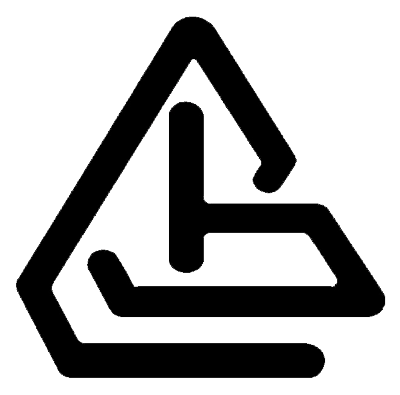
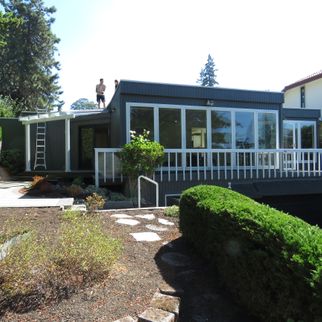
.jpg)

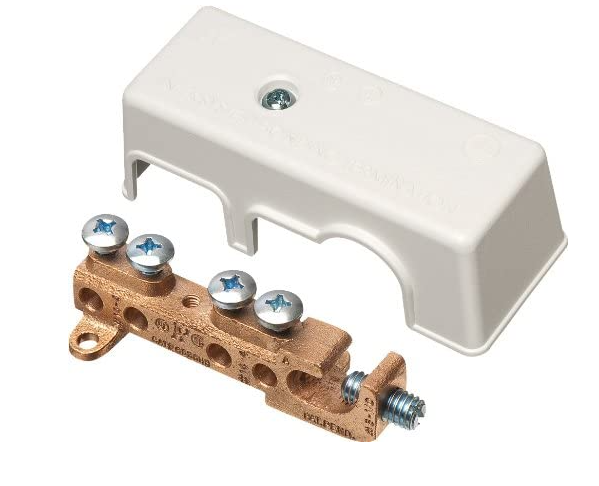
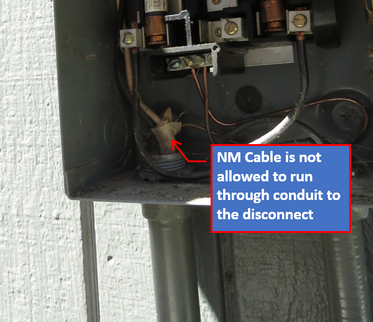
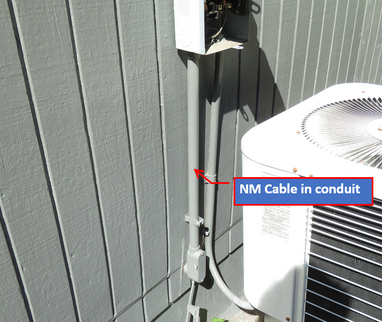
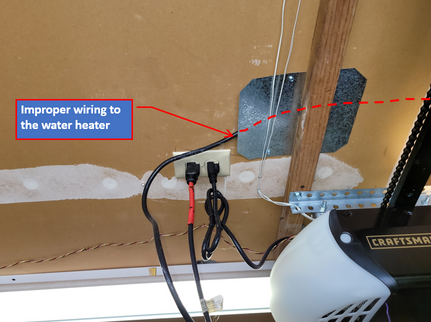
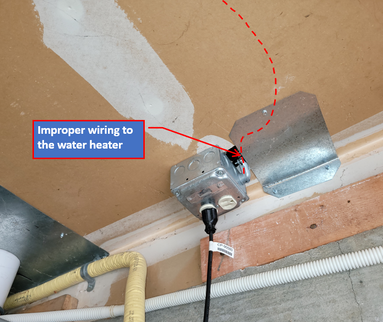


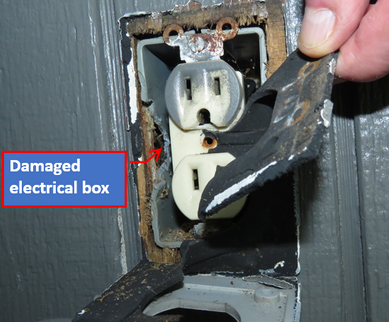
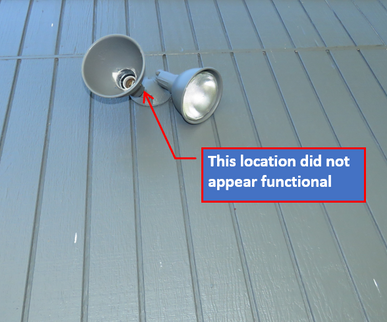
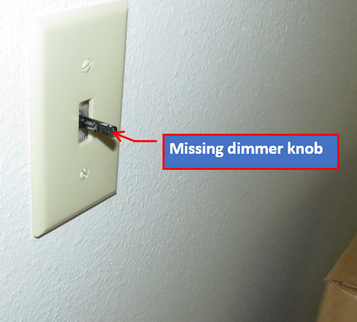
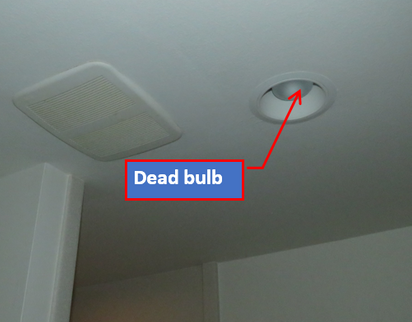
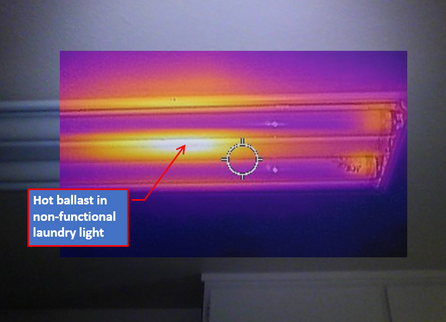
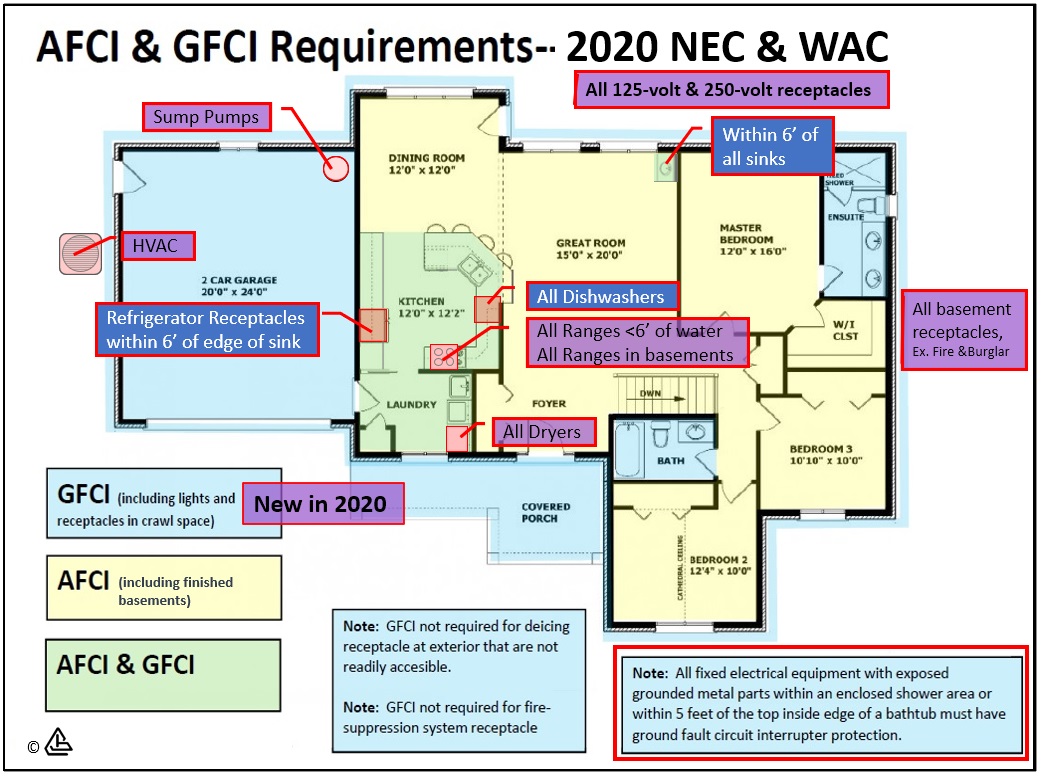
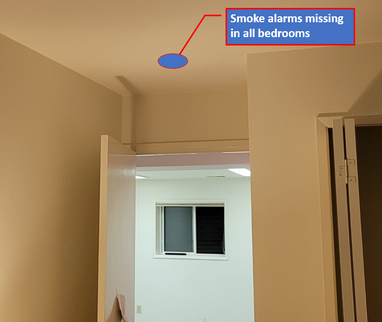
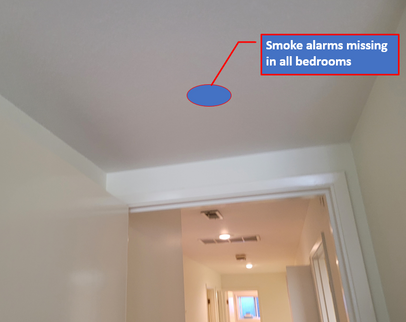
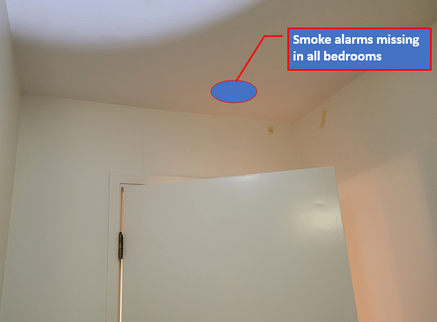


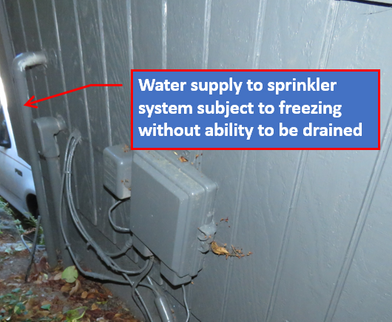
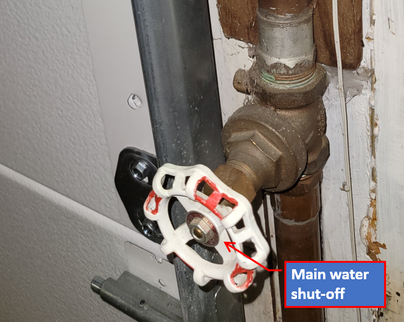
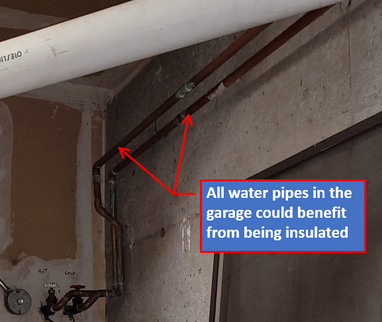
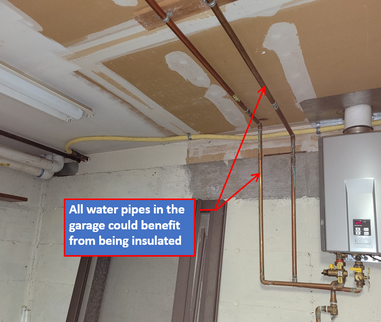
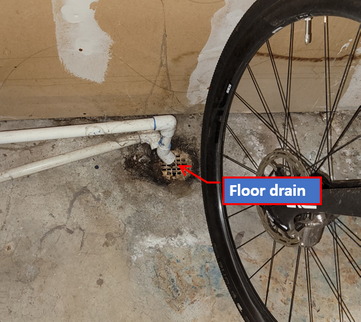
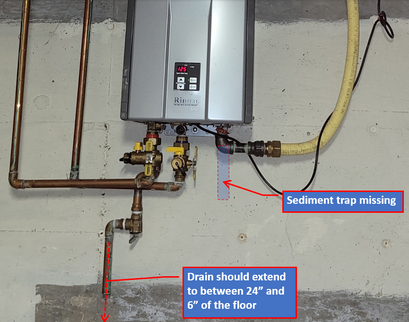
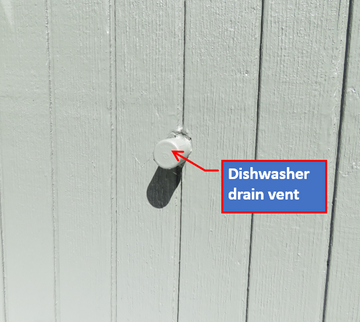
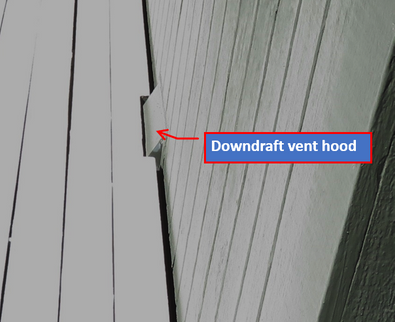
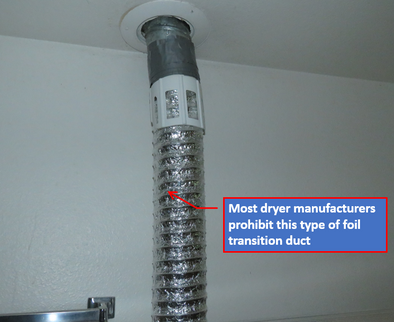
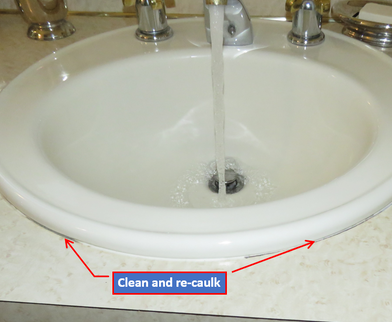
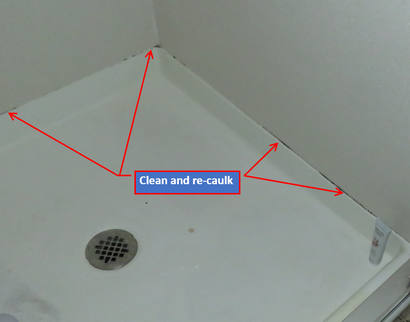
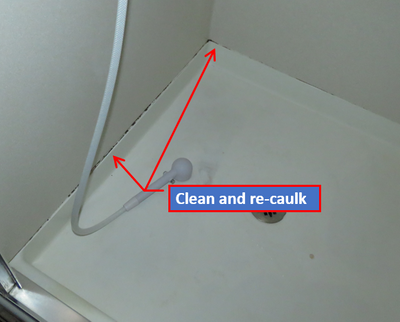
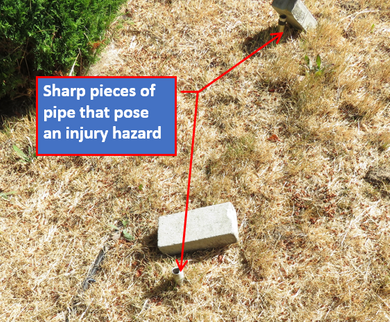
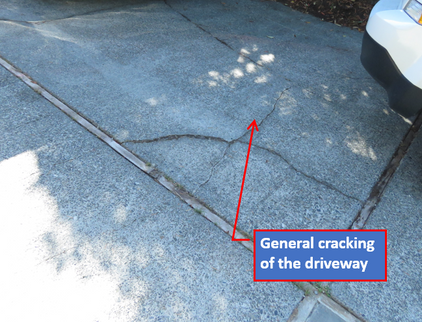
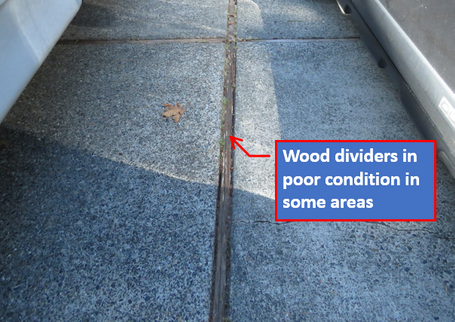
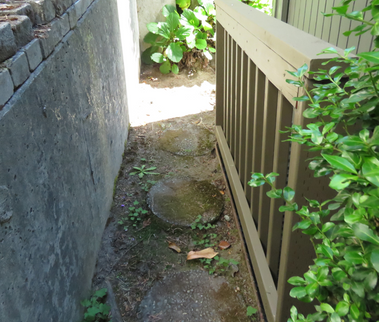
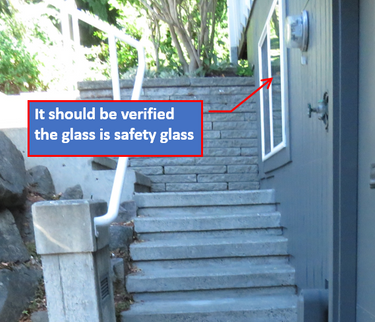
.jpg)
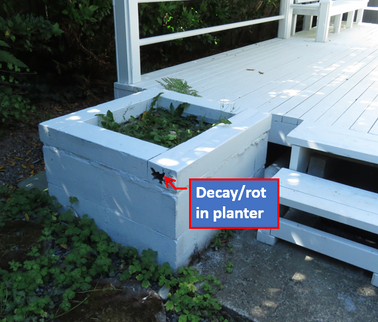
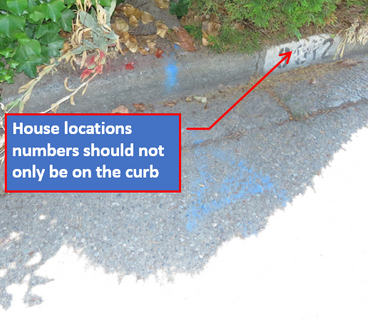
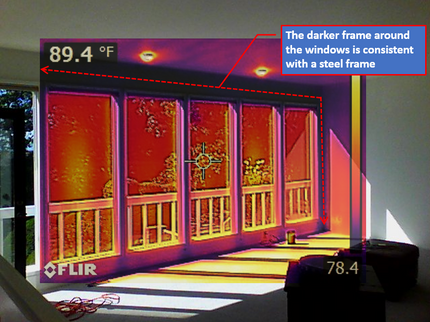
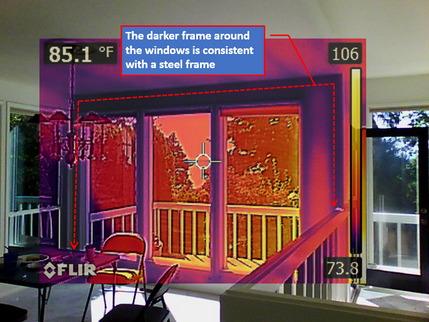
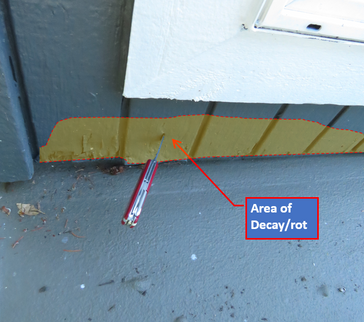
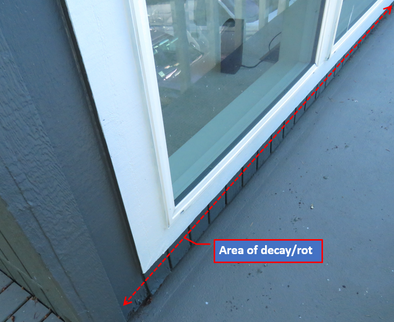
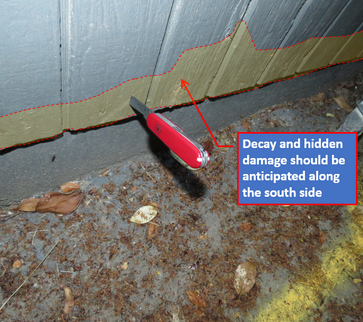
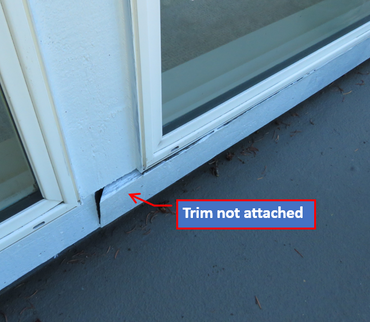

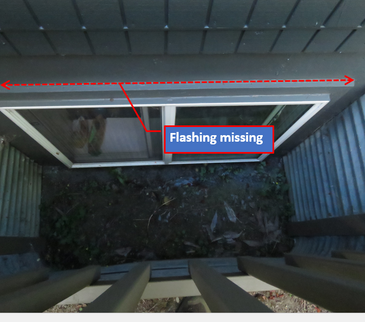
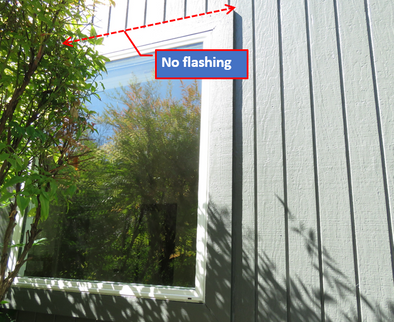
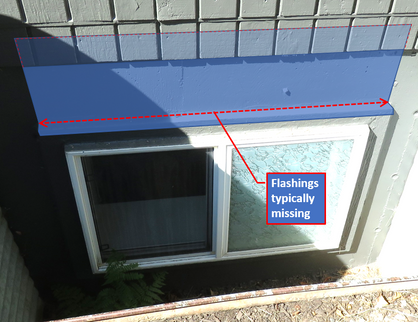
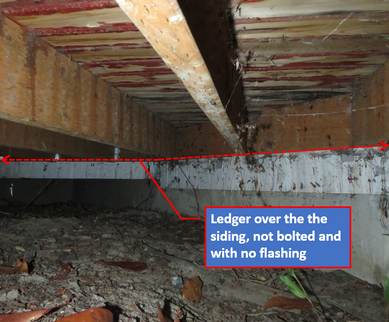
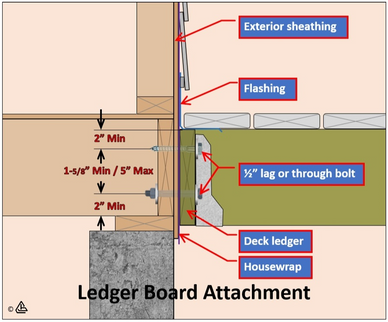
.jpg)
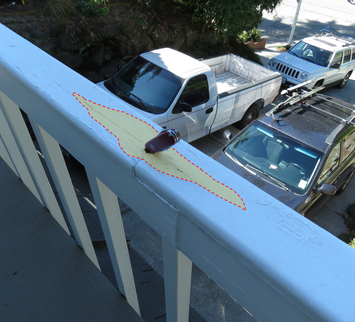

.jpg)
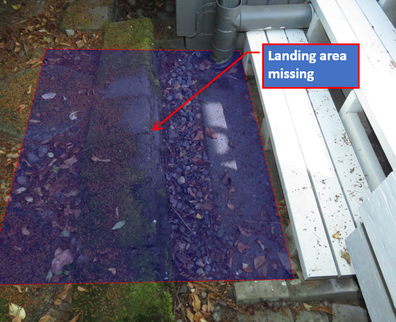
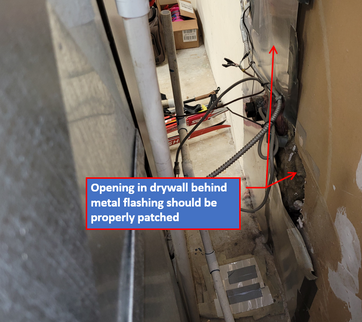
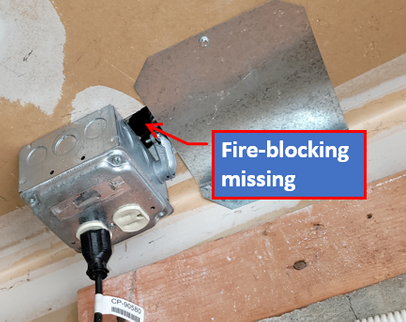
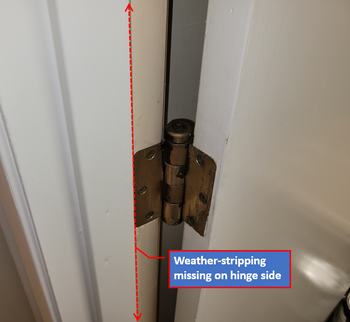
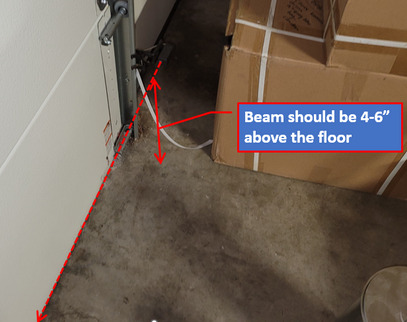
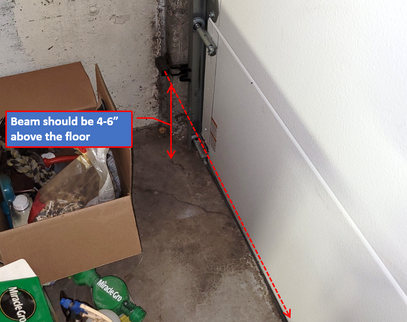

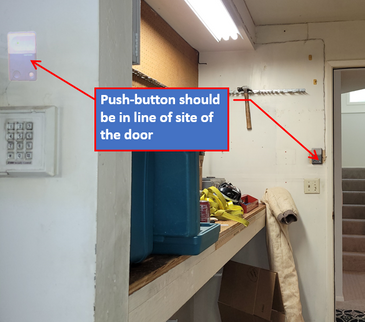


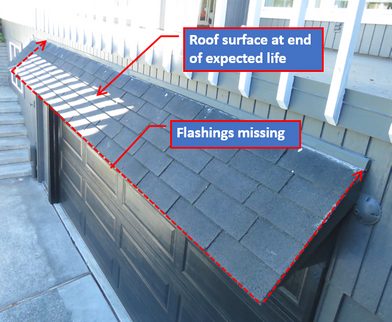
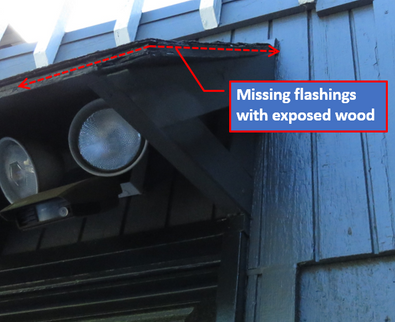
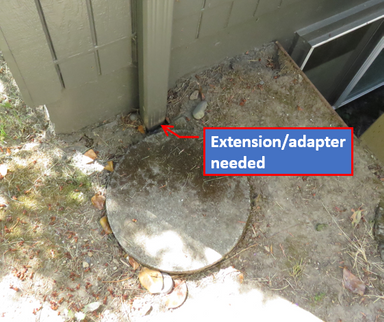
 (1) (1).jpg)
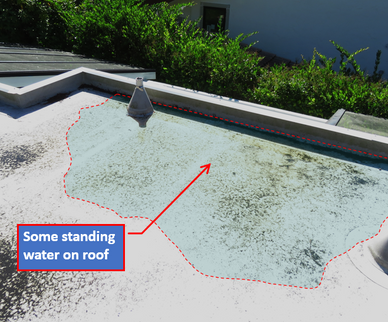
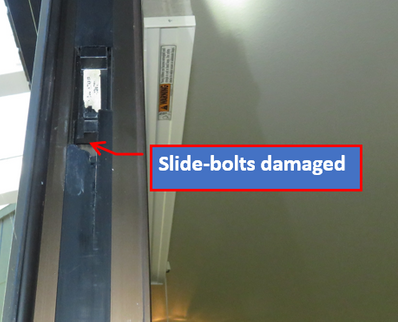
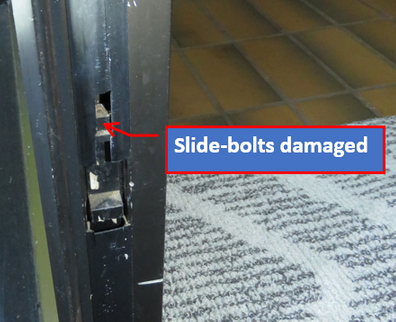

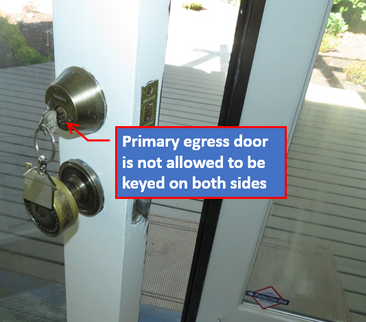
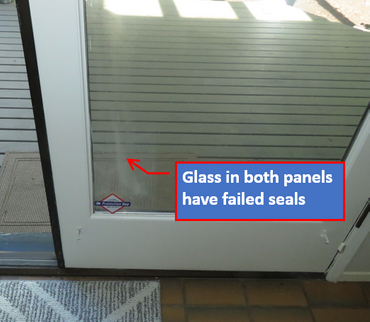
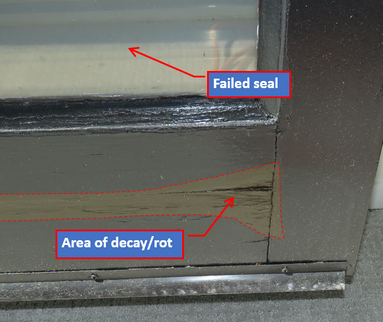
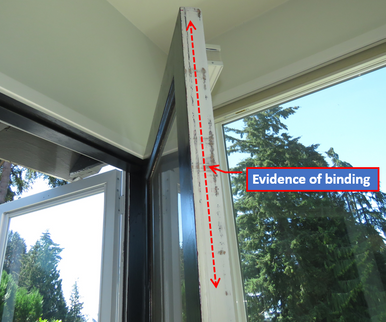
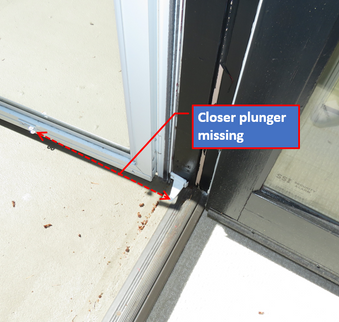
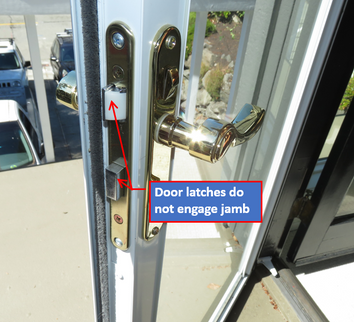
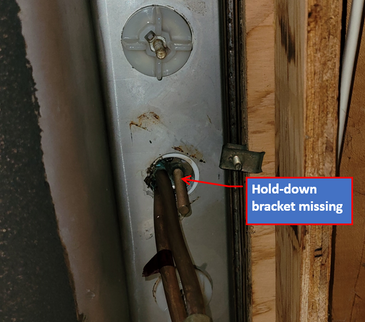


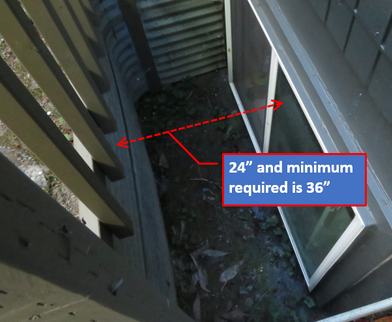
.jpg)
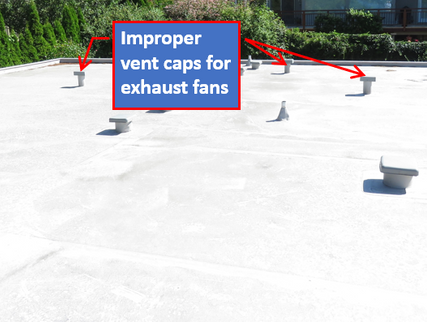
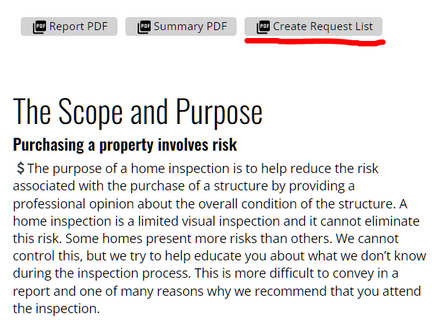

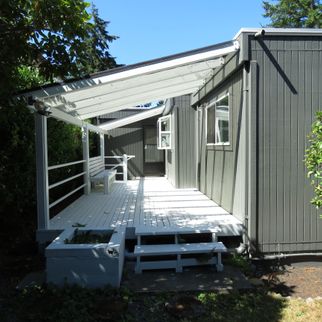

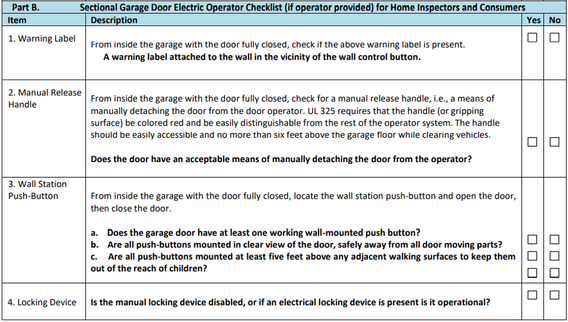

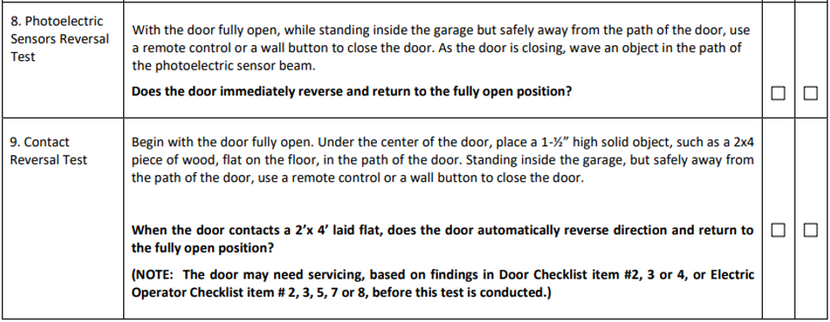
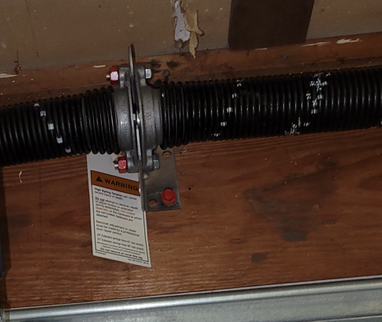


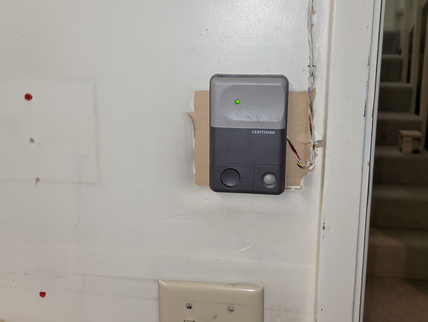
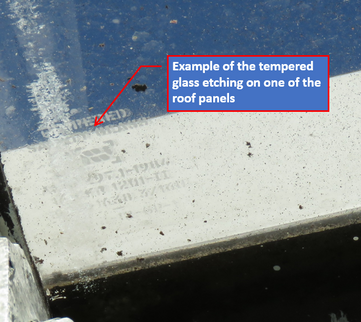

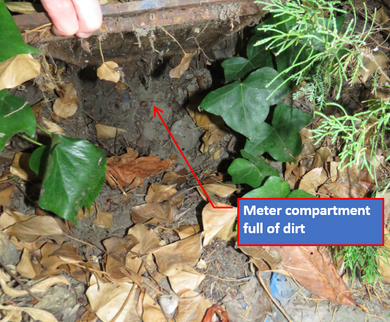
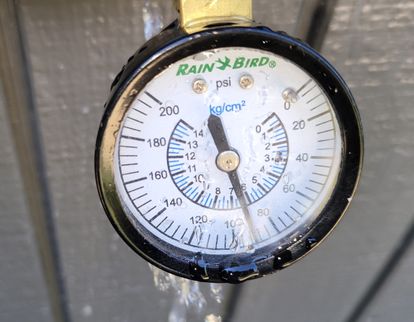
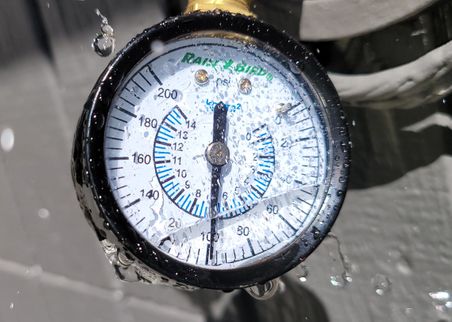
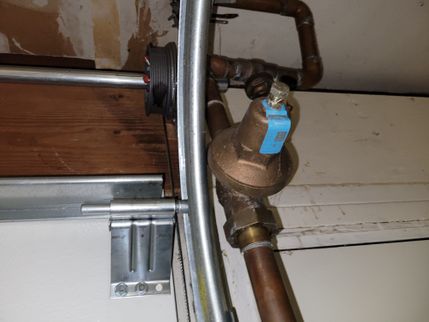
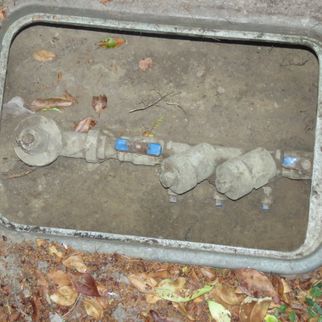
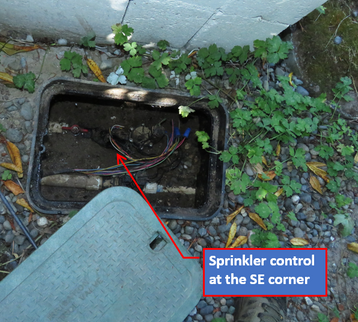
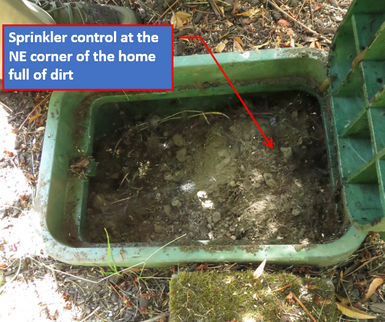
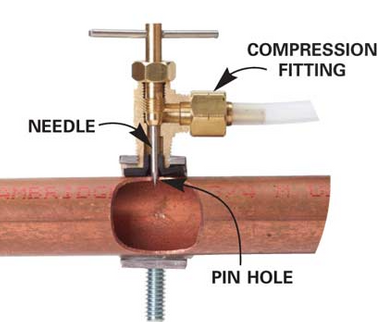
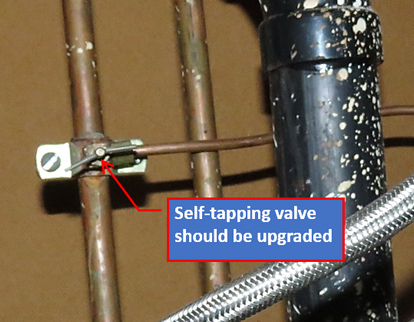
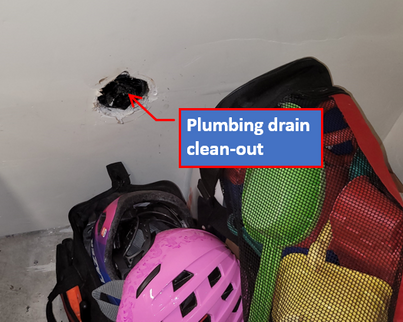
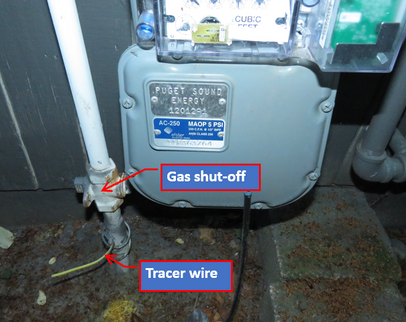
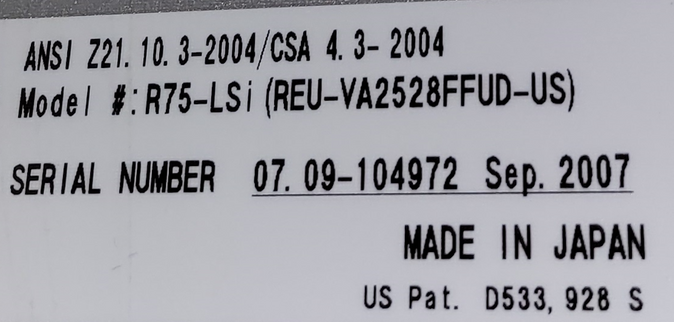
 (2) (1) (2) (1).jpg)
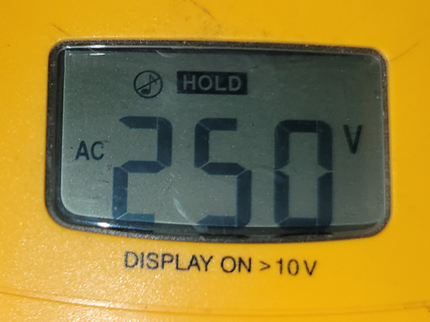
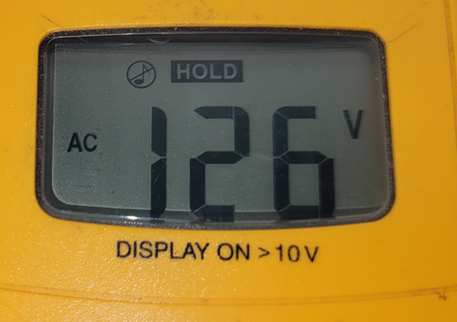
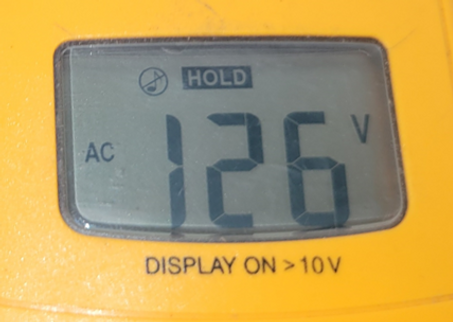
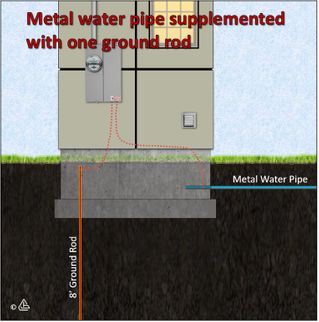
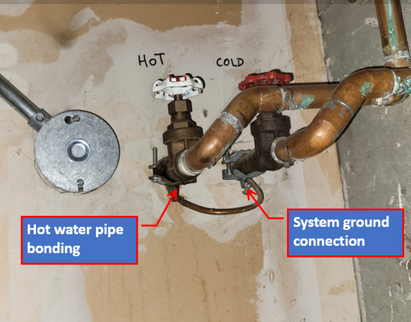


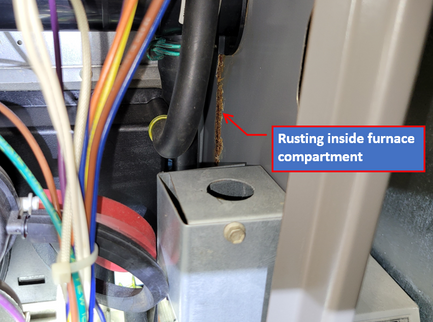
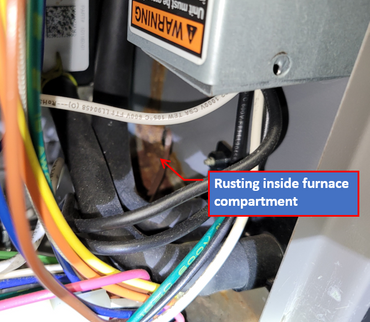
.jpg)

